Quick filters:
Halabja Stock Photos and Images
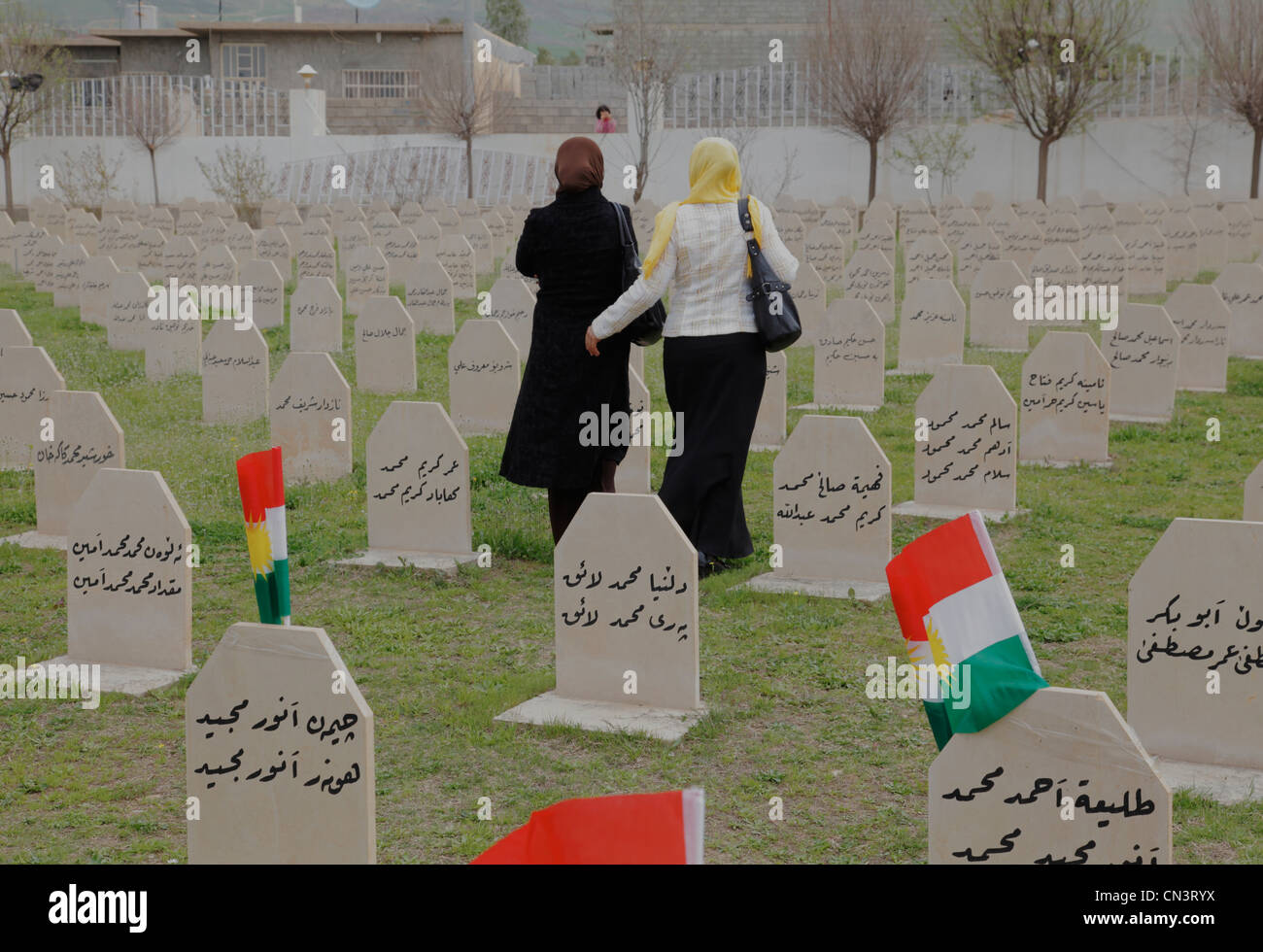 A memorial of Halabja in Iraqi Kurdistan. In marsh 16: th 1988 the city was attacked by Saddam Hussein's army. 5000 was killed by gas. Operation Anfal Stock Photohttps://www.alamy.com/image-license-details/?v=1https://www.alamy.com/stock-photo-a-memorial-of-halabja-in-iraqi-kurdistan-in-marsh-16-th-1988-the-city-47413182.html
A memorial of Halabja in Iraqi Kurdistan. In marsh 16: th 1988 the city was attacked by Saddam Hussein's army. 5000 was killed by gas. Operation Anfal Stock Photohttps://www.alamy.com/image-license-details/?v=1https://www.alamy.com/stock-photo-a-memorial-of-halabja-in-iraqi-kurdistan-in-marsh-16-th-1988-the-city-47413182.htmlRFCN3RYX–A memorial of Halabja in Iraqi Kurdistan. In marsh 16: th 1988 the city was attacked by Saddam Hussein's army. 5000 was killed by gas. Operation Anfal
 An old Kurdish woman with the photo of one of her relative killed during the 1988 chemical attack in Halabja, Iraq. Stock Photohttps://www.alamy.com/image-license-details/?v=1https://www.alamy.com/stock-photo-an-old-kurdish-woman-with-the-photo-of-one-of-her-relative-killed-23220202.html
An old Kurdish woman with the photo of one of her relative killed during the 1988 chemical attack in Halabja, Iraq. Stock Photohttps://www.alamy.com/image-license-details/?v=1https://www.alamy.com/stock-photo-an-old-kurdish-woman-with-the-photo-of-one-of-her-relative-killed-23220202.htmlRMB9NNGX–An old Kurdish woman with the photo of one of her relative killed during the 1988 chemical attack in Halabja, Iraq.
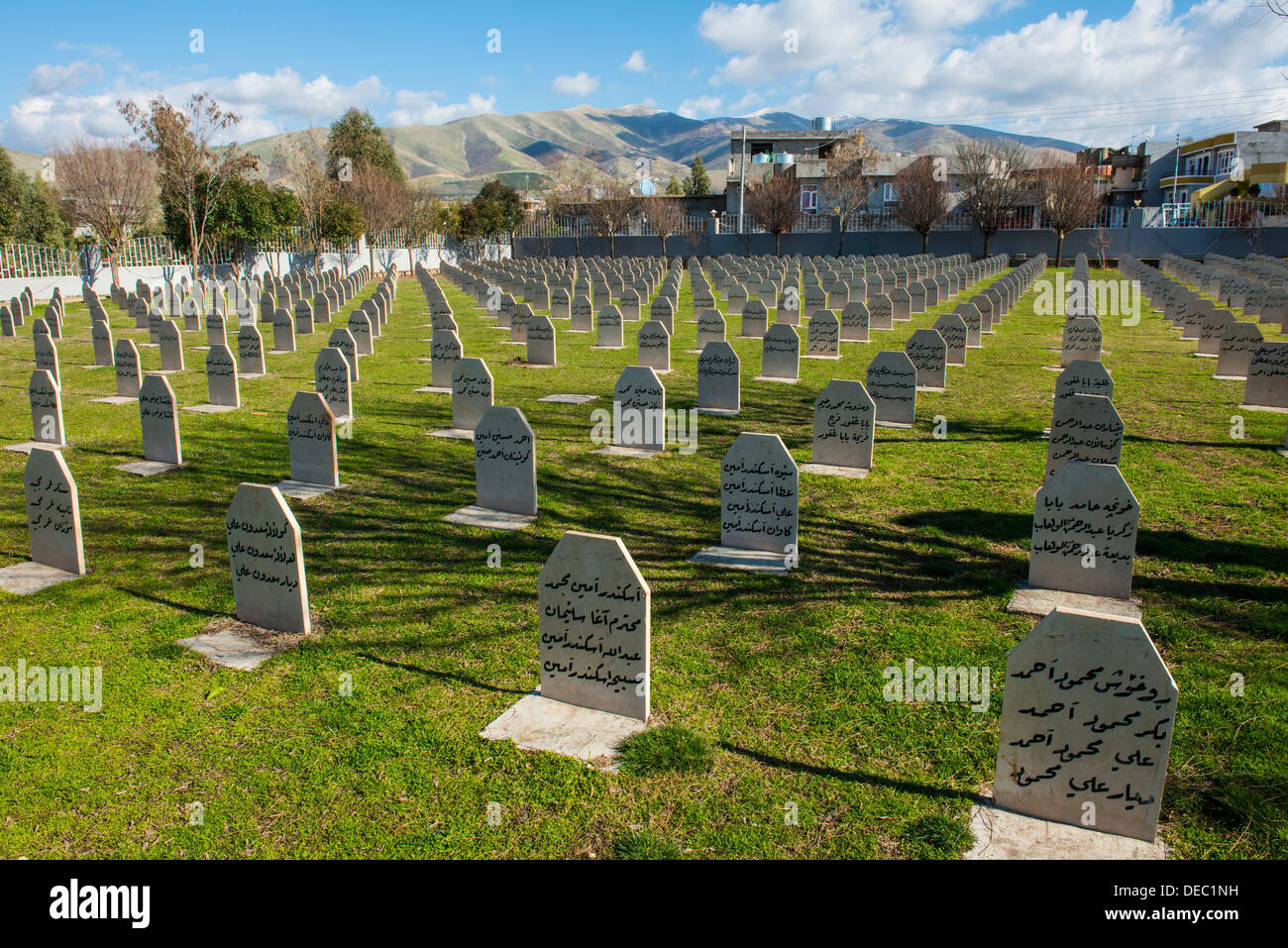 Graves on Halabja cemetery, Halabja, Iraqi Kurdistan, Iraq Stock Photohttps://www.alamy.com/image-license-details/?v=1https://www.alamy.com/graves-on-halabja-cemetery-halabja-iraqi-kurdistan-iraq-image60501101.html
Graves on Halabja cemetery, Halabja, Iraqi Kurdistan, Iraq Stock Photohttps://www.alamy.com/image-license-details/?v=1https://www.alamy.com/graves-on-halabja-cemetery-halabja-iraqi-kurdistan-iraq-image60501101.htmlRMDEC1NH–Graves on Halabja cemetery, Halabja, Iraqi Kurdistan, Iraq
 Halabja Memorial Monument in Iraqi Kurdistan Stock Photohttps://www.alamy.com/image-license-details/?v=1https://www.alamy.com/halabja-memorial-monument-in-iraqi-kurdistan-image628727749.html
Halabja Memorial Monument in Iraqi Kurdistan Stock Photohttps://www.alamy.com/image-license-details/?v=1https://www.alamy.com/halabja-memorial-monument-in-iraqi-kurdistan-image628727749.htmlRM2YEW0JD–Halabja Memorial Monument in Iraqi Kurdistan
 The photograph from Halabja shows Edwin Newman, a member of the RAF, during his service in Iraq in the Middle East. The image highlights the role of the Royal Air Force in the region during military operations. RAF personnel contributed significantly to peacekeeping and humanitarian efforts during the conflict in Iraq. Stock Photohttps://www.alamy.com/image-license-details/?v=1https://www.alamy.com/the-photograph-from-halabja-shows-edwin-newman-a-member-of-the-raf-image69085378.html
The photograph from Halabja shows Edwin Newman, a member of the RAF, during his service in Iraq in the Middle East. The image highlights the role of the Royal Air Force in the region during military operations. RAF personnel contributed significantly to peacekeeping and humanitarian efforts during the conflict in Iraq. Stock Photohttps://www.alamy.com/image-license-details/?v=1https://www.alamy.com/the-photograph-from-halabja-shows-edwin-newman-a-member-of-the-raf-image69085378.htmlRME0B32X–The photograph from Halabja shows Edwin Newman, a member of the RAF, during his service in Iraq in the Middle East. The image highlights the role of the Royal Air Force in the region during military operations. RAF personnel contributed significantly to peacekeeping and humanitarian efforts during the conflict in Iraq.
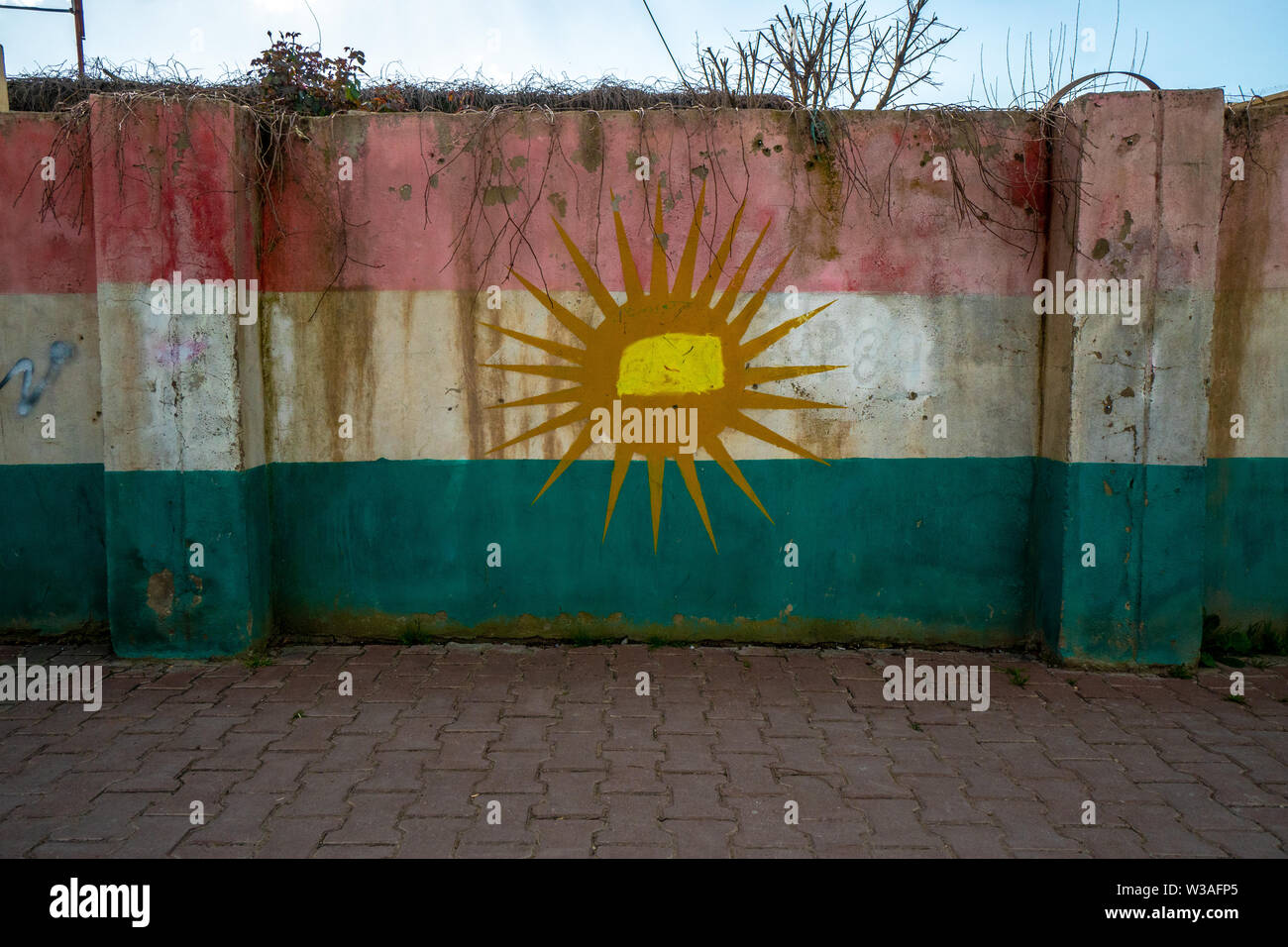 Kurdistan flag painted on a wall in Halabja, Iraq Stock Photohttps://www.alamy.com/image-license-details/?v=1https://www.alamy.com/kurdistan-flag-painted-on-a-wall-in-halabja-iraq-image260231389.html
Kurdistan flag painted on a wall in Halabja, Iraq Stock Photohttps://www.alamy.com/image-license-details/?v=1https://www.alamy.com/kurdistan-flag-painted-on-a-wall-in-halabja-iraq-image260231389.htmlRFW3AFP5–Kurdistan flag painted on a wall in Halabja, Iraq
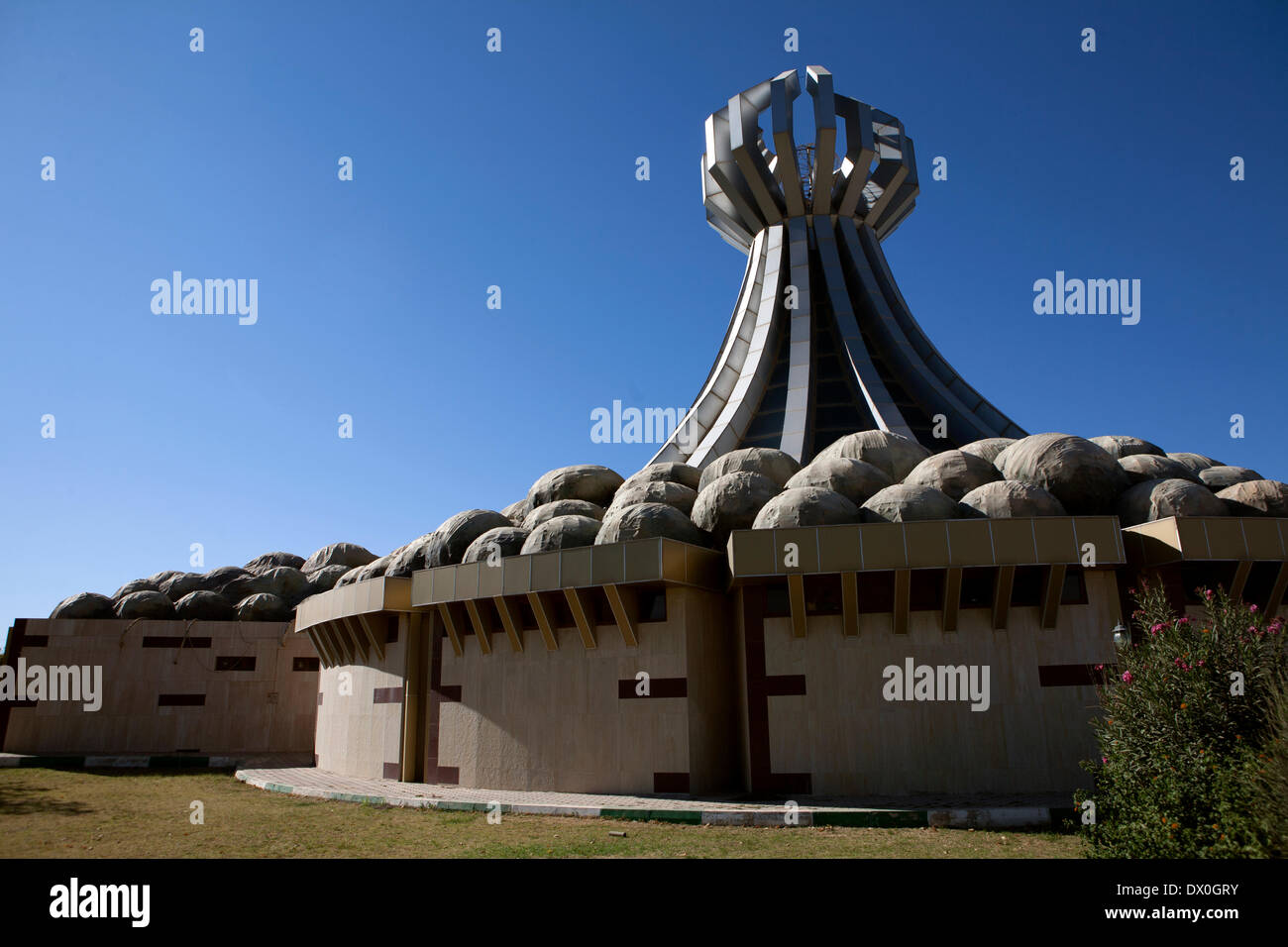 Halabja, Suleimania, IRAQ -- The symbolic cemetery erected for the victims of Halabja massacre on 21 October, 2011. Halabja, a Kurdish town in Northern Iraq was bombed with chemical agents by the Saddam regime in efforts to decimate the Kurdish population in the North on March 16, 1988. Photo by Bikem Ekberzade Stock Photohttps://www.alamy.com/image-license-details/?v=1https://www.alamy.com/halabja-suleimania-iraq-the-symbolic-cemetery-erected-for-the-victims-image67625375.html
Halabja, Suleimania, IRAQ -- The symbolic cemetery erected for the victims of Halabja massacre on 21 October, 2011. Halabja, a Kurdish town in Northern Iraq was bombed with chemical agents by the Saddam regime in efforts to decimate the Kurdish population in the North on March 16, 1988. Photo by Bikem Ekberzade Stock Photohttps://www.alamy.com/image-license-details/?v=1https://www.alamy.com/halabja-suleimania-iraq-the-symbolic-cemetery-erected-for-the-victims-image67625375.htmlRMDX0GRY–Halabja, Suleimania, IRAQ -- The symbolic cemetery erected for the victims of Halabja massacre on 21 October, 2011. Halabja, a Kurdish town in Northern Iraq was bombed with chemical agents by the Saddam regime in efforts to decimate the Kurdish population in the North on March 16, 1988. Photo by Bikem Ekberzade
 Halabja Monument And Peace Museum, memorial of the chemical attack in Halabja, Iraq Stock Photohttps://www.alamy.com/image-license-details/?v=1https://www.alamy.com/halabja-monument-and-peace-museum-memorial-of-the-chemical-attack-in-halabja-iraq-image682386102.html
Halabja Monument And Peace Museum, memorial of the chemical attack in Halabja, Iraq Stock Photohttps://www.alamy.com/image-license-details/?v=1https://www.alamy.com/halabja-monument-and-peace-museum-memorial-of-the-chemical-attack-in-halabja-iraq-image682386102.htmlRF3BJ5AC6–Halabja Monument And Peace Museum, memorial of the chemical attack in Halabja, Iraq
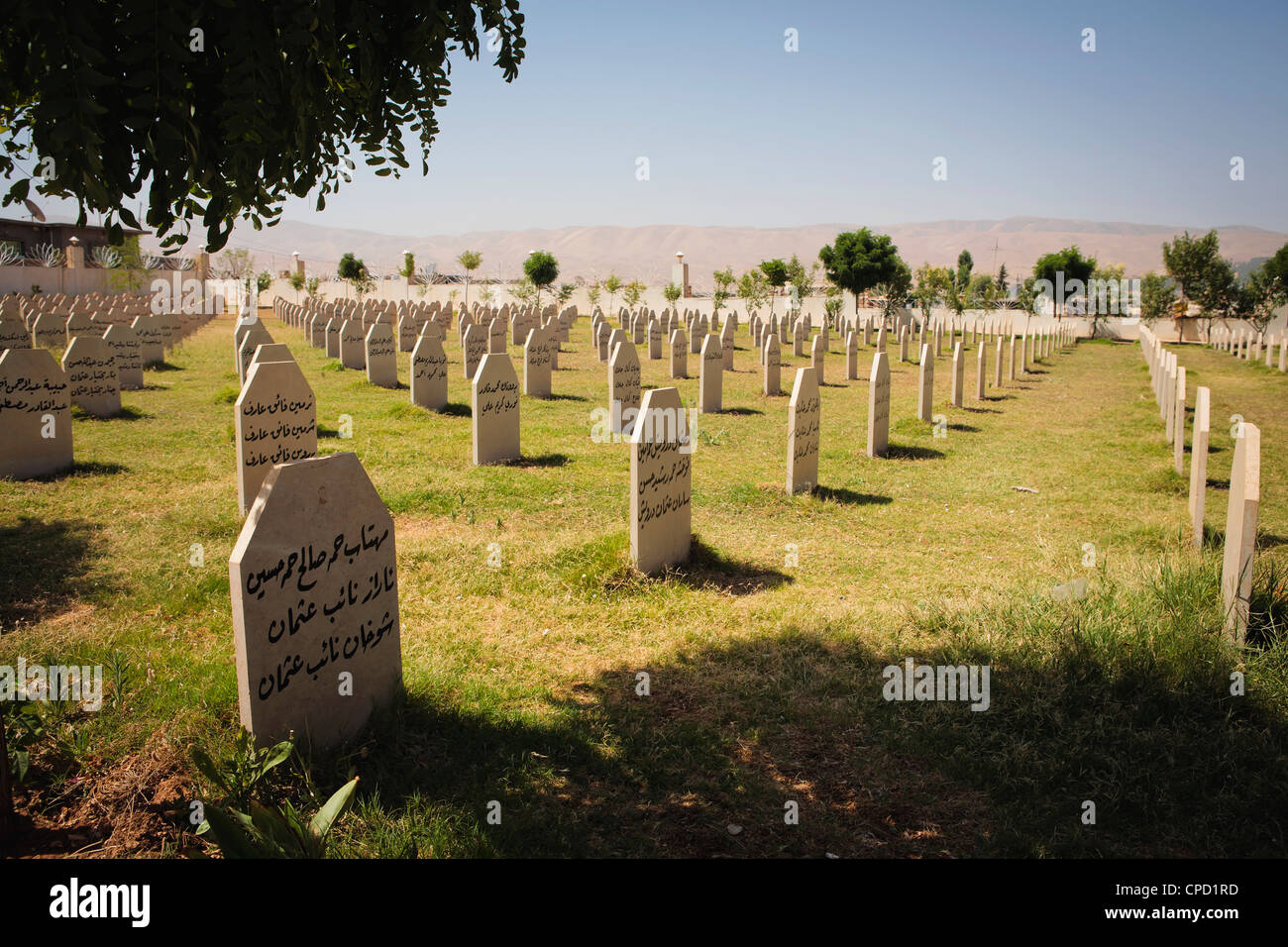 Memorial cemetery to the victims of Saddam Hussein's chemical gas attack on the Kurdish town of Halabja, Iraq, Middle East Stock Photohttps://www.alamy.com/image-license-details/?v=1https://www.alamy.com/stock-photo-memorial-cemetery-to-the-victims-of-saddam-husseins-chemical-gas-attack-48229985.html
Memorial cemetery to the victims of Saddam Hussein's chemical gas attack on the Kurdish town of Halabja, Iraq, Middle East Stock Photohttps://www.alamy.com/image-license-details/?v=1https://www.alamy.com/stock-photo-memorial-cemetery-to-the-victims-of-saddam-husseins-chemical-gas-attack-48229985.htmlRMCPD1RD–Memorial cemetery to the victims of Saddam Hussein's chemical gas attack on the Kurdish town of Halabja, Iraq, Middle East
 Halabja, Iraq - March 25, 2018: Monument and museum in Halabja, remembrance of the victims of the chemical attack, the massacre against the Kurdish pe Stock Photohttps://www.alamy.com/image-license-details/?v=1https://www.alamy.com/halabja-iraq-march-25-2018-monument-and-museum-in-halabja-remembrance-of-the-victims-of-the-chemical-attack-the-massacre-against-the-kurdish-pe-image462258825.html
Halabja, Iraq - March 25, 2018: Monument and museum in Halabja, remembrance of the victims of the chemical attack, the massacre against the Kurdish pe Stock Photohttps://www.alamy.com/image-license-details/?v=1https://www.alamy.com/halabja-iraq-march-25-2018-monument-and-museum-in-halabja-remembrance-of-the-victims-of-the-chemical-attack-the-massacre-against-the-kurdish-pe-image462258825.htmlRF2HT1KRN–Halabja, Iraq - March 25, 2018: Monument and museum in Halabja, remembrance of the victims of the chemical attack, the massacre against the Kurdish pe
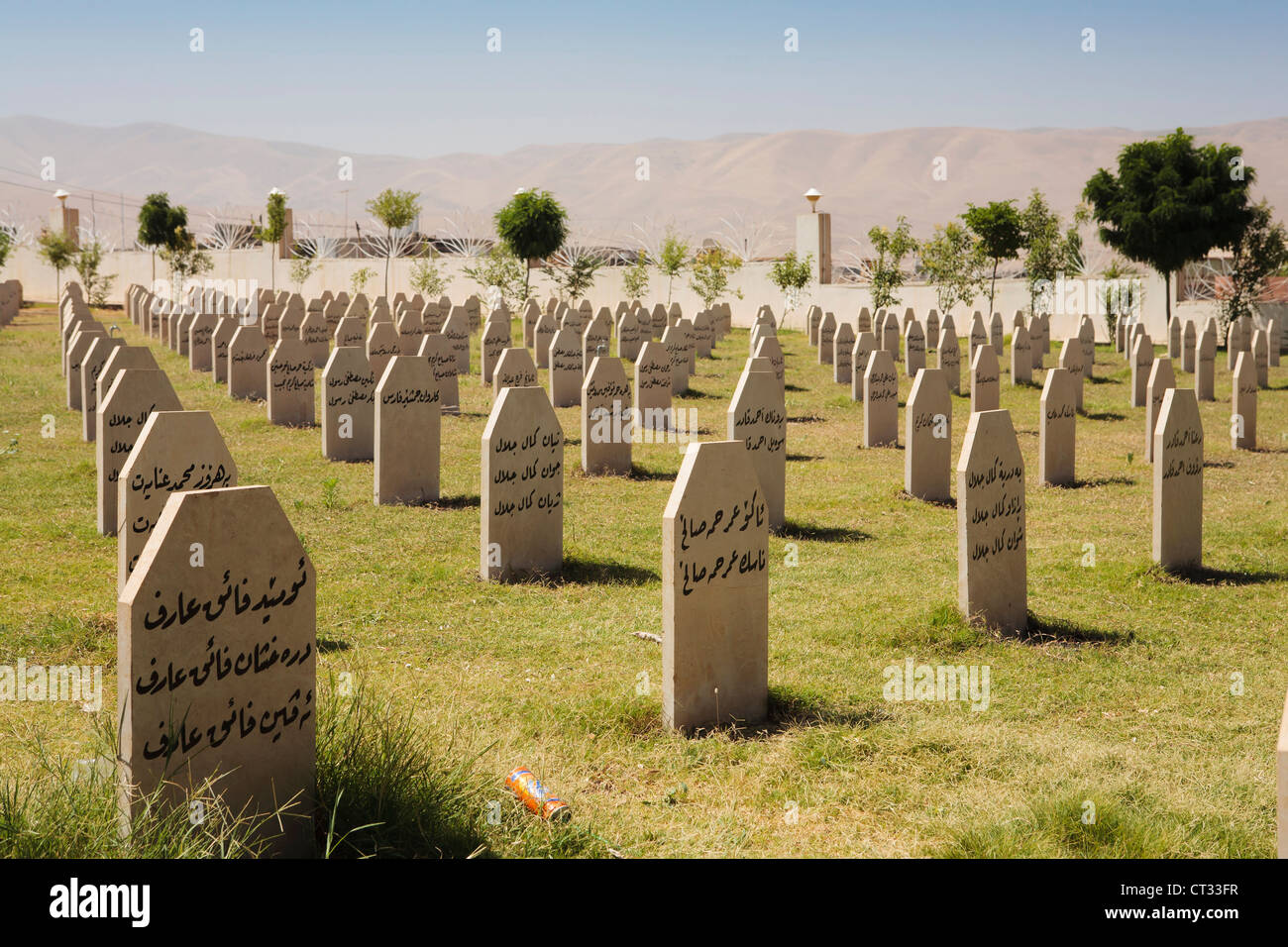 Halabja cemetery, As-Sulaymaniyyah, Iraq Stock Photohttps://www.alamy.com/image-license-details/?v=1https://www.alamy.com/stock-photo-halabja-cemetery-as-sulaymaniyyah-iraq-49241131.html
Halabja cemetery, As-Sulaymaniyyah, Iraq Stock Photohttps://www.alamy.com/image-license-details/?v=1https://www.alamy.com/stock-photo-halabja-cemetery-as-sulaymaniyyah-iraq-49241131.htmlRFCT33FR–Halabja cemetery, As-Sulaymaniyyah, Iraq
 A woman walks past photos of victims of the Halabja chemical attack.The 33rd anniversary of the chemical attack carried out by the Iraqi government on March 16, 1988 on the city of Halabja in the Kurdistan Region, which killed nearly 5000 people and injured 10000 most of them civilians. Thousands of the city's residents died in the year following the attack due to health complications and due to diseases and birth defects. Stock Photohttps://www.alamy.com/image-license-details/?v=1https://www.alamy.com/a-woman-walks-past-photos-of-victims-of-the-halabja-chemical-attackthe-33rd-anniversary-of-the-chemical-attack-carried-out-by-the-iraqi-government-on-march-16-1988-on-the-city-of-halabja-in-the-kurdistan-region-which-killed-nearly-5000-people-and-injured-10000-most-of-them-civilians-thousands-of-the-citys-residents-died-in-the-year-following-the-attack-due-to-health-complications-and-due-to-diseases-and-birth-defects-image415223127.html
A woman walks past photos of victims of the Halabja chemical attack.The 33rd anniversary of the chemical attack carried out by the Iraqi government on March 16, 1988 on the city of Halabja in the Kurdistan Region, which killed nearly 5000 people and injured 10000 most of them civilians. Thousands of the city's residents died in the year following the attack due to health complications and due to diseases and birth defects. Stock Photohttps://www.alamy.com/image-license-details/?v=1https://www.alamy.com/a-woman-walks-past-photos-of-victims-of-the-halabja-chemical-attackthe-33rd-anniversary-of-the-chemical-attack-carried-out-by-the-iraqi-government-on-march-16-1988-on-the-city-of-halabja-in-the-kurdistan-region-which-killed-nearly-5000-people-and-injured-10000-most-of-them-civilians-thousands-of-the-citys-residents-died-in-the-year-following-the-attack-due-to-health-complications-and-due-to-diseases-and-birth-defects-image415223127.htmlRM2F3F19B–A woman walks past photos of victims of the Halabja chemical attack.The 33rd anniversary of the chemical attack carried out by the Iraqi government on March 16, 1988 on the city of Halabja in the Kurdistan Region, which killed nearly 5000 people and injured 10000 most of them civilians. Thousands of the city's residents died in the year following the attack due to health complications and due to diseases and birth defects.
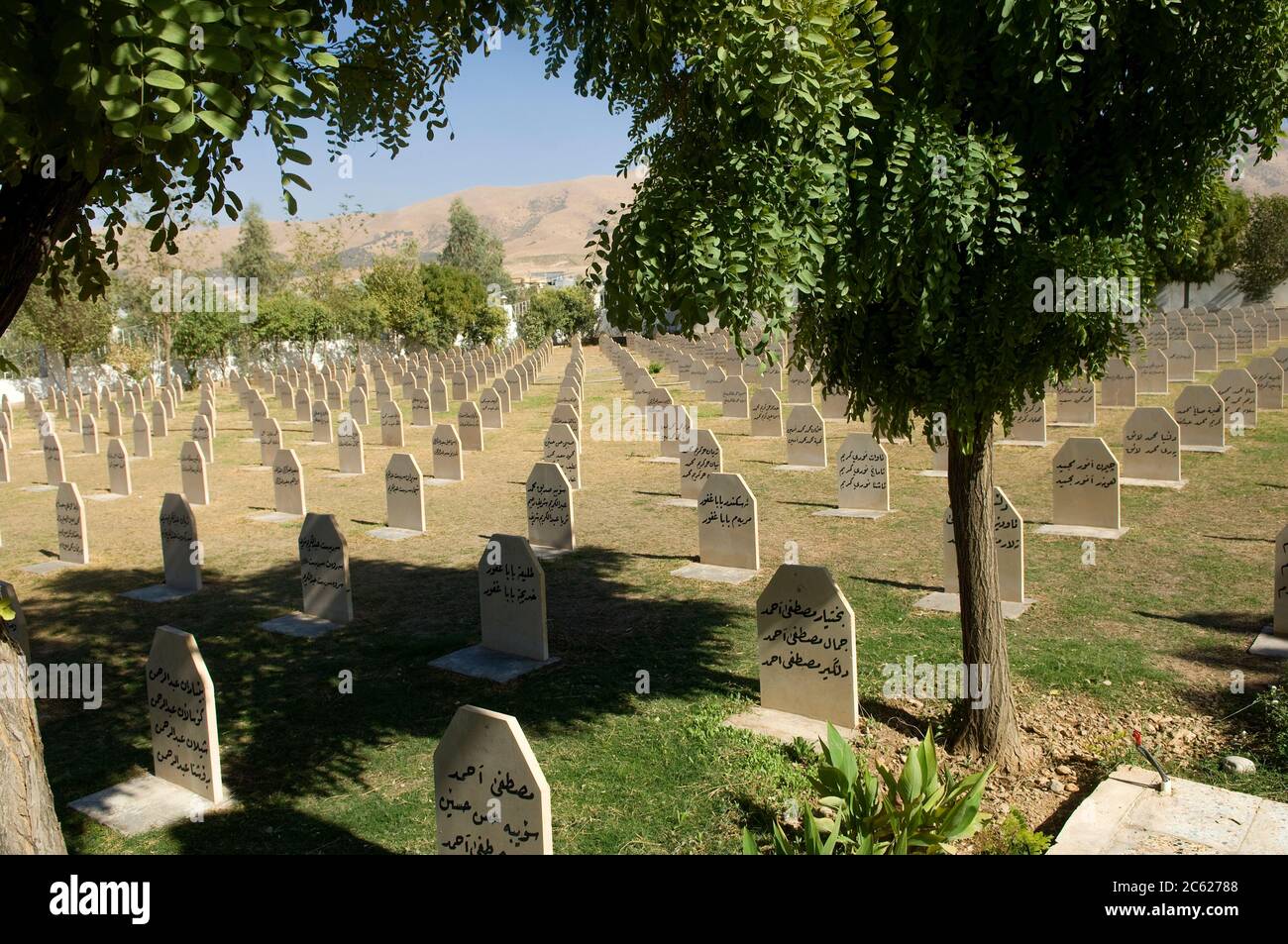 Halabja, North Iraq. October 5th 2009 Graves of those who lost their lives in the 1988 Halabja gas attack, Northern Kurdish Iraq. Stock Photohttps://www.alamy.com/image-license-details/?v=1https://www.alamy.com/halabja-north-iraq-october-5th-2009-graves-of-those-who-lost-their-lives-in-the-1988-halabja-gas-attack-northern-kurdish-iraq-image365155288.html
Halabja, North Iraq. October 5th 2009 Graves of those who lost their lives in the 1988 Halabja gas attack, Northern Kurdish Iraq. Stock Photohttps://www.alamy.com/image-license-details/?v=1https://www.alamy.com/halabja-north-iraq-october-5th-2009-graves-of-those-who-lost-their-lives-in-the-1988-halabja-gas-attack-northern-kurdish-iraq-image365155288.htmlRM2C62788–Halabja, North Iraq. October 5th 2009 Graves of those who lost their lives in the 1988 Halabja gas attack, Northern Kurdish Iraq.
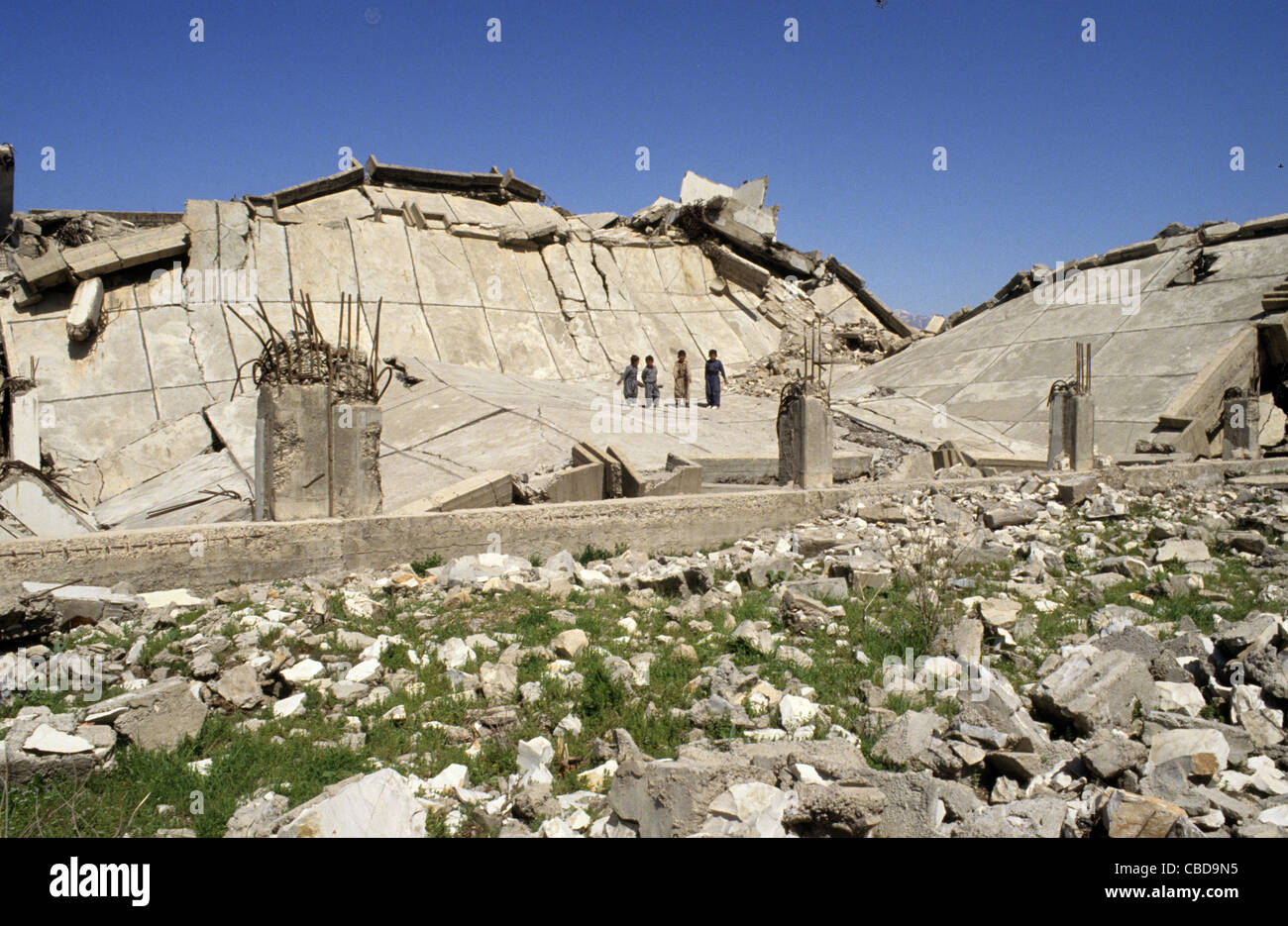 Halabja, Kurdish town bombed with chemical weapons by Saddam Hussein's forces, March 16 1988 killing more than 5,000 Iraq Kurds Stock Photohttps://www.alamy.com/image-license-details/?v=1https://www.alamy.com/stock-photo-halabja-kurdish-town-bombed-with-chemical-weapons-by-saddam-husseins-41474977.html
Halabja, Kurdish town bombed with chemical weapons by Saddam Hussein's forces, March 16 1988 killing more than 5,000 Iraq Kurds Stock Photohttps://www.alamy.com/image-license-details/?v=1https://www.alamy.com/stock-photo-halabja-kurdish-town-bombed-with-chemical-weapons-by-saddam-husseins-41474977.htmlRMCBD9N5–Halabja, Kurdish town bombed with chemical weapons by Saddam Hussein's forces, March 16 1988 killing more than 5,000 Iraq Kurds
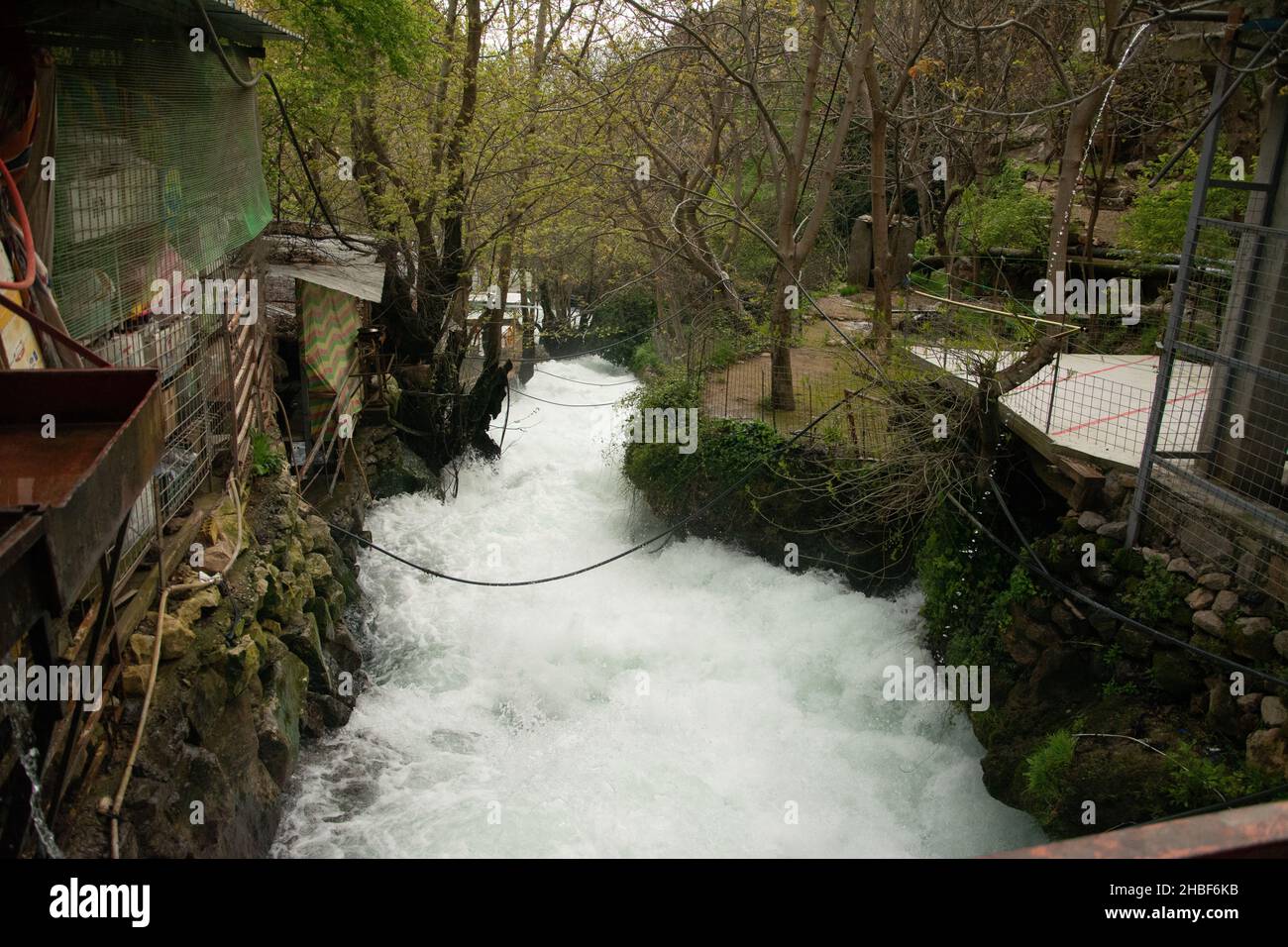 River in the Kurdish mountains in northern Iraq near suleymania Stock Photohttps://www.alamy.com/image-license-details/?v=1https://www.alamy.com/river-in-the-kurdish-mountains-in-northern-iraq-near-suleymania-image454565311.html
River in the Kurdish mountains in northern Iraq near suleymania Stock Photohttps://www.alamy.com/image-license-details/?v=1https://www.alamy.com/river-in-the-kurdish-mountains-in-northern-iraq-near-suleymania-image454565311.htmlRF2HBF6KB–River in the Kurdish mountains in northern Iraq near suleymania
 Gabriel Gauffre / Le Pictorium - Bashur - 19/3/2021 - Iraq / Iraqi Kurdistan / Erbil - A bomb transformed into a flowerpot, at the Halabja memorial. From the ashes of the 2003 American invasion of Iraq and the toppling of Saddam Hussein's regime, Iraq's Kurds managed to wrestle a form of relative independence. Still technically part of Iraq, Iraqi Kurdistan, in the north of the country, enjoys a heightened level of independence. To the Kurds, it is Bas?r (Bahsur), the southern province of the 4 composing what could one day be their own country, Kurdistan. Bashur is a territory that h Stock Photohttps://www.alamy.com/image-license-details/?v=1https://www.alamy.com/gabriel-gauffre-le-pictorium-bashur-1932021-iraq-iraqi-kurdistan-erbil-a-bomb-transformed-into-a-flowerpot-at-the-halabja-memorial-from-the-ashes-of-the-2003-american-invasion-of-iraq-and-the-toppling-of-saddam-husseins-regime-iraqs-kurds-managed-to-wrestle-a-form-of-relative-independence-still-technically-part-of-iraq-iraqi-kurdistan-in-the-north-of-the-country-enjoys-a-heightened-level-of-independence-to-the-kurds-it-is-basr-bahsur-the-southern-province-of-the-4-composing-what-could-one-day-be-their-own-country-kurdistan-bashur-is-a-territory-that-h-image556278883.html
Gabriel Gauffre / Le Pictorium - Bashur - 19/3/2021 - Iraq / Iraqi Kurdistan / Erbil - A bomb transformed into a flowerpot, at the Halabja memorial. From the ashes of the 2003 American invasion of Iraq and the toppling of Saddam Hussein's regime, Iraq's Kurds managed to wrestle a form of relative independence. Still technically part of Iraq, Iraqi Kurdistan, in the north of the country, enjoys a heightened level of independence. To the Kurds, it is Bas?r (Bahsur), the southern province of the 4 composing what could one day be their own country, Kurdistan. Bashur is a territory that h Stock Photohttps://www.alamy.com/image-license-details/?v=1https://www.alamy.com/gabriel-gauffre-le-pictorium-bashur-1932021-iraq-iraqi-kurdistan-erbil-a-bomb-transformed-into-a-flowerpot-at-the-halabja-memorial-from-the-ashes-of-the-2003-american-invasion-of-iraq-and-the-toppling-of-saddam-husseins-regime-iraqs-kurds-managed-to-wrestle-a-form-of-relative-independence-still-technically-part-of-iraq-iraqi-kurdistan-in-the-north-of-the-country-enjoys-a-heightened-level-of-independence-to-the-kurds-it-is-basr-bahsur-the-southern-province-of-the-4-composing-what-could-one-day-be-their-own-country-kurdistan-bashur-is-a-territory-that-h-image556278883.htmlRM2R90KAY–Gabriel Gauffre / Le Pictorium - Bashur - 19/3/2021 - Iraq / Iraqi Kurdistan / Erbil - A bomb transformed into a flowerpot, at the Halabja memorial. From the ashes of the 2003 American invasion of Iraq and the toppling of Saddam Hussein's regime, Iraq's Kurds managed to wrestle a form of relative independence. Still technically part of Iraq, Iraqi Kurdistan, in the north of the country, enjoys a heightened level of independence. To the Kurds, it is Bas?r (Bahsur), the southern province of the 4 composing what could one day be their own country, Kurdistan. Bashur is a territory that h
 Halabja, Iraq. 16th Mar, 2021. A view of the grave yard where the victims of the Halabja chemical attack were buried.The 33rd anniversary of the chemical attack carried out by the Iraqi government on March 16, 1988 on the city of Halabja in the Kurdistan Region, which killed nearly 5000 people and injured 10000 most of them civilians. Thousands of the city's residents died in the year following the attack due to health complications and due to diseases and birth defects. (Photo by Ismael Adnan/SOPA Images/Sipa USA) Credit: Sipa USA/Alamy Live News Stock Photohttps://www.alamy.com/image-license-details/?v=1https://www.alamy.com/halabja-iraq-16th-mar-2021-a-view-of-the-grave-yard-where-the-victims-of-the-halabja-chemical-attack-were-buriedthe-33rd-anniversary-of-the-chemical-attack-carried-out-by-the-iraqi-government-on-march-16-1988-on-the-city-of-halabja-in-the-kurdistan-region-which-killed-nearly-5000-people-and-injured-10000-most-of-them-civilians-thousands-of-the-citys-residents-died-in-the-year-following-the-attack-due-to-health-complications-and-due-to-diseases-and-birth-defects-photo-by-ismael-adnansopa-imagessipa-usa-credit-sipa-usaalamy-live-news-image415224909.html
Halabja, Iraq. 16th Mar, 2021. A view of the grave yard where the victims of the Halabja chemical attack were buried.The 33rd anniversary of the chemical attack carried out by the Iraqi government on March 16, 1988 on the city of Halabja in the Kurdistan Region, which killed nearly 5000 people and injured 10000 most of them civilians. Thousands of the city's residents died in the year following the attack due to health complications and due to diseases and birth defects. (Photo by Ismael Adnan/SOPA Images/Sipa USA) Credit: Sipa USA/Alamy Live News Stock Photohttps://www.alamy.com/image-license-details/?v=1https://www.alamy.com/halabja-iraq-16th-mar-2021-a-view-of-the-grave-yard-where-the-victims-of-the-halabja-chemical-attack-were-buriedthe-33rd-anniversary-of-the-chemical-attack-carried-out-by-the-iraqi-government-on-march-16-1988-on-the-city-of-halabja-in-the-kurdistan-region-which-killed-nearly-5000-people-and-injured-10000-most-of-them-civilians-thousands-of-the-citys-residents-died-in-the-year-following-the-attack-due-to-health-complications-and-due-to-diseases-and-birth-defects-photo-by-ismael-adnansopa-imagessipa-usa-credit-sipa-usaalamy-live-news-image415224909.htmlRM2F3F3H1–Halabja, Iraq. 16th Mar, 2021. A view of the grave yard where the victims of the Halabja chemical attack were buried.The 33rd anniversary of the chemical attack carried out by the Iraqi government on March 16, 1988 on the city of Halabja in the Kurdistan Region, which killed nearly 5000 people and injured 10000 most of them civilians. Thousands of the city's residents died in the year following the attack due to health complications and due to diseases and birth defects. (Photo by Ismael Adnan/SOPA Images/Sipa USA) Credit: Sipa USA/Alamy Live News
 March 16, 2021, Halabja, Sulayman, Iraq: A view of the grave yard where the victims of the Halabja chemical attack were buried..The 33rd anniversary of the chemical attack carried out by the Iraqi government on March 16, 1988 on the city of Halabja in the Kurdistan Region, which killed nearly 5000 people and injured 10000 most of them civilians. Thousands of the city's residents died in the year following the attack due to health complications and due to diseases and birth defects. (Credit Image: © Ismael Adnan/SOPA Images via ZUMA Wire) Stock Photohttps://www.alamy.com/image-license-details/?v=1https://www.alamy.com/march-16-2021-halabja-sulayman-iraq-a-view-of-the-grave-yard-where-the-victims-of-the-halabja-chemical-attack-were-buriedthe-33rd-anniversary-of-the-chemical-attack-carried-out-by-the-iraqi-government-on-march-16-1988-on-the-city-of-halabja-in-the-kurdistan-region-which-killed-nearly-5000-people-and-injured-10000-most-of-them-civilians-thousands-of-the-citys-residents-died-in-the-year-following-the-attack-due-to-health-complications-and-due-to-diseases-and-birth-defects-credit-image-ismael-adnansopa-images-via-zuma-wire-image694040412.html
March 16, 2021, Halabja, Sulayman, Iraq: A view of the grave yard where the victims of the Halabja chemical attack were buried..The 33rd anniversary of the chemical attack carried out by the Iraqi government on March 16, 1988 on the city of Halabja in the Kurdistan Region, which killed nearly 5000 people and injured 10000 most of them civilians. Thousands of the city's residents died in the year following the attack due to health complications and due to diseases and birth defects. (Credit Image: © Ismael Adnan/SOPA Images via ZUMA Wire) Stock Photohttps://www.alamy.com/image-license-details/?v=1https://www.alamy.com/march-16-2021-halabja-sulayman-iraq-a-view-of-the-grave-yard-where-the-victims-of-the-halabja-chemical-attack-were-buriedthe-33rd-anniversary-of-the-chemical-attack-carried-out-by-the-iraqi-government-on-march-16-1988-on-the-city-of-halabja-in-the-kurdistan-region-which-killed-nearly-5000-people-and-injured-10000-most-of-them-civilians-thousands-of-the-citys-residents-died-in-the-year-following-the-attack-due-to-health-complications-and-due-to-diseases-and-birth-defects-credit-image-ismael-adnansopa-images-via-zuma-wire-image694040412.htmlRM3C947HG–March 16, 2021, Halabja, Sulayman, Iraq: A view of the grave yard where the victims of the Halabja chemical attack were buried..The 33rd anniversary of the chemical attack carried out by the Iraqi government on March 16, 1988 on the city of Halabja in the Kurdistan Region, which killed nearly 5000 people and injured 10000 most of them civilians. Thousands of the city's residents died in the year following the attack due to health complications and due to diseases and birth defects. (Credit Image: © Ismael Adnan/SOPA Images via ZUMA Wire)
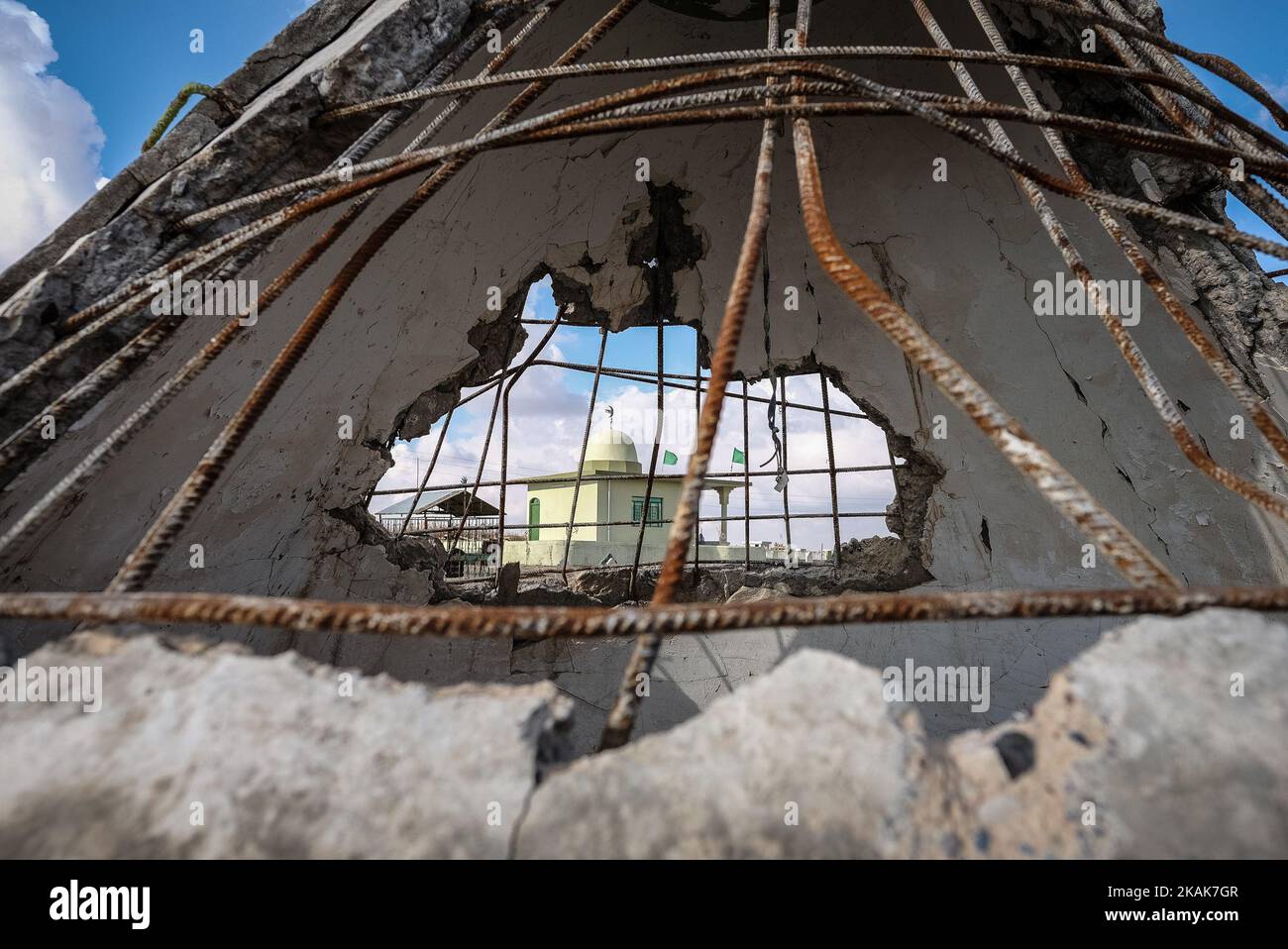 January 2017, Wardak, Iraq. Temple called Mazar or Ziyaret destroyed by ISIL. The KakaÂ’i Kurds are returning to their homes as Mosul offensive continiues. The KakaÂ’i Kurds are one of several multi-ethnic groups who are part of the Yarsan or Ahl el-Haqq (people of truth), a religion founded by Sultan Sahak in the late 14th century in western Iran. Some Yarsanis in Iraq are called the KakaÂ’is. The Kakais are one of the religious minorities scattered throughout northern Iraq in the provinces of Sulaimaniyah and Halabja, in the Ninevah Plains of Ninevah province and in villages to the southeast Stock Photohttps://www.alamy.com/image-license-details/?v=1https://www.alamy.com/january-2017-wardak-iraq-temple-called-mazar-or-ziyaret-destroyed-by-isil-the-kakai-kurds-are-returning-to-their-homes-as-mosul-offensive-continiues-the-kakai-kurds-are-one-of-several-multi-ethnic-groups-who-are-part-of-the-yarsan-or-ahl-el-haqq-people-of-truth-a-religion-founded-by-sultan-sahak-in-the-late-14th-century-in-western-iran-some-yarsanis-in-iraq-are-called-the-kakais-the-kakais-are-one-of-the-religious-minorities-scattered-throughout-northern-iraq-in-the-provinces-of-sulaimaniyah-and-halabja-in-the-ninevah-plains-of-ninevah-province-and-in-villages-to-the-southeast-image488459911.html
January 2017, Wardak, Iraq. Temple called Mazar or Ziyaret destroyed by ISIL. The KakaÂ’i Kurds are returning to their homes as Mosul offensive continiues. The KakaÂ’i Kurds are one of several multi-ethnic groups who are part of the Yarsan or Ahl el-Haqq (people of truth), a religion founded by Sultan Sahak in the late 14th century in western Iran. Some Yarsanis in Iraq are called the KakaÂ’is. The Kakais are one of the religious minorities scattered throughout northern Iraq in the provinces of Sulaimaniyah and Halabja, in the Ninevah Plains of Ninevah province and in villages to the southeast Stock Photohttps://www.alamy.com/image-license-details/?v=1https://www.alamy.com/january-2017-wardak-iraq-temple-called-mazar-or-ziyaret-destroyed-by-isil-the-kakai-kurds-are-returning-to-their-homes-as-mosul-offensive-continiues-the-kakai-kurds-are-one-of-several-multi-ethnic-groups-who-are-part-of-the-yarsan-or-ahl-el-haqq-people-of-truth-a-religion-founded-by-sultan-sahak-in-the-late-14th-century-in-western-iran-some-yarsanis-in-iraq-are-called-the-kakais-the-kakais-are-one-of-the-religious-minorities-scattered-throughout-northern-iraq-in-the-provinces-of-sulaimaniyah-and-halabja-in-the-ninevah-plains-of-ninevah-province-and-in-villages-to-the-southeast-image488459911.htmlRM2KAK7GR–January 2017, Wardak, Iraq. Temple called Mazar or Ziyaret destroyed by ISIL. The KakaÂ’i Kurds are returning to their homes as Mosul offensive continiues. The KakaÂ’i Kurds are one of several multi-ethnic groups who are part of the Yarsan or Ahl el-Haqq (people of truth), a religion founded by Sultan Sahak in the late 14th century in western Iran. Some Yarsanis in Iraq are called the KakaÂ’is. The Kakais are one of the religious minorities scattered throughout northern Iraq in the provinces of Sulaimaniyah and Halabja, in the Ninevah Plains of Ninevah province and in villages to the southeast
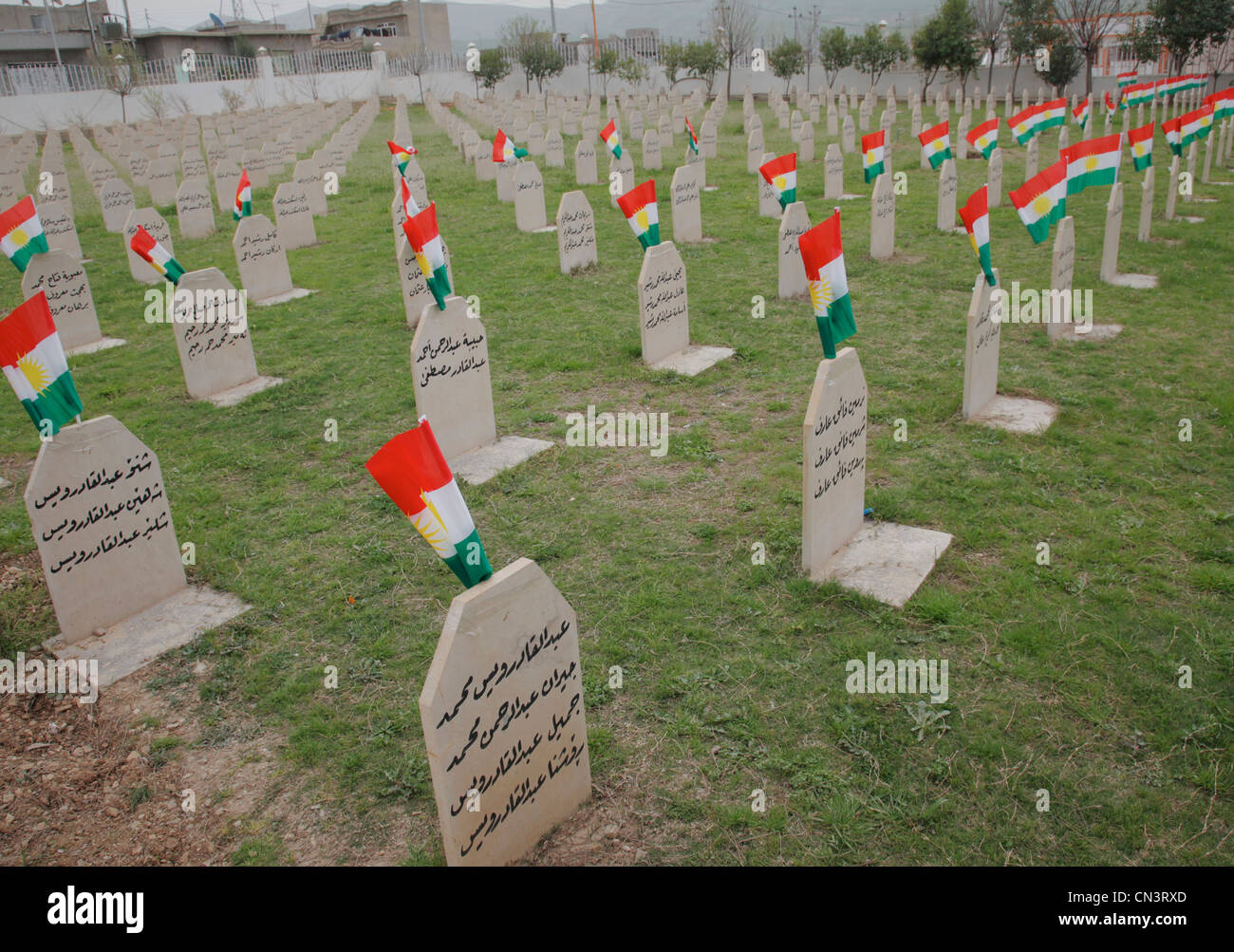 A memorial of Halabja in Iraqi Kurdistan. In marsh 16: th 1988 the city was attacked by Saddam Hussein's army. 5000 was killed by gas. Operation Anfal Stock Photohttps://www.alamy.com/image-license-details/?v=1https://www.alamy.com/stock-photo-a-memorial-of-halabja-in-iraqi-kurdistan-in-marsh-16-th-1988-the-city-47413141.html
A memorial of Halabja in Iraqi Kurdistan. In marsh 16: th 1988 the city was attacked by Saddam Hussein's army. 5000 was killed by gas. Operation Anfal Stock Photohttps://www.alamy.com/image-license-details/?v=1https://www.alamy.com/stock-photo-a-memorial-of-halabja-in-iraqi-kurdistan-in-marsh-16-th-1988-the-city-47413141.htmlRFCN3RXD–A memorial of Halabja in Iraqi Kurdistan. In marsh 16: th 1988 the city was attacked by Saddam Hussein's army. 5000 was killed by gas. Operation Anfal
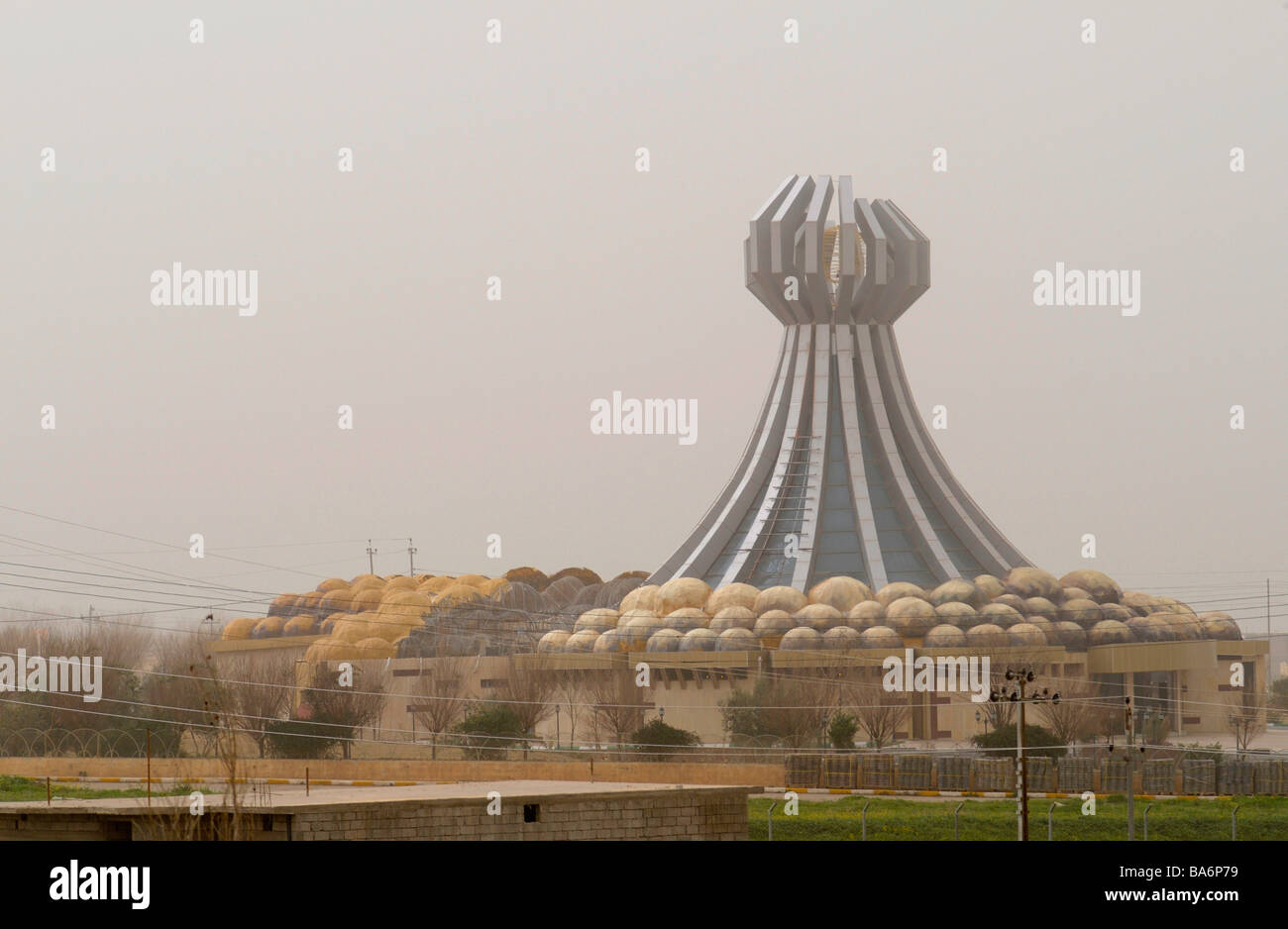 A monument commemorating the 1988 chemical gas attack on Halabja by Saddam Hussein's military. Photo taken in Halabja, Iraq. Stock Photohttps://www.alamy.com/image-license-details/?v=1https://www.alamy.com/stock-photo-a-monument-commemorating-the-1988-chemical-gas-attack-on-halabja-by-23506093.html
A monument commemorating the 1988 chemical gas attack on Halabja by Saddam Hussein's military. Photo taken in Halabja, Iraq. Stock Photohttps://www.alamy.com/image-license-details/?v=1https://www.alamy.com/stock-photo-a-monument-commemorating-the-1988-chemical-gas-attack-on-halabja-by-23506093.htmlRMBA6P79–A monument commemorating the 1988 chemical gas attack on Halabja by Saddam Hussein's military. Photo taken in Halabja, Iraq.
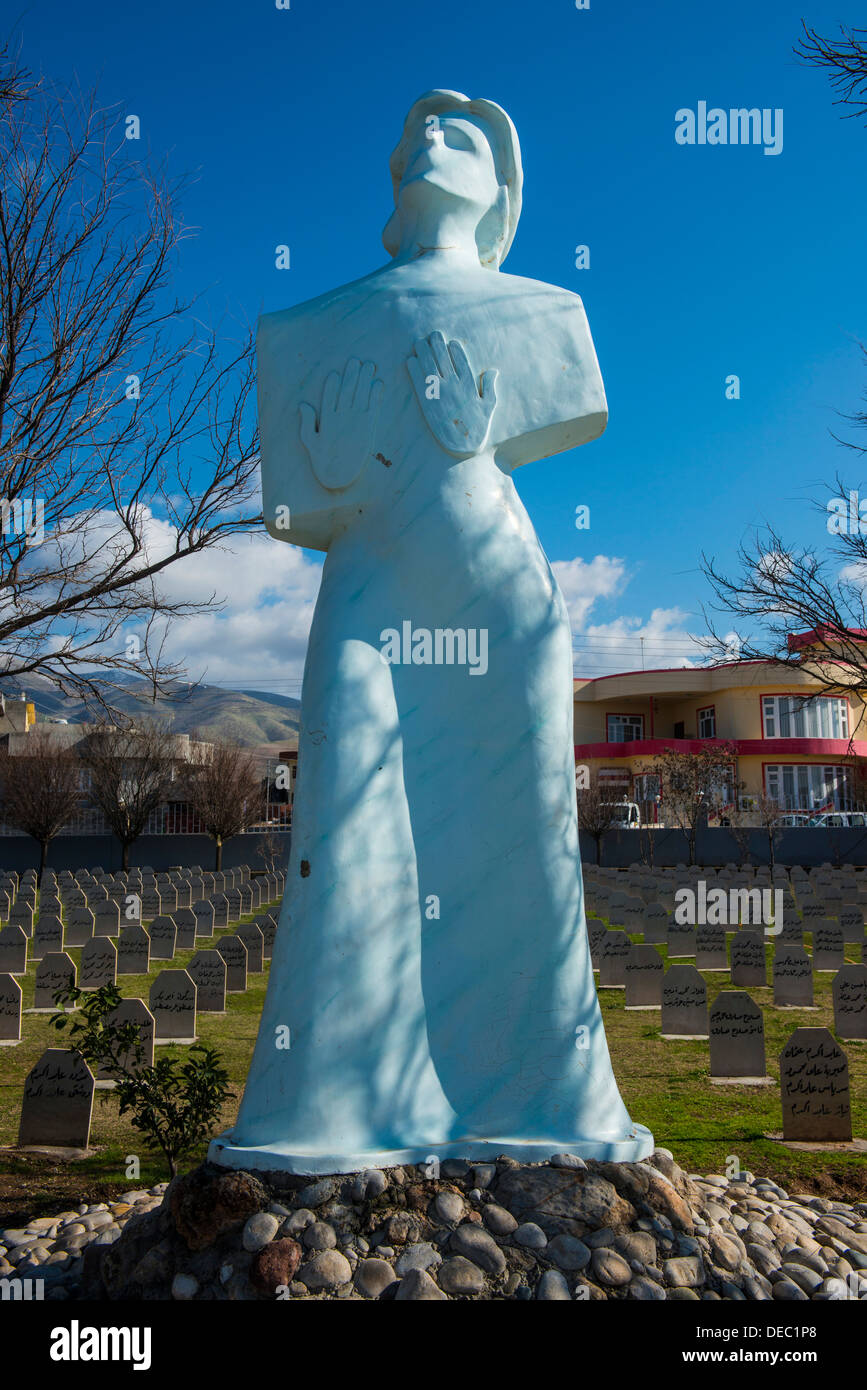 Statue, Halabja cemetery, Halabja, Iraqi Kurdistan, Iraq Stock Photohttps://www.alamy.com/image-license-details/?v=1https://www.alamy.com/statue-halabja-cemetery-halabja-iraqi-kurdistan-iraq-image60501120.html
Statue, Halabja cemetery, Halabja, Iraqi Kurdistan, Iraq Stock Photohttps://www.alamy.com/image-license-details/?v=1https://www.alamy.com/statue-halabja-cemetery-halabja-iraqi-kurdistan-iraq-image60501120.htmlRMDEC1P8–Statue, Halabja cemetery, Halabja, Iraqi Kurdistan, Iraq
 Graveyard at Halabja in Iraqi Kurdistan Stock Photohttps://www.alamy.com/image-license-details/?v=1https://www.alamy.com/graveyard-at-halabja-in-iraqi-kurdistan-image629360155.html
Graveyard at Halabja in Iraqi Kurdistan Stock Photohttps://www.alamy.com/image-license-details/?v=1https://www.alamy.com/graveyard-at-halabja-in-iraqi-kurdistan-image629360155.htmlRM2YFWR8B–Graveyard at Halabja in Iraqi Kurdistan
 This photo by Edwin Newman captures a moment from the RAF's involvement in Iraq, specifically focusing on Halabja, a city affected by military conflict during the Middle Eastern wars. Stock Photohttps://www.alamy.com/image-license-details/?v=1https://www.alamy.com/stock-photo-this-photo-by-edwin-newman-captures-a-moment-from-the-rafs-involvement-54300355.html
This photo by Edwin Newman captures a moment from the RAF's involvement in Iraq, specifically focusing on Halabja, a city affected by military conflict during the Middle Eastern wars. Stock Photohttps://www.alamy.com/image-license-details/?v=1https://www.alamy.com/stock-photo-this-photo-by-edwin-newman-captures-a-moment-from-the-rafs-involvement-54300355.htmlRMD49GJB–This photo by Edwin Newman captures a moment from the RAF's involvement in Iraq, specifically focusing on Halabja, a city affected by military conflict during the Middle Eastern wars.
 Halabja, Iraq. 16th Mar, 2021. A group of women visit Halabja Cemetery on the 33rd anniversary of Halabja chemical attack, which killed nearly 5000 people and injured about 10000, most of them were civilians. Credit: Ismael Adnan/dpa/Alamy Live News Stock Photohttps://www.alamy.com/image-license-details/?v=1https://www.alamy.com/halabja-iraq-16th-mar-2021-a-group-of-women-visit-halabja-cemetery-on-the-33rd-anniversary-of-halabja-chemical-attack-which-killed-nearly-5000-people-and-injured-about-10000-most-of-them-were-civilians-credit-ismael-adnandpaalamy-live-news-image415175483.html
Halabja, Iraq. 16th Mar, 2021. A group of women visit Halabja Cemetery on the 33rd anniversary of Halabja chemical attack, which killed nearly 5000 people and injured about 10000, most of them were civilians. Credit: Ismael Adnan/dpa/Alamy Live News Stock Photohttps://www.alamy.com/image-license-details/?v=1https://www.alamy.com/halabja-iraq-16th-mar-2021-a-group-of-women-visit-halabja-cemetery-on-the-33rd-anniversary-of-halabja-chemical-attack-which-killed-nearly-5000-people-and-injured-about-10000-most-of-them-were-civilians-credit-ismael-adnandpaalamy-live-news-image415175483.htmlRM2F3CTFR–Halabja, Iraq. 16th Mar, 2021. A group of women visit Halabja Cemetery on the 33rd anniversary of Halabja chemical attack, which killed nearly 5000 people and injured about 10000, most of them were civilians. Credit: Ismael Adnan/dpa/Alamy Live News
 This image shows an RAF outstation on the Persian border near Halabja, Iraq, captured by Edwin Newman. The photo provides a rare glimpse into the operations in the Middle East during the mid-20th century, with military aircraft operating in desert conditions. Stock Photohttps://www.alamy.com/image-license-details/?v=1https://www.alamy.com/this-image-shows-an-raf-outstation-on-the-persian-border-near-halabja-image69093600.html
This image shows an RAF outstation on the Persian border near Halabja, Iraq, captured by Edwin Newman. The photo provides a rare glimpse into the operations in the Middle East during the mid-20th century, with military aircraft operating in desert conditions. Stock Photohttps://www.alamy.com/image-license-details/?v=1https://www.alamy.com/this-image-shows-an-raf-outstation-on-the-persian-border-near-halabja-image69093600.htmlRME0BDGG–This image shows an RAF outstation on the Persian border near Halabja, Iraq, captured by Edwin Newman. The photo provides a rare glimpse into the operations in the Middle East during the mid-20th century, with military aircraft operating in desert conditions.
 Halabja Monument And Peace Museum, memorial of the chemical attack in Halabja, Iraq Stock Photohttps://www.alamy.com/image-license-details/?v=1https://www.alamy.com/halabja-monument-and-peace-museum-memorial-of-the-chemical-attack-in-halabja-iraq-image682386085.html
Halabja Monument And Peace Museum, memorial of the chemical attack in Halabja, Iraq Stock Photohttps://www.alamy.com/image-license-details/?v=1https://www.alamy.com/halabja-monument-and-peace-museum-memorial-of-the-chemical-attack-in-halabja-iraq-image682386085.htmlRF3BJ5ABH–Halabja Monument And Peace Museum, memorial of the chemical attack in Halabja, Iraq
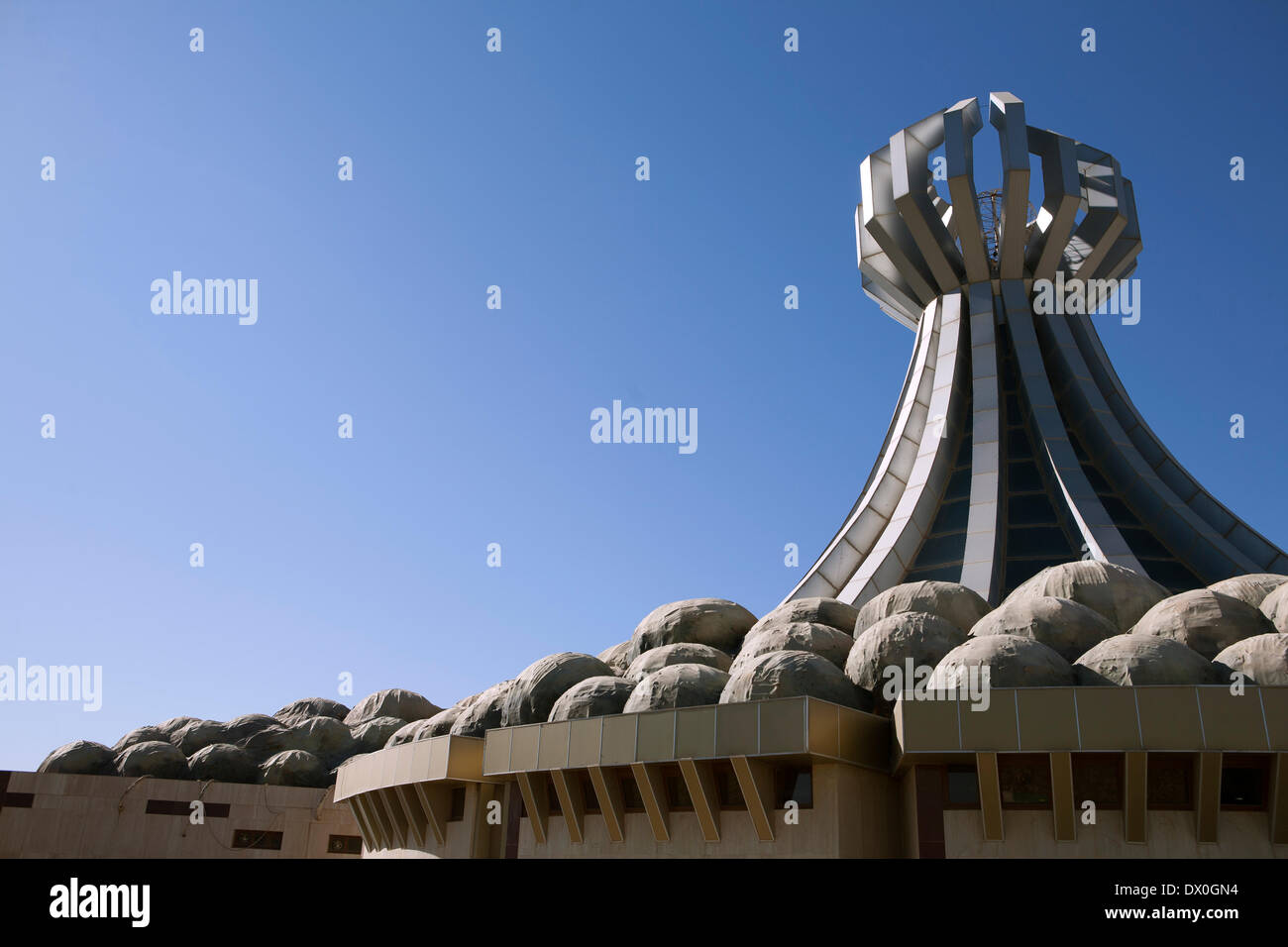 Halabja, Suleimania, IRAQ -- The symbolic cemetery erected for the victims of Halabja massacre on 21 October, 2011. Halabja, a Kurdish town in Northern Iraq was bombed with chemical agents by the Saddam regime in efforts to decimate the Kurdish population in the North on March 16, 1988. Photo by Bikem Ekberzade Stock Photohttps://www.alamy.com/image-license-details/?v=1https://www.alamy.com/halabja-suleimania-iraq-the-symbolic-cemetery-erected-for-the-victims-image67625296.html
Halabja, Suleimania, IRAQ -- The symbolic cemetery erected for the victims of Halabja massacre on 21 October, 2011. Halabja, a Kurdish town in Northern Iraq was bombed with chemical agents by the Saddam regime in efforts to decimate the Kurdish population in the North on March 16, 1988. Photo by Bikem Ekberzade Stock Photohttps://www.alamy.com/image-license-details/?v=1https://www.alamy.com/halabja-suleimania-iraq-the-symbolic-cemetery-erected-for-the-victims-image67625296.htmlRMDX0GN4–Halabja, Suleimania, IRAQ -- The symbolic cemetery erected for the victims of Halabja massacre on 21 October, 2011. Halabja, a Kurdish town in Northern Iraq was bombed with chemical agents by the Saddam regime in efforts to decimate the Kurdish population in the North on March 16, 1988. Photo by Bikem Ekberzade
 Halabja, Iraq - March 25, 2018: Monument and museum in Halabja, remembrance of the victims of the chemical attack, massacre against the Kurdish people Stock Photohttps://www.alamy.com/image-license-details/?v=1https://www.alamy.com/halabja-iraq-march-25-2018-monument-and-museum-in-halabja-remembrance-of-the-victims-of-the-chemical-attack-massacre-against-the-kurdish-people-image462258946.html
Halabja, Iraq - March 25, 2018: Monument and museum in Halabja, remembrance of the victims of the chemical attack, massacre against the Kurdish people Stock Photohttps://www.alamy.com/image-license-details/?v=1https://www.alamy.com/halabja-iraq-march-25-2018-monument-and-museum-in-halabja-remembrance-of-the-victims-of-the-chemical-attack-massacre-against-the-kurdish-people-image462258946.htmlRF2HT1M02–Halabja, Iraq - March 25, 2018: Monument and museum in Halabja, remembrance of the victims of the chemical attack, massacre against the Kurdish people
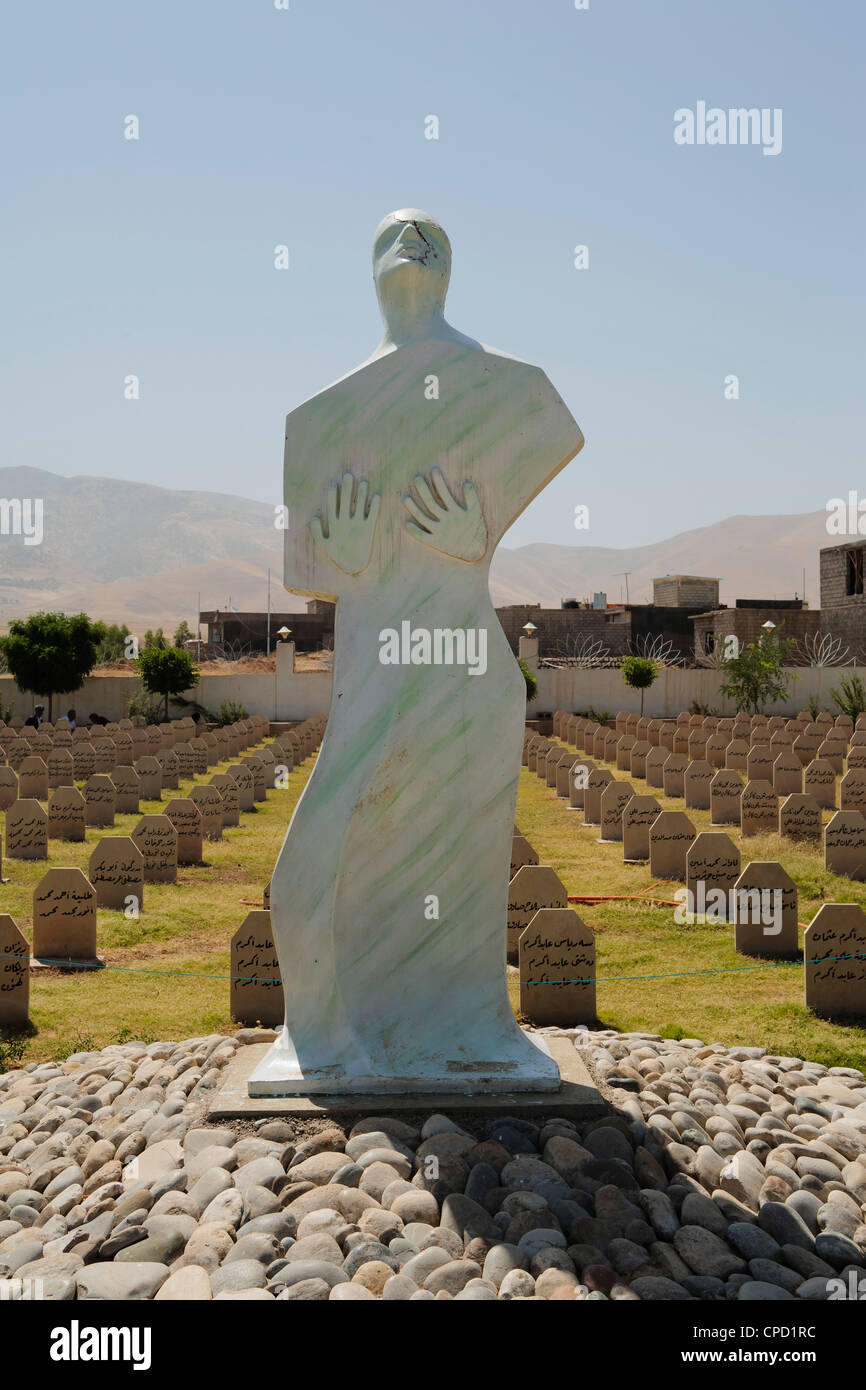 Memorial cemetery to the victims of Saddam Hussein's chemical gas attack on the Kurdish town of Halabja, Iraq, Middle East Stock Photohttps://www.alamy.com/image-license-details/?v=1https://www.alamy.com/stock-photo-memorial-cemetery-to-the-victims-of-saddam-husseins-chemical-gas-attack-48229984.html
Memorial cemetery to the victims of Saddam Hussein's chemical gas attack on the Kurdish town of Halabja, Iraq, Middle East Stock Photohttps://www.alamy.com/image-license-details/?v=1https://www.alamy.com/stock-photo-memorial-cemetery-to-the-victims-of-saddam-husseins-chemical-gas-attack-48229984.htmlRMCPD1RC–Memorial cemetery to the victims of Saddam Hussein's chemical gas attack on the Kurdish town of Halabja, Iraq, Middle East
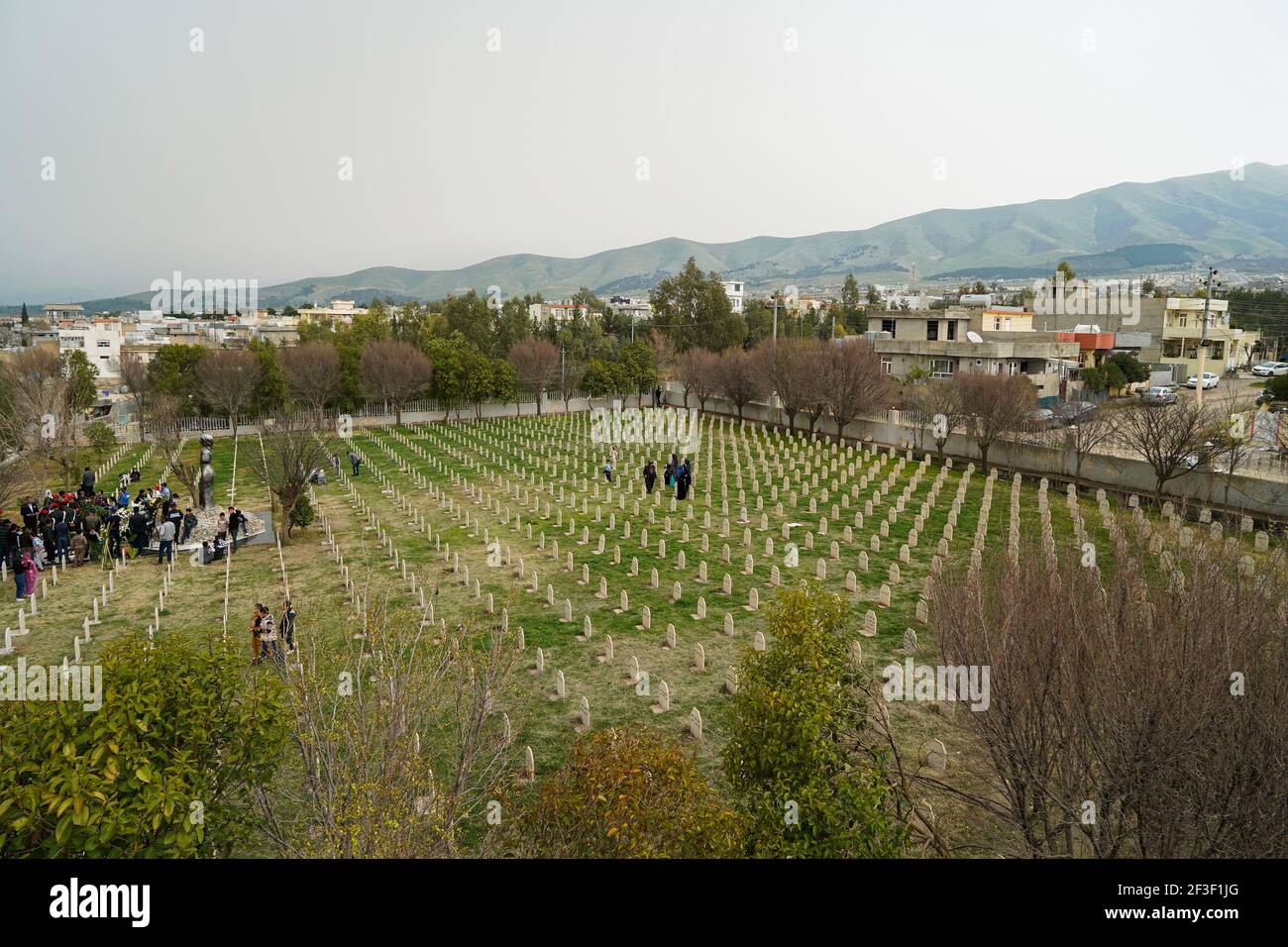 A view of the grave yard where the victims of the Halabja chemical attack were buried.The 33rd anniversary of the chemical attack carried out by the Iraqi government on March 16, 1988 on the city of Halabja in the Kurdistan Region, which killed nearly 5000 people and injured 10000 most of them civilians. Thousands of the city's residents died in the year following the attack due to health complications and due to diseases and birth defects. Stock Photohttps://www.alamy.com/image-license-details/?v=1https://www.alamy.com/a-view-of-the-grave-yard-where-the-victims-of-the-halabja-chemical-attack-were-buriedthe-33rd-anniversary-of-the-chemical-attack-carried-out-by-the-iraqi-government-on-march-16-1988-on-the-city-of-halabja-in-the-kurdistan-region-which-killed-nearly-5000-people-and-injured-10000-most-of-them-civilians-thousands-of-the-citys-residents-died-in-the-year-following-the-attack-due-to-health-complications-and-due-to-diseases-and-birth-defects-image415223384.html
A view of the grave yard where the victims of the Halabja chemical attack were buried.The 33rd anniversary of the chemical attack carried out by the Iraqi government on March 16, 1988 on the city of Halabja in the Kurdistan Region, which killed nearly 5000 people and injured 10000 most of them civilians. Thousands of the city's residents died in the year following the attack due to health complications and due to diseases and birth defects. Stock Photohttps://www.alamy.com/image-license-details/?v=1https://www.alamy.com/a-view-of-the-grave-yard-where-the-victims-of-the-halabja-chemical-attack-were-buriedthe-33rd-anniversary-of-the-chemical-attack-carried-out-by-the-iraqi-government-on-march-16-1988-on-the-city-of-halabja-in-the-kurdistan-region-which-killed-nearly-5000-people-and-injured-10000-most-of-them-civilians-thousands-of-the-citys-residents-died-in-the-year-following-the-attack-due-to-health-complications-and-due-to-diseases-and-birth-defects-image415223384.htmlRM2F3F1JG–A view of the grave yard where the victims of the Halabja chemical attack were buried.The 33rd anniversary of the chemical attack carried out by the Iraqi government on March 16, 1988 on the city of Halabja in the Kurdistan Region, which killed nearly 5000 people and injured 10000 most of them civilians. Thousands of the city's residents died in the year following the attack due to health complications and due to diseases and birth defects.
 Martyrs memorial Halabja Kurdish north Iraq kurdistan Stock Photohttps://www.alamy.com/image-license-details/?v=1https://www.alamy.com/stock-photo-martyrs-memorial-halabja-kurdish-north-iraq-kurdistan-36784096.html
Martyrs memorial Halabja Kurdish north Iraq kurdistan Stock Photohttps://www.alamy.com/image-license-details/?v=1https://www.alamy.com/stock-photo-martyrs-memorial-halabja-kurdish-north-iraq-kurdistan-36784096.htmlRMC3RJDM–Martyrs memorial Halabja Kurdish north Iraq kurdistan
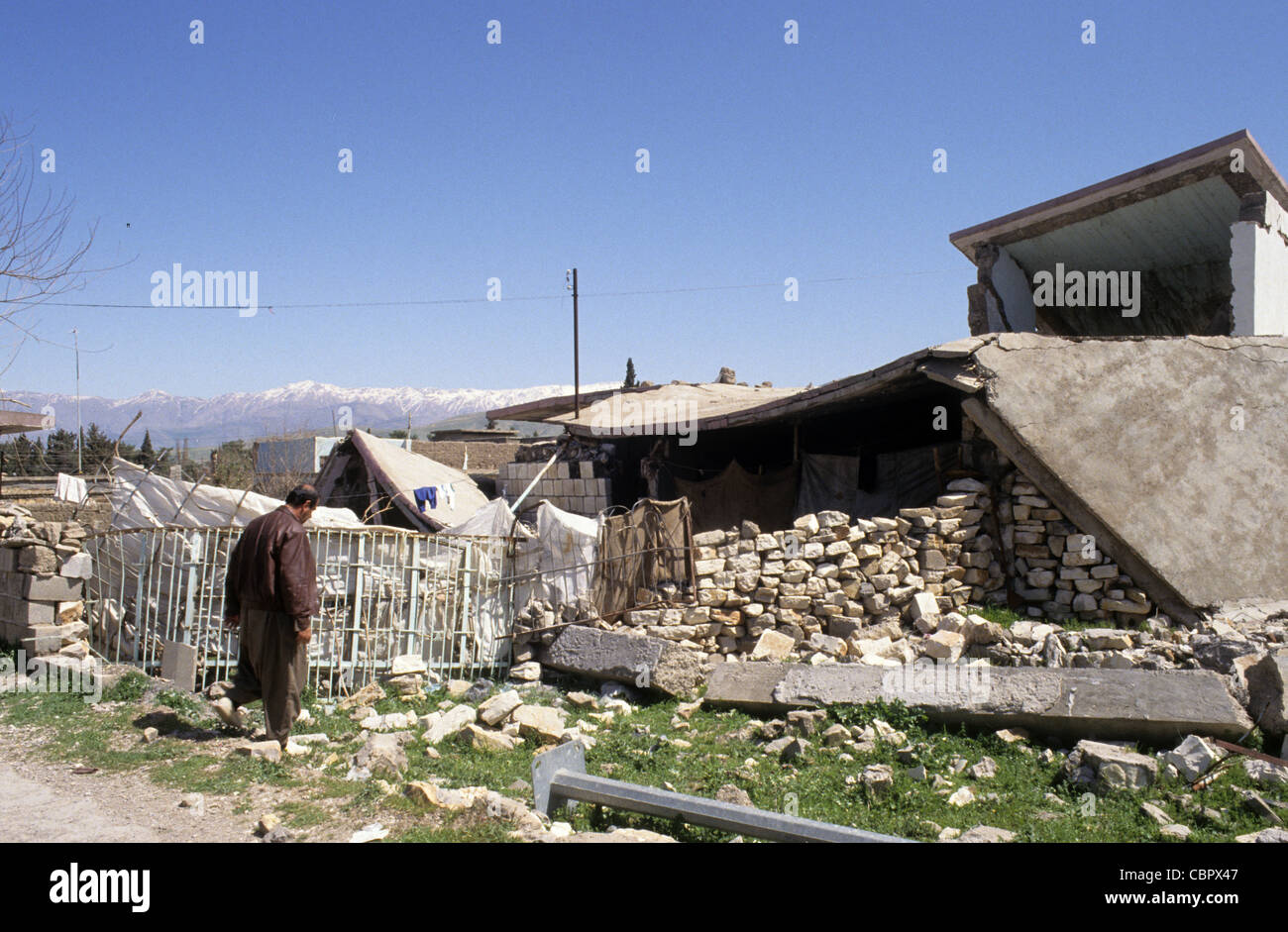 Halabja, Iraqi Kurdistan, once home to 5,000 Kurds attacked by Saddam Hussein with chemical weapons in March 1988 Stock Photohttps://www.alamy.com/image-license-details/?v=1https://www.alamy.com/stock-photo-halabja-iraqi-kurdistan-once-home-to-5000-kurds-attacked-by-saddam-41685399.html
Halabja, Iraqi Kurdistan, once home to 5,000 Kurds attacked by Saddam Hussein with chemical weapons in March 1988 Stock Photohttps://www.alamy.com/image-license-details/?v=1https://www.alamy.com/stock-photo-halabja-iraqi-kurdistan-once-home-to-5000-kurds-attacked-by-saddam-41685399.htmlRMCBPX47–Halabja, Iraqi Kurdistan, once home to 5,000 Kurds attacked by Saddam Hussein with chemical weapons in March 1988
 Memorial cemetery to victims of Halabjgas attack, As-Sulaymaniyyah, Iraq Stock Photohttps://www.alamy.com/image-license-details/?v=1https://www.alamy.com/stock-photo-memorial-cemetery-to-victims-of-halabjgas-attack-as-sulaymaniyyah-49241122.html
Memorial cemetery to victims of Halabjgas attack, As-Sulaymaniyyah, Iraq Stock Photohttps://www.alamy.com/image-license-details/?v=1https://www.alamy.com/stock-photo-memorial-cemetery-to-victims-of-halabjgas-attack-as-sulaymaniyyah-49241122.htmlRFCT33FE–Memorial cemetery to victims of Halabjgas attack, As-Sulaymaniyyah, Iraq
 Gabriel Gauffre / Le Pictorium - Bashur - 19/3/2021 - Iraq / Iraqi Kurdistan / Erbil - Women rest by a decommissioned Iraqi fighter jet, in Halabja. From the ashes of the 2003 American invasion of Iraq and the toppling of Saddam Hussein's regime, Iraq's Kurds managed to wrestle a form of relative independence. Still technically part of Iraq, Iraqi Kurdistan, in the north of the country, enjoys a heightened level of independence. To the Kurds, it is Bas?r (Bahsur), the southern province of the 4 composing what could one day be their own country, Kurdistan. Bashur is a territory that ha Stock Photohttps://www.alamy.com/image-license-details/?v=1https://www.alamy.com/gabriel-gauffre-le-pictorium-bashur-1932021-iraq-iraqi-kurdistan-erbil-women-rest-by-a-decommissioned-iraqi-fighter-jet-in-halabja-from-the-ashes-of-the-2003-american-invasion-of-iraq-and-the-toppling-of-saddam-husseins-regime-iraqs-kurds-managed-to-wrestle-a-form-of-relative-independence-still-technically-part-of-iraq-iraqi-kurdistan-in-the-north-of-the-country-enjoys-a-heightened-level-of-independence-to-the-kurds-it-is-basr-bahsur-the-southern-province-of-the-4-composing-what-could-one-day-be-their-own-country-kurdistan-bashur-is-a-territory-that-ha-image556278830.html
Gabriel Gauffre / Le Pictorium - Bashur - 19/3/2021 - Iraq / Iraqi Kurdistan / Erbil - Women rest by a decommissioned Iraqi fighter jet, in Halabja. From the ashes of the 2003 American invasion of Iraq and the toppling of Saddam Hussein's regime, Iraq's Kurds managed to wrestle a form of relative independence. Still technically part of Iraq, Iraqi Kurdistan, in the north of the country, enjoys a heightened level of independence. To the Kurds, it is Bas?r (Bahsur), the southern province of the 4 composing what could one day be their own country, Kurdistan. Bashur is a territory that ha Stock Photohttps://www.alamy.com/image-license-details/?v=1https://www.alamy.com/gabriel-gauffre-le-pictorium-bashur-1932021-iraq-iraqi-kurdistan-erbil-women-rest-by-a-decommissioned-iraqi-fighter-jet-in-halabja-from-the-ashes-of-the-2003-american-invasion-of-iraq-and-the-toppling-of-saddam-husseins-regime-iraqs-kurds-managed-to-wrestle-a-form-of-relative-independence-still-technically-part-of-iraq-iraqi-kurdistan-in-the-north-of-the-country-enjoys-a-heightened-level-of-independence-to-the-kurds-it-is-basr-bahsur-the-southern-province-of-the-4-composing-what-could-one-day-be-their-own-country-kurdistan-bashur-is-a-territory-that-ha-image556278830.htmlRM2R90K92–Gabriel Gauffre / Le Pictorium - Bashur - 19/3/2021 - Iraq / Iraqi Kurdistan / Erbil - Women rest by a decommissioned Iraqi fighter jet, in Halabja. From the ashes of the 2003 American invasion of Iraq and the toppling of Saddam Hussein's regime, Iraq's Kurds managed to wrestle a form of relative independence. Still technically part of Iraq, Iraqi Kurdistan, in the north of the country, enjoys a heightened level of independence. To the Kurds, it is Bas?r (Bahsur), the southern province of the 4 composing what could one day be their own country, Kurdistan. Bashur is a territory that ha
 Halabja, Iraq. 16th Mar, 2021. A view of the grave yard where the victims of the Halabja chemical attack were buried.The 33rd anniversary of the chemical attack carried out by the Iraqi government on March 16, 1988 on the city of Halabja in the Kurdistan Region, which killed nearly 5000 people and injured 10000 most of them civilians. Thousands of the city's residents died in the year following the attack due to health complications and due to diseases and birth defects. (Photo by Ismael Adnan/SOPA Images/Sipa USA) Credit: Sipa USA/Alamy Live News Stock Photohttps://www.alamy.com/image-license-details/?v=1https://www.alamy.com/halabja-iraq-16th-mar-2021-a-view-of-the-grave-yard-where-the-victims-of-the-halabja-chemical-attack-were-buriedthe-33rd-anniversary-of-the-chemical-attack-carried-out-by-the-iraqi-government-on-march-16-1988-on-the-city-of-halabja-in-the-kurdistan-region-which-killed-nearly-5000-people-and-injured-10000-most-of-them-civilians-thousands-of-the-citys-residents-died-in-the-year-following-the-attack-due-to-health-complications-and-due-to-diseases-and-birth-defects-photo-by-ismael-adnansopa-imagessipa-usa-credit-sipa-usaalamy-live-news-image415224721.html
Halabja, Iraq. 16th Mar, 2021. A view of the grave yard where the victims of the Halabja chemical attack were buried.The 33rd anniversary of the chemical attack carried out by the Iraqi government on March 16, 1988 on the city of Halabja in the Kurdistan Region, which killed nearly 5000 people and injured 10000 most of them civilians. Thousands of the city's residents died in the year following the attack due to health complications and due to diseases and birth defects. (Photo by Ismael Adnan/SOPA Images/Sipa USA) Credit: Sipa USA/Alamy Live News Stock Photohttps://www.alamy.com/image-license-details/?v=1https://www.alamy.com/halabja-iraq-16th-mar-2021-a-view-of-the-grave-yard-where-the-victims-of-the-halabja-chemical-attack-were-buriedthe-33rd-anniversary-of-the-chemical-attack-carried-out-by-the-iraqi-government-on-march-16-1988-on-the-city-of-halabja-in-the-kurdistan-region-which-killed-nearly-5000-people-and-injured-10000-most-of-them-civilians-thousands-of-the-citys-residents-died-in-the-year-following-the-attack-due-to-health-complications-and-due-to-diseases-and-birth-defects-photo-by-ismael-adnansopa-imagessipa-usa-credit-sipa-usaalamy-live-news-image415224721.htmlRM2F3F3A9–Halabja, Iraq. 16th Mar, 2021. A view of the grave yard where the victims of the Halabja chemical attack were buried.The 33rd anniversary of the chemical attack carried out by the Iraqi government on March 16, 1988 on the city of Halabja in the Kurdistan Region, which killed nearly 5000 people and injured 10000 most of them civilians. Thousands of the city's residents died in the year following the attack due to health complications and due to diseases and birth defects. (Photo by Ismael Adnan/SOPA Images/Sipa USA) Credit: Sipa USA/Alamy Live News
 March 16, 2021, Halabja, Sulayman, Iraq: A view of the grave yard where the victims of the Halabja chemical attack were buried..The 33rd anniversary of the chemical attack carried out by the Iraqi government on March 16, 1988 on the city of Halabja in the Kurdistan Region, which killed nearly 5000 people and injured 10000 most of them civilians. Thousands of the city's residents died in the year following the attack due to health complications and due to diseases and birth defects. (Credit Image: © Ismael Adnan/SOPA Images via ZUMA Wire) Stock Photohttps://www.alamy.com/image-license-details/?v=1https://www.alamy.com/march-16-2021-halabja-sulayman-iraq-a-view-of-the-grave-yard-where-the-victims-of-the-halabja-chemical-attack-were-buriedthe-33rd-anniversary-of-the-chemical-attack-carried-out-by-the-iraqi-government-on-march-16-1988-on-the-city-of-halabja-in-the-kurdistan-region-which-killed-nearly-5000-people-and-injured-10000-most-of-them-civilians-thousands-of-the-citys-residents-died-in-the-year-following-the-attack-due-to-health-complications-and-due-to-diseases-and-birth-defects-credit-image-ismael-adnansopa-images-via-zuma-wire-image694040400.html
March 16, 2021, Halabja, Sulayman, Iraq: A view of the grave yard where the victims of the Halabja chemical attack were buried..The 33rd anniversary of the chemical attack carried out by the Iraqi government on March 16, 1988 on the city of Halabja in the Kurdistan Region, which killed nearly 5000 people and injured 10000 most of them civilians. Thousands of the city's residents died in the year following the attack due to health complications and due to diseases and birth defects. (Credit Image: © Ismael Adnan/SOPA Images via ZUMA Wire) Stock Photohttps://www.alamy.com/image-license-details/?v=1https://www.alamy.com/march-16-2021-halabja-sulayman-iraq-a-view-of-the-grave-yard-where-the-victims-of-the-halabja-chemical-attack-were-buriedthe-33rd-anniversary-of-the-chemical-attack-carried-out-by-the-iraqi-government-on-march-16-1988-on-the-city-of-halabja-in-the-kurdistan-region-which-killed-nearly-5000-people-and-injured-10000-most-of-them-civilians-thousands-of-the-citys-residents-died-in-the-year-following-the-attack-due-to-health-complications-and-due-to-diseases-and-birth-defects-credit-image-ismael-adnansopa-images-via-zuma-wire-image694040400.htmlRM3C947H4–March 16, 2021, Halabja, Sulayman, Iraq: A view of the grave yard where the victims of the Halabja chemical attack were buried..The 33rd anniversary of the chemical attack carried out by the Iraqi government on March 16, 1988 on the city of Halabja in the Kurdistan Region, which killed nearly 5000 people and injured 10000 most of them civilians. Thousands of the city's residents died in the year following the attack due to health complications and due to diseases and birth defects. (Credit Image: © Ismael Adnan/SOPA Images via ZUMA Wire)
 January 2017, Wardak, Iraq. Temple called Mazar or Ziyaret destroyed by ISIL. The KakaÂ’i Kurds are returning to their homes as Mosul offensive continiues. The KakaÂ’i Kurds are one of several multi-ethnic groups who are part of the Yarsan or Ahl el-Haqq (people of truth), a religion founded by Sultan Sahak in the late 14th century in western Iran. Some Yarsanis in Iraq are called the KakaÂ’is. The Kakais are one of the religious minorities scattered throughout northern Iraq in the provinces of Sulaimaniyah and Halabja, in the Ninevah Plains of Ninevah province and in villages to the southeast Stock Photohttps://www.alamy.com/image-license-details/?v=1https://www.alamy.com/january-2017-wardak-iraq-temple-called-mazar-or-ziyaret-destroyed-by-isil-the-kakai-kurds-are-returning-to-their-homes-as-mosul-offensive-continiues-the-kakai-kurds-are-one-of-several-multi-ethnic-groups-who-are-part-of-the-yarsan-or-ahl-el-haqq-people-of-truth-a-religion-founded-by-sultan-sahak-in-the-late-14th-century-in-western-iran-some-yarsanis-in-iraq-are-called-the-kakais-the-kakais-are-one-of-the-religious-minorities-scattered-throughout-northern-iraq-in-the-provinces-of-sulaimaniyah-and-halabja-in-the-ninevah-plains-of-ninevah-province-and-in-villages-to-the-southeast-image488459865.html
January 2017, Wardak, Iraq. Temple called Mazar or Ziyaret destroyed by ISIL. The KakaÂ’i Kurds are returning to their homes as Mosul offensive continiues. The KakaÂ’i Kurds are one of several multi-ethnic groups who are part of the Yarsan or Ahl el-Haqq (people of truth), a religion founded by Sultan Sahak in the late 14th century in western Iran. Some Yarsanis in Iraq are called the KakaÂ’is. The Kakais are one of the religious minorities scattered throughout northern Iraq in the provinces of Sulaimaniyah and Halabja, in the Ninevah Plains of Ninevah province and in villages to the southeast Stock Photohttps://www.alamy.com/image-license-details/?v=1https://www.alamy.com/january-2017-wardak-iraq-temple-called-mazar-or-ziyaret-destroyed-by-isil-the-kakai-kurds-are-returning-to-their-homes-as-mosul-offensive-continiues-the-kakai-kurds-are-one-of-several-multi-ethnic-groups-who-are-part-of-the-yarsan-or-ahl-el-haqq-people-of-truth-a-religion-founded-by-sultan-sahak-in-the-late-14th-century-in-western-iran-some-yarsanis-in-iraq-are-called-the-kakais-the-kakais-are-one-of-the-religious-minorities-scattered-throughout-northern-iraq-in-the-provinces-of-sulaimaniyah-and-halabja-in-the-ninevah-plains-of-ninevah-province-and-in-villages-to-the-southeast-image488459865.htmlRM2KAK7F5–January 2017, Wardak, Iraq. Temple called Mazar or Ziyaret destroyed by ISIL. The KakaÂ’i Kurds are returning to their homes as Mosul offensive continiues. The KakaÂ’i Kurds are one of several multi-ethnic groups who are part of the Yarsan or Ahl el-Haqq (people of truth), a religion founded by Sultan Sahak in the late 14th century in western Iran. Some Yarsanis in Iraq are called the KakaÂ’is. The Kakais are one of the religious minorities scattered throughout northern Iraq in the provinces of Sulaimaniyah and Halabja, in the Ninevah Plains of Ninevah province and in villages to the southeast
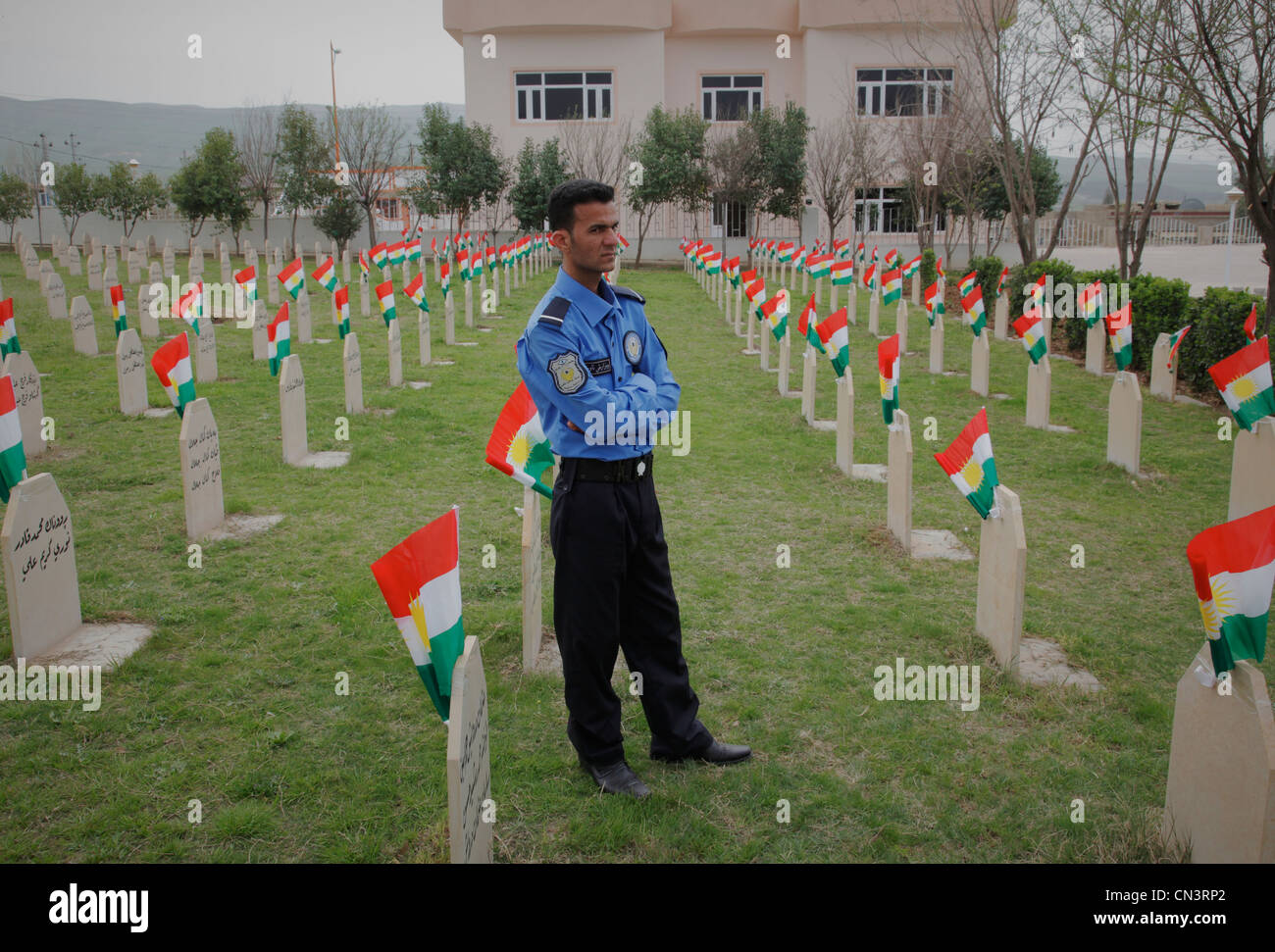 A memorial of Halabja in Iraqi Kurdistan. In marsh 16: th 1988 the city was attacked by Saddam Hussein's army. 5000 was killed by gas. Operation Anfal Stock Photohttps://www.alamy.com/image-license-details/?v=1https://www.alamy.com/stock-photo-a-memorial-of-halabja-in-iraqi-kurdistan-in-marsh-16-th-1988-the-city-47413018.html
A memorial of Halabja in Iraqi Kurdistan. In marsh 16: th 1988 the city was attacked by Saddam Hussein's army. 5000 was killed by gas. Operation Anfal Stock Photohttps://www.alamy.com/image-license-details/?v=1https://www.alamy.com/stock-photo-a-memorial-of-halabja-in-iraqi-kurdistan-in-marsh-16-th-1988-the-city-47413018.htmlRFCN3RP2–A memorial of Halabja in Iraqi Kurdistan. In marsh 16: th 1988 the city was attacked by Saddam Hussein's army. 5000 was killed by gas. Operation Anfal
 A monument commemorating the 1988 chemical gas attack on Halabja by Saddam Hussein's military. Photo taken in Halabja, Iraq. Stock Photohttps://www.alamy.com/image-license-details/?v=1https://www.alamy.com/stock-photo-a-monument-commemorating-the-1988-chemical-gas-attack-on-halabja-by-23485692.html
A monument commemorating the 1988 chemical gas attack on Halabja by Saddam Hussein's military. Photo taken in Halabja, Iraq. Stock Photohttps://www.alamy.com/image-license-details/?v=1https://www.alamy.com/stock-photo-a-monument-commemorating-the-1988-chemical-gas-attack-on-halabja-by-23485692.htmlRFBA5T6M–A monument commemorating the 1988 chemical gas attack on Halabja by Saddam Hussein's military. Photo taken in Halabja, Iraq.
 Statue, Halabja cemetery, Halabja, Iraqi Kurdistan, Iraq Stock Photohttps://www.alamy.com/image-license-details/?v=1https://www.alamy.com/statue-halabja-cemetery-halabja-iraqi-kurdistan-iraq-image60501123.html
Statue, Halabja cemetery, Halabja, Iraqi Kurdistan, Iraq Stock Photohttps://www.alamy.com/image-license-details/?v=1https://www.alamy.com/statue-halabja-cemetery-halabja-iraqi-kurdistan-iraq-image60501123.htmlRMDEC1PB–Statue, Halabja cemetery, Halabja, Iraqi Kurdistan, Iraq
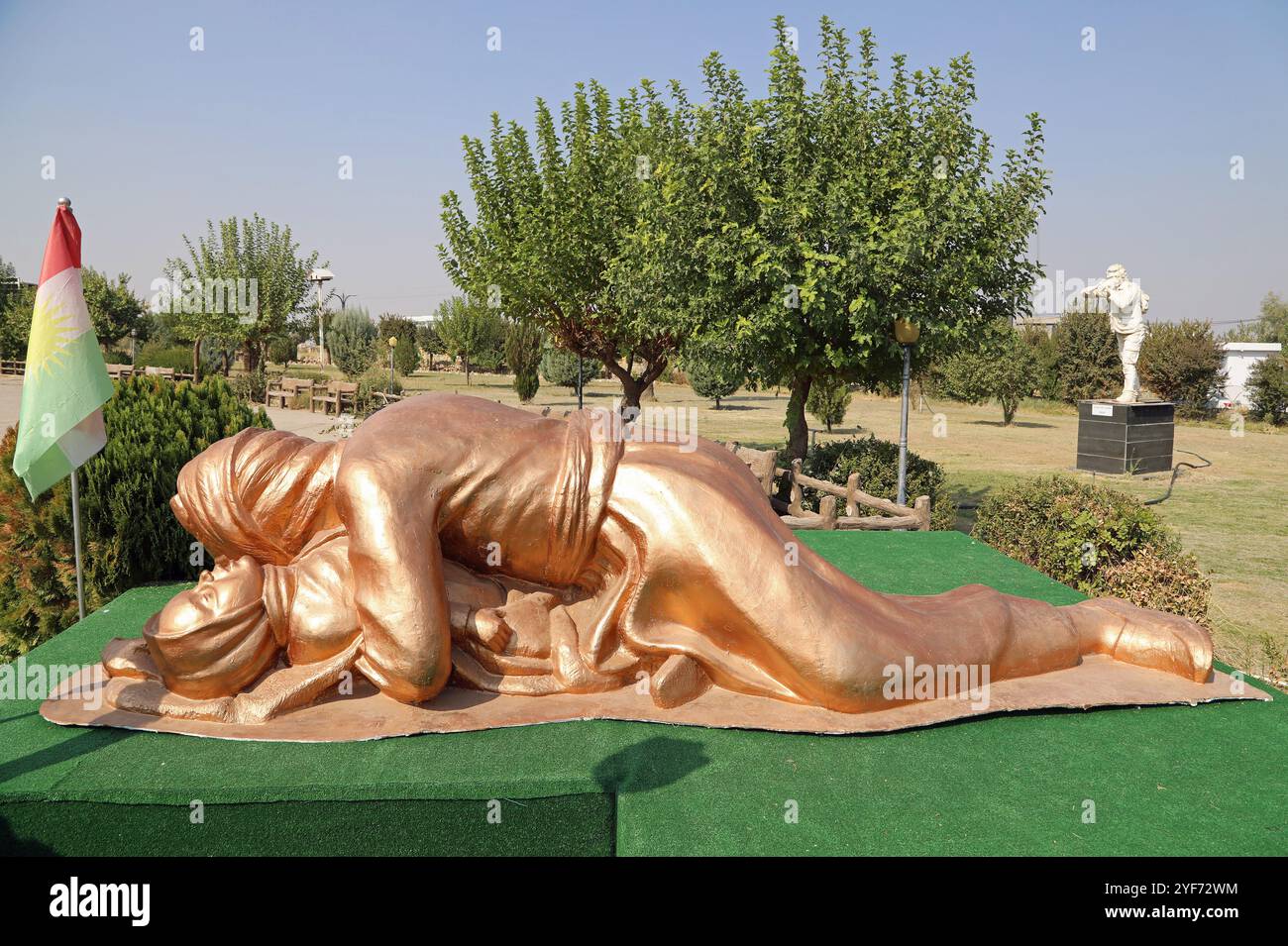 Sculpture of the man and baby victims of Saddam Husseins gas attack at Halabja in Iraq Stock Photohttps://www.alamy.com/image-license-details/?v=1https://www.alamy.com/sculpture-of-the-man-and-baby-victims-of-saddam-husseins-gas-attack-at-halabja-in-iraq-image628949040.html
Sculpture of the man and baby victims of Saddam Husseins gas attack at Halabja in Iraq Stock Photohttps://www.alamy.com/image-license-details/?v=1https://www.alamy.com/sculpture-of-the-man-and-baby-victims-of-saddam-husseins-gas-attack-at-halabja-in-iraq-image628949040.htmlRM2YF72WM–Sculpture of the man and baby victims of Saddam Husseins gas attack at Halabja in Iraq
 Rubble of destroyed Kakai's house in Tel Laban/ Gazakan on 30 December 2016. The KakaÂ’i Kurds are returning to their homes as Mosul offensive continiues. The KakaÂ’i Kurds are one of several multi-ethnic groups who are part of the Yarsan or Ahl el-Haqq (people of truth), a religion founded by Sultan Sahak in the late 14th century in western Iran. Some Yarsanis in Iraq are called the KakaÂ’is. The Kakais are one of the religious minorities scattered throughout northern Iraq in the provinces of Sulaimaniyah and Halabja, in the Ninevah Plains of Ninevah province and in villages to the southeast Stock Photohttps://www.alamy.com/image-license-details/?v=1https://www.alamy.com/rubble-of-destroyed-kakais-house-in-tel-laban-gazakan-on-30-december-2016-the-kakai-kurds-are-returning-to-their-homes-as-mosul-offensive-continiues-the-kakai-kurds-are-one-of-several-multi-ethnic-groups-who-are-part-of-the-yarsan-or-ahl-el-haqq-people-of-truth-a-religion-founded-by-sultan-sahak-in-the-late-14th-century-in-western-iran-some-yarsanis-in-iraq-are-called-the-kakais-the-kakais-are-one-of-the-religious-minorities-scattered-throughout-northern-iraq-in-the-provinces-of-sulaimaniyah-and-halabja-in-the-ninevah-plains-of-ninevah-province-and-in-villages-to-the-southeast-image488457870.html
Rubble of destroyed Kakai's house in Tel Laban/ Gazakan on 30 December 2016. The KakaÂ’i Kurds are returning to their homes as Mosul offensive continiues. The KakaÂ’i Kurds are one of several multi-ethnic groups who are part of the Yarsan or Ahl el-Haqq (people of truth), a religion founded by Sultan Sahak in the late 14th century in western Iran. Some Yarsanis in Iraq are called the KakaÂ’is. The Kakais are one of the religious minorities scattered throughout northern Iraq in the provinces of Sulaimaniyah and Halabja, in the Ninevah Plains of Ninevah province and in villages to the southeast Stock Photohttps://www.alamy.com/image-license-details/?v=1https://www.alamy.com/rubble-of-destroyed-kakais-house-in-tel-laban-gazakan-on-30-december-2016-the-kakai-kurds-are-returning-to-their-homes-as-mosul-offensive-continiues-the-kakai-kurds-are-one-of-several-multi-ethnic-groups-who-are-part-of-the-yarsan-or-ahl-el-haqq-people-of-truth-a-religion-founded-by-sultan-sahak-in-the-late-14th-century-in-western-iran-some-yarsanis-in-iraq-are-called-the-kakais-the-kakais-are-one-of-the-religious-minorities-scattered-throughout-northern-iraq-in-the-provinces-of-sulaimaniyah-and-halabja-in-the-ninevah-plains-of-ninevah-province-and-in-villages-to-the-southeast-image488457870.htmlRM2KAK4YX–Rubble of destroyed Kakai's house in Tel Laban/ Gazakan on 30 December 2016. The KakaÂ’i Kurds are returning to their homes as Mosul offensive continiues. The KakaÂ’i Kurds are one of several multi-ethnic groups who are part of the Yarsan or Ahl el-Haqq (people of truth), a religion founded by Sultan Sahak in the late 14th century in western Iran. Some Yarsanis in Iraq are called the KakaÂ’is. The Kakais are one of the religious minorities scattered throughout northern Iraq in the provinces of Sulaimaniyah and Halabja, in the Ninevah Plains of Ninevah province and in villages to the southeast
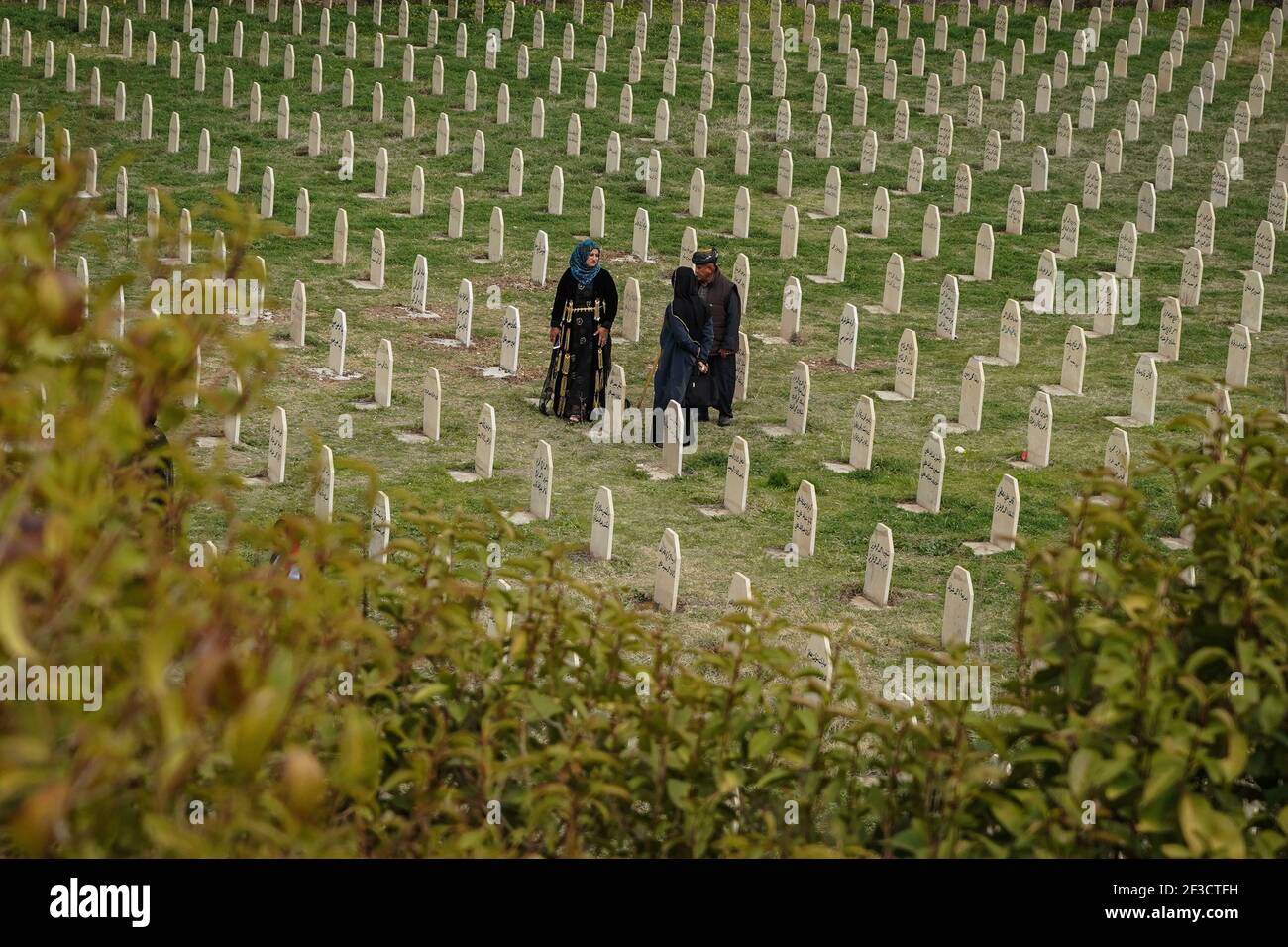 Halabja, Iraq. 16th Mar, 2021. A family visits the grave of their lost ones at Halabja Cemetery on the 33rd anniversary of Halabja chemical attack, which killed nearly 5000 people and injured about 10000, most of them were civilians. Credit: Ismael Adnan/dpa/Alamy Live News Stock Photohttps://www.alamy.com/image-license-details/?v=1https://www.alamy.com/halabja-iraq-16th-mar-2021-a-family-visits-the-grave-of-their-lost-ones-at-halabja-cemetery-on-the-33rd-anniversary-of-halabja-chemical-attack-which-killed-nearly-5000-people-and-injured-about-10000-most-of-them-were-civilians-credit-ismael-adnandpaalamy-live-news-image415175477.html
Halabja, Iraq. 16th Mar, 2021. A family visits the grave of their lost ones at Halabja Cemetery on the 33rd anniversary of Halabja chemical attack, which killed nearly 5000 people and injured about 10000, most of them were civilians. Credit: Ismael Adnan/dpa/Alamy Live News Stock Photohttps://www.alamy.com/image-license-details/?v=1https://www.alamy.com/halabja-iraq-16th-mar-2021-a-family-visits-the-grave-of-their-lost-ones-at-halabja-cemetery-on-the-33rd-anniversary-of-halabja-chemical-attack-which-killed-nearly-5000-people-and-injured-about-10000-most-of-them-were-civilians-credit-ismael-adnandpaalamy-live-news-image415175477.htmlRM2F3CTFH–Halabja, Iraq. 16th Mar, 2021. A family visits the grave of their lost ones at Halabja Cemetery on the 33rd anniversary of Halabja chemical attack, which killed nearly 5000 people and injured about 10000, most of them were civilians. Credit: Ismael Adnan/dpa/Alamy Live News
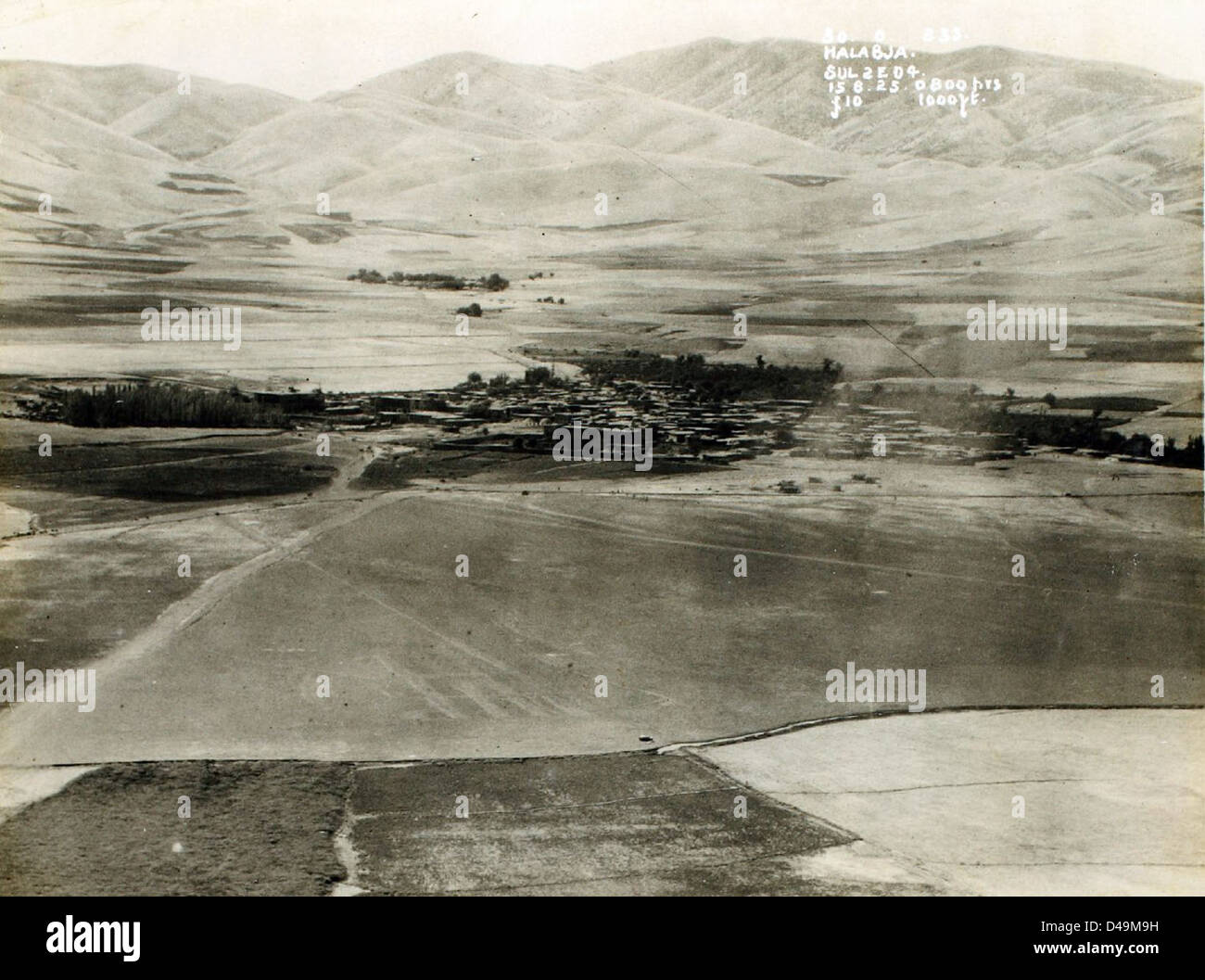 This image shows RAF operations near Halabja on the Persian border, highlighting strategic military outstations in the Middle East during WWII. It provides insight into the RAF's role in the region, preserved in the San Diego Air & Space Museum collection. Stock Photohttps://www.alamy.com/image-license-details/?v=1https://www.alamy.com/stock-photo-this-image-shows-raf-operations-near-halabja-on-the-persian-border-54303245.html
This image shows RAF operations near Halabja on the Persian border, highlighting strategic military outstations in the Middle East during WWII. It provides insight into the RAF's role in the region, preserved in the San Diego Air & Space Museum collection. Stock Photohttps://www.alamy.com/image-license-details/?v=1https://www.alamy.com/stock-photo-this-image-shows-raf-operations-near-halabja-on-the-persian-border-54303245.htmlRMD49M9H–This image shows RAF operations near Halabja on the Persian border, highlighting strategic military outstations in the Middle East during WWII. It provides insight into the RAF's role in the region, preserved in the San Diego Air & Space Museum collection.
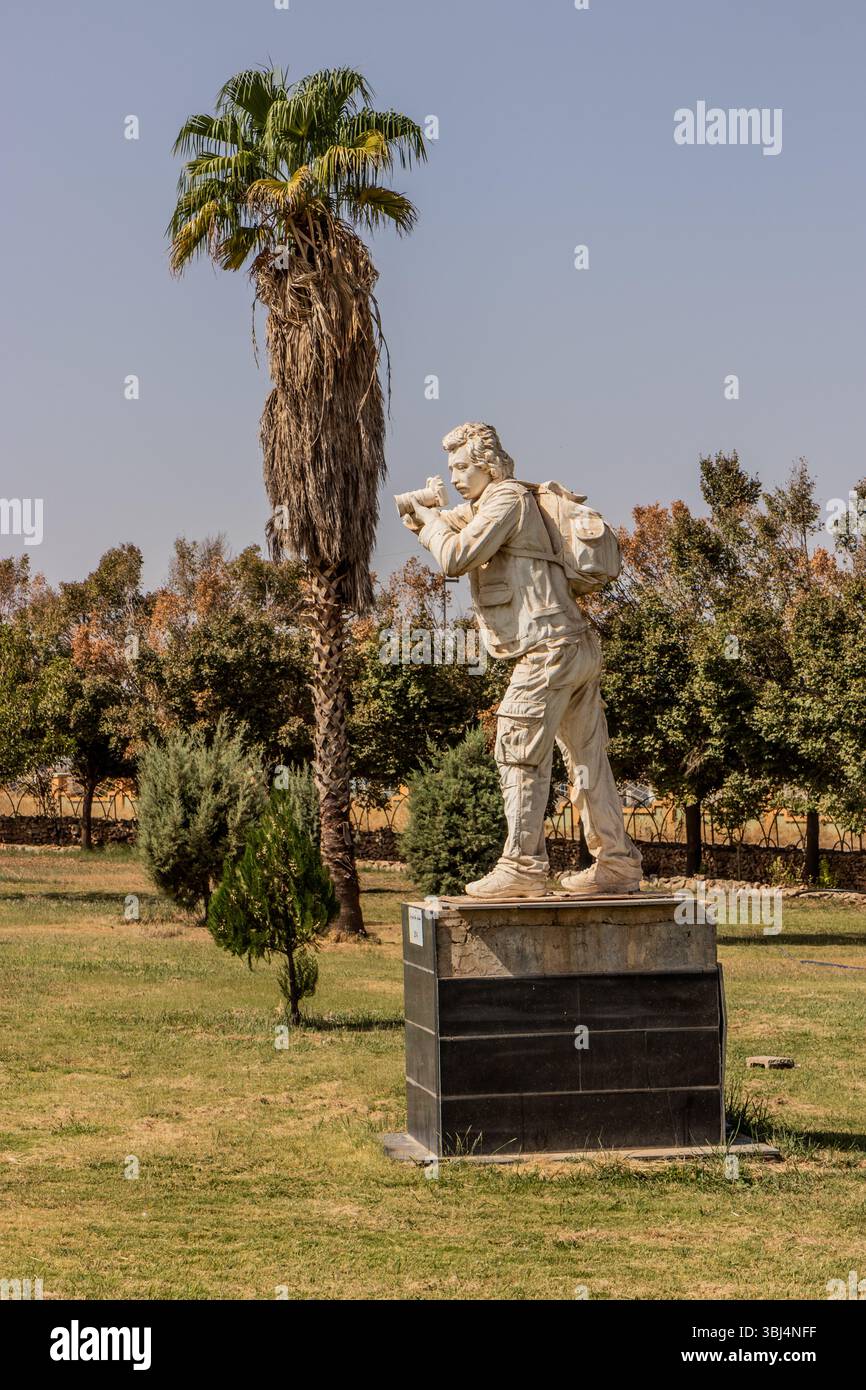 HALABJA, IRAQ - OCTOBER 6, 2022: Halabja Monument And Peace Museum grounds. Statue of journalist Kaveh Golestan covering the chemical attack in Halabj Stock Photohttps://www.alamy.com/image-license-details/?v=1https://www.alamy.com/halabja-iraq-october-6-2022-halabja-monument-and-peace-museum-grounds-statue-of-journalist-kaveh-golestan-covering-the-chemical-attack-in-halabj-image682372867.html
HALABJA, IRAQ - OCTOBER 6, 2022: Halabja Monument And Peace Museum grounds. Statue of journalist Kaveh Golestan covering the chemical attack in Halabj Stock Photohttps://www.alamy.com/image-license-details/?v=1https://www.alamy.com/halabja-iraq-october-6-2022-halabja-monument-and-peace-museum-grounds-statue-of-journalist-kaveh-golestan-covering-the-chemical-attack-in-halabj-image682372867.htmlRF3BJ4NFF–HALABJA, IRAQ - OCTOBER 6, 2022: Halabja Monument And Peace Museum grounds. Statue of journalist Kaveh Golestan covering the chemical attack in Halabj
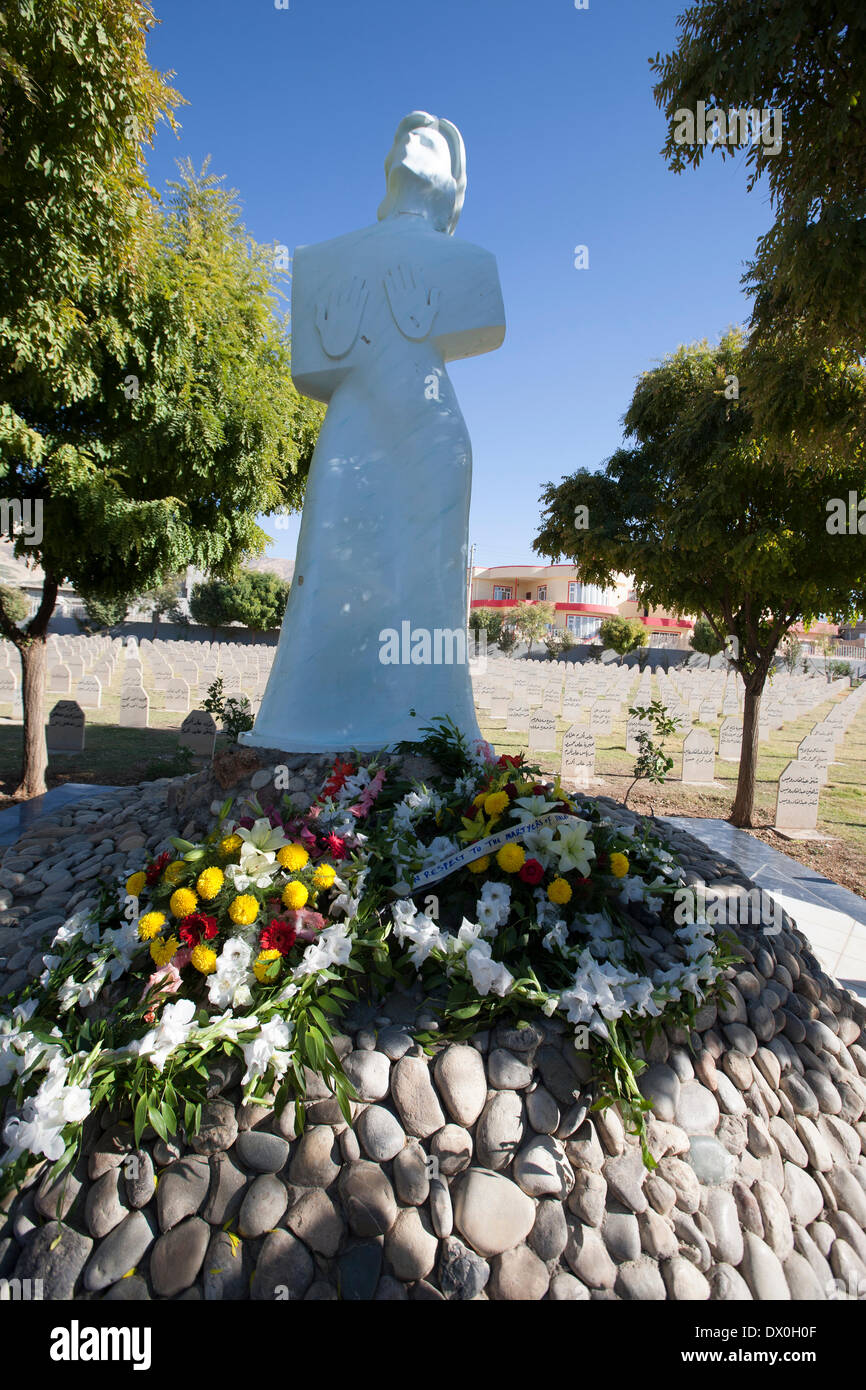 Halabja, Suleimania, IRAQ -- The symbolic cemetery erected for the victims of Halabja massacre on 21 October, 2011. Halabja, a Kurdish town in Northern Iraq was bombed with chemical agents by the Saddam regime in efforts to decimate the Kurdish population in the North on March 16, 1988. Photo by Bikem Ekberzade Stock Photohttps://www.alamy.com/image-license-details/?v=1https://www.alamy.com/halabja-suleimania-iraq-the-symbolic-cemetery-erected-for-the-victims-image67625503.html
Halabja, Suleimania, IRAQ -- The symbolic cemetery erected for the victims of Halabja massacre on 21 October, 2011. Halabja, a Kurdish town in Northern Iraq was bombed with chemical agents by the Saddam regime in efforts to decimate the Kurdish population in the North on March 16, 1988. Photo by Bikem Ekberzade Stock Photohttps://www.alamy.com/image-license-details/?v=1https://www.alamy.com/halabja-suleimania-iraq-the-symbolic-cemetery-erected-for-the-victims-image67625503.htmlRMDX0H0F–Halabja, Suleimania, IRAQ -- The symbolic cemetery erected for the victims of Halabja massacre on 21 October, 2011. Halabja, a Kurdish town in Northern Iraq was bombed with chemical agents by the Saddam regime in efforts to decimate the Kurdish population in the North on March 16, 1988. Photo by Bikem Ekberzade
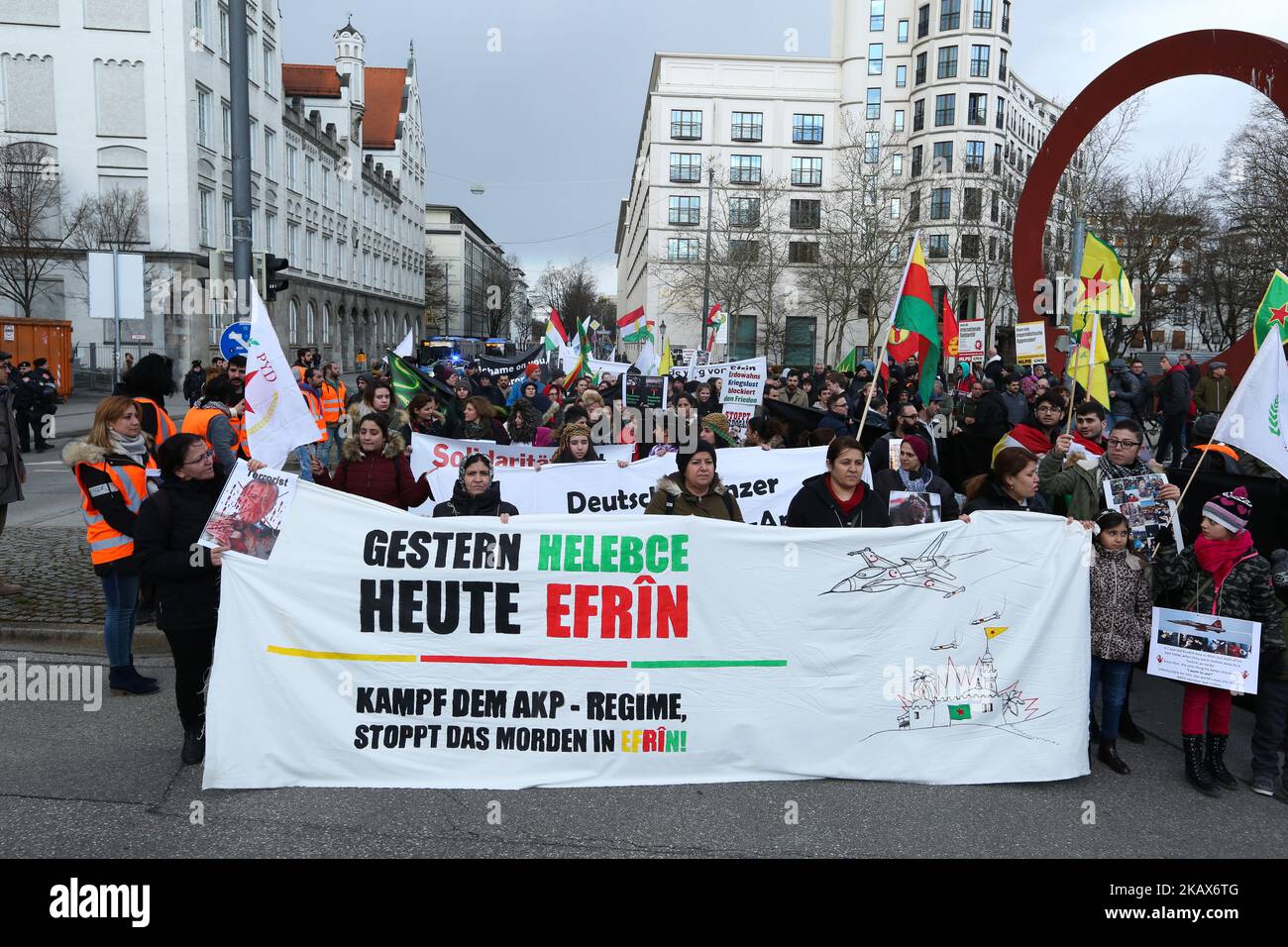 Demonstration at the beginning. Hundreds of people demonstrated in Munich, Germany, on 16 March 2018 to remember the chemical attack of Halabja by Sadam Hussein and to protest against Turkey's war on Afrin. The protest stayed very peaceful. (Photo by Alexander Pohl/NurPhoto) Stock Photohttps://www.alamy.com/image-license-details/?v=1https://www.alamy.com/demonstration-at-the-beginning-hundreds-of-people-demonstrated-in-munich-germany-on-16-march-2018-to-remember-the-chemical-attack-of-halabja-by-sadam-hussein-and-to-protest-against-turkeys-war-on-afrin-the-protest-stayed-very-peaceful-photo-by-alexander-pohlnurphoto-image488613008.html
Demonstration at the beginning. Hundreds of people demonstrated in Munich, Germany, on 16 March 2018 to remember the chemical attack of Halabja by Sadam Hussein and to protest against Turkey's war on Afrin. The protest stayed very peaceful. (Photo by Alexander Pohl/NurPhoto) Stock Photohttps://www.alamy.com/image-license-details/?v=1https://www.alamy.com/demonstration-at-the-beginning-hundreds-of-people-demonstrated-in-munich-germany-on-16-march-2018-to-remember-the-chemical-attack-of-halabja-by-sadam-hussein-and-to-protest-against-turkeys-war-on-afrin-the-protest-stayed-very-peaceful-photo-by-alexander-pohlnurphoto-image488613008.htmlRM2KAX6TG–Demonstration at the beginning. Hundreds of people demonstrated in Munich, Germany, on 16 March 2018 to remember the chemical attack of Halabja by Sadam Hussein and to protest against Turkey's war on Afrin. The protest stayed very peaceful. (Photo by Alexander Pohl/NurPhoto)
 Portrait of Middle Aged Kurdish Man Halabja Northern Iraq Stock Photohttps://www.alamy.com/image-license-details/?v=1https://www.alamy.com/portrait-of-middle-aged-kurdish-man-halabja-northern-iraq-image3206781.html
Portrait of Middle Aged Kurdish Man Halabja Northern Iraq Stock Photohttps://www.alamy.com/image-license-details/?v=1https://www.alamy.com/portrait-of-middle-aged-kurdish-man-halabja-northern-iraq-image3206781.htmlRMAYXE7E–Portrait of Middle Aged Kurdish Man Halabja Northern Iraq
 A view of the grave yard where the victims of the Halabja chemical attack were buried.The 33rd anniversary of the chemical attack carried out by the Iraqi government on March 16, 1988 on the city of Halabja in the Kurdistan Region, which killed nearly 5000 people and injured 10000 most of them civilians. Thousands of the city's residents died in the year following the attack due to health complications and due to diseases and birth defects. Stock Photohttps://www.alamy.com/image-license-details/?v=1https://www.alamy.com/a-view-of-the-grave-yard-where-the-victims-of-the-halabja-chemical-attack-were-buriedthe-33rd-anniversary-of-the-chemical-attack-carried-out-by-the-iraqi-government-on-march-16-1988-on-the-city-of-halabja-in-the-kurdistan-region-which-killed-nearly-5000-people-and-injured-10000-most-of-them-civilians-thousands-of-the-citys-residents-died-in-the-year-following-the-attack-due-to-health-complications-and-due-to-diseases-and-birth-defects-image415223374.html
A view of the grave yard where the victims of the Halabja chemical attack were buried.The 33rd anniversary of the chemical attack carried out by the Iraqi government on March 16, 1988 on the city of Halabja in the Kurdistan Region, which killed nearly 5000 people and injured 10000 most of them civilians. Thousands of the city's residents died in the year following the attack due to health complications and due to diseases and birth defects. Stock Photohttps://www.alamy.com/image-license-details/?v=1https://www.alamy.com/a-view-of-the-grave-yard-where-the-victims-of-the-halabja-chemical-attack-were-buriedthe-33rd-anniversary-of-the-chemical-attack-carried-out-by-the-iraqi-government-on-march-16-1988-on-the-city-of-halabja-in-the-kurdistan-region-which-killed-nearly-5000-people-and-injured-10000-most-of-them-civilians-thousands-of-the-citys-residents-died-in-the-year-following-the-attack-due-to-health-complications-and-due-to-diseases-and-birth-defects-image415223374.htmlRM2F3F1J6–A view of the grave yard where the victims of the Halabja chemical attack were buried.The 33rd anniversary of the chemical attack carried out by the Iraqi government on March 16, 1988 on the city of Halabja in the Kurdistan Region, which killed nearly 5000 people and injured 10000 most of them civilians. Thousands of the city's residents died in the year following the attack due to health complications and due to diseases and birth defects.
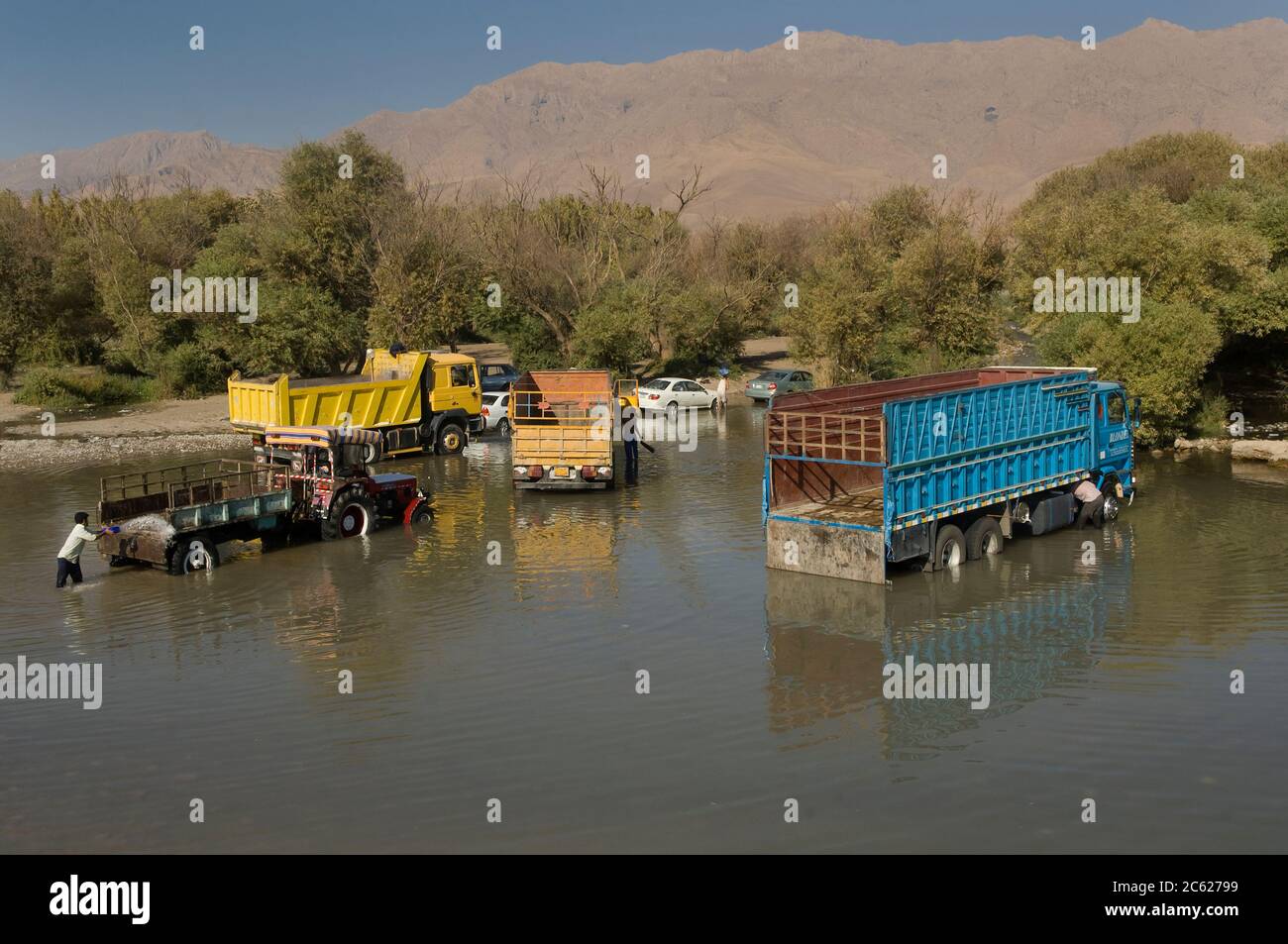 Halabja, North Iraq. October 5th 2009 Trucks and tractors being washed in the river on the road to Halabja, Kurdish North Iraq. Stock Photohttps://www.alamy.com/image-license-details/?v=1https://www.alamy.com/halabja-north-iraq-october-5th-2009-trucks-and-tractors-being-washed-in-the-river-on-the-road-to-halabja-kurdish-north-iraq-image365155317.html
Halabja, North Iraq. October 5th 2009 Trucks and tractors being washed in the river on the road to Halabja, Kurdish North Iraq. Stock Photohttps://www.alamy.com/image-license-details/?v=1https://www.alamy.com/halabja-north-iraq-october-5th-2009-trucks-and-tractors-being-washed-in-the-river-on-the-road-to-halabja-kurdish-north-iraq-image365155317.htmlRM2C62799–Halabja, North Iraq. October 5th 2009 Trucks and tractors being washed in the river on the road to Halabja, Kurdish North Iraq.
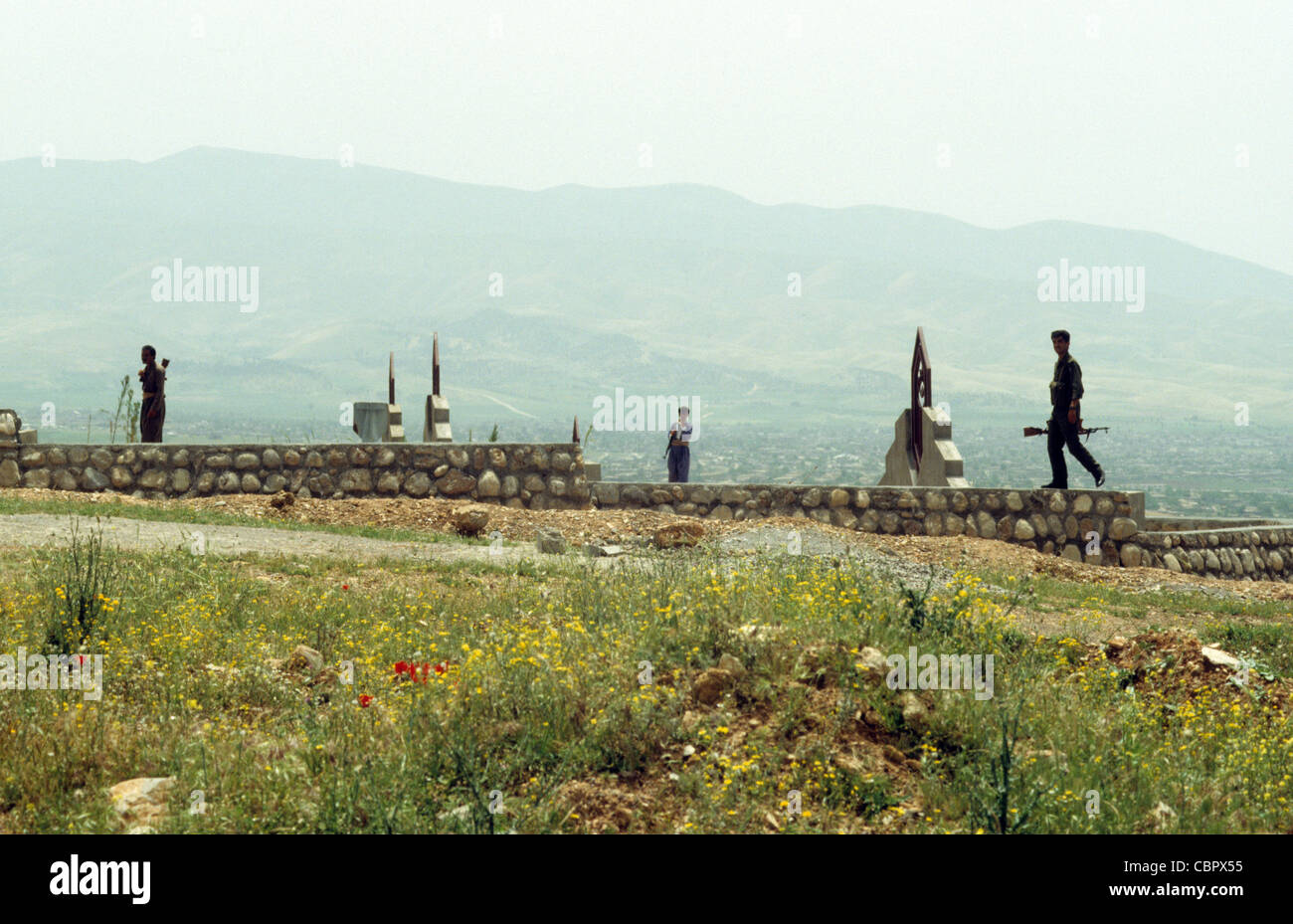 Halabja, Iraqi Kurdistan, once home to 5,000 Kurds attacked by Saddam Hussein with chemical weapons in March 1988 Stock Photohttps://www.alamy.com/image-license-details/?v=1https://www.alamy.com/stock-photo-halabja-iraqi-kurdistan-once-home-to-5000-kurds-attacked-by-saddam-41685425.html
Halabja, Iraqi Kurdistan, once home to 5,000 Kurds attacked by Saddam Hussein with chemical weapons in March 1988 Stock Photohttps://www.alamy.com/image-license-details/?v=1https://www.alamy.com/stock-photo-halabja-iraqi-kurdistan-once-home-to-5000-kurds-attacked-by-saddam-41685425.htmlRMCBPX55–Halabja, Iraqi Kurdistan, once home to 5,000 Kurds attacked by Saddam Hussein with chemical weapons in March 1988
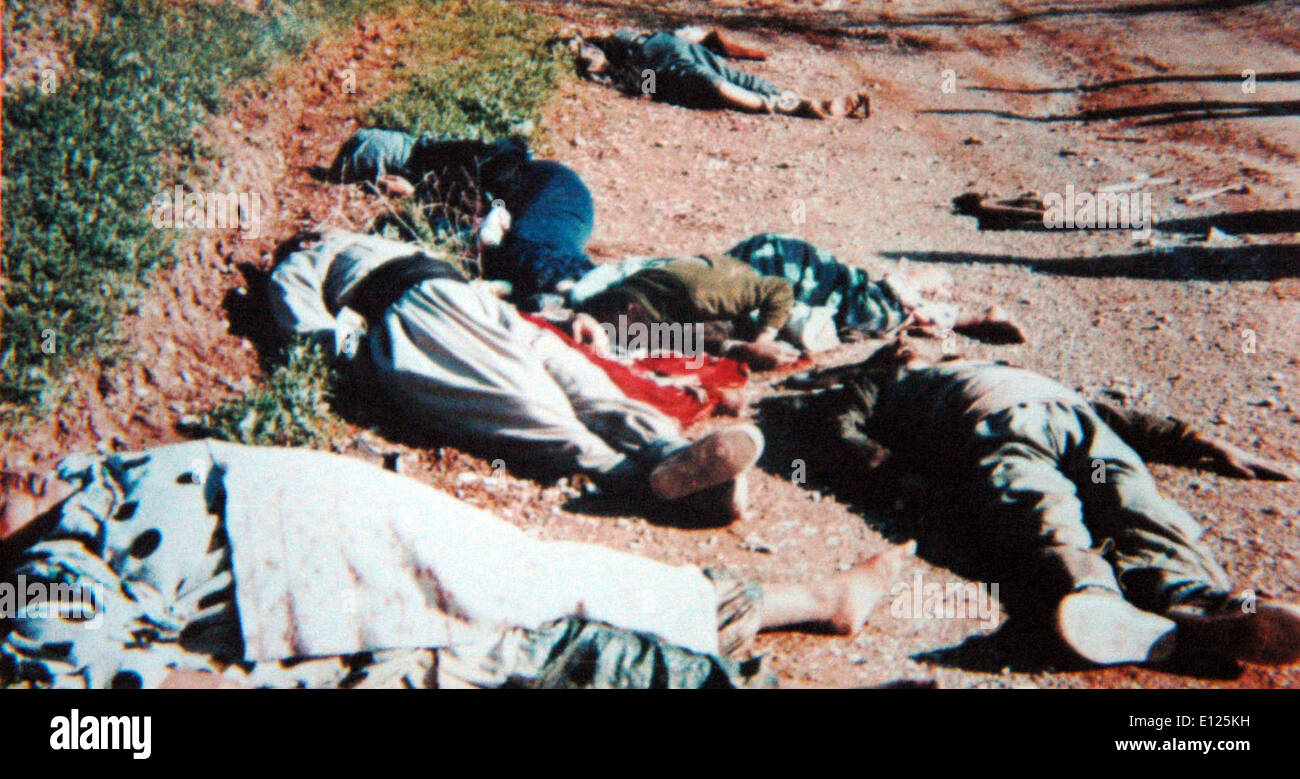 Mar 16, 1988 - Halabja, Iraq - Kurdish civilians killed by the gas attack Stock Photohttps://www.alamy.com/image-license-details/?v=1https://www.alamy.com/mar-16-1988-halabja-iraq-kurdish-civilians-killed-by-the-gas-attack-image69504501.html
Mar 16, 1988 - Halabja, Iraq - Kurdish civilians killed by the gas attack Stock Photohttps://www.alamy.com/image-license-details/?v=1https://www.alamy.com/mar-16-1988-halabja-iraq-kurdish-civilians-killed-by-the-gas-attack-image69504501.htmlRME125KH–Mar 16, 1988 - Halabja, Iraq - Kurdish civilians killed by the gas attack
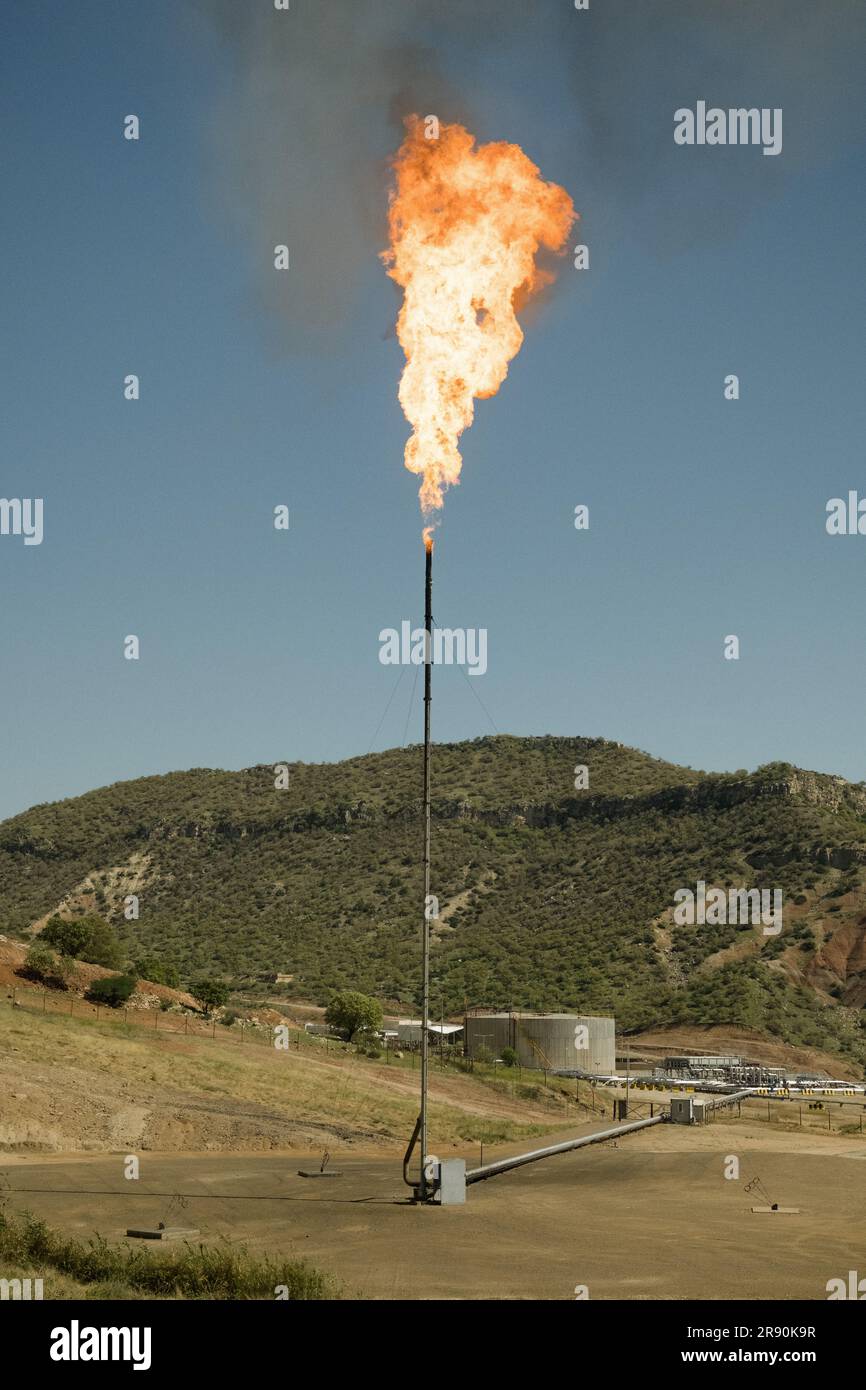 Gabriel Gauffre / Le Pictorium - Bashur - 30/3/2021 - Iraq / Iraqi Kurdistan / Erbil - Oil flare, Lalish area. From the ashes of the 2003 American invasion of Iraq and the toppling of Saddam Hussein's regime, Iraq's Kurds managed to wrestle a form of relative independence. Still technically part of Iraq, Iraqi Kurdistan, in the north of the country, enjoys a heightened level of independence. Entering Iraqi Kurdistan is like walking into a ghost country. A country which Iraq, of which it is a part, only exists through scraps, like old flags in a back office or a patch on a border guard' Stock Photohttps://www.alamy.com/image-license-details/?v=1https://www.alamy.com/gabriel-gauffre-le-pictorium-bashur-3032021-iraq-iraqi-kurdistan-erbil-oil-flare-lalish-area-from-the-ashes-of-the-2003-american-invasion-of-iraq-and-the-toppling-of-saddam-husseins-regime-iraqs-kurds-managed-to-wrestle-a-form-of-relative-independence-still-technically-part-of-iraq-iraqi-kurdistan-in-the-north-of-the-country-enjoys-a-heightened-level-of-independence-entering-iraqi-kurdistan-is-like-walking-into-a-ghost-country-a-country-which-iraq-of-which-it-is-a-part-only-exists-through-scraps-like-old-flags-in-a-back-office-or-a-patch-on-a-border-guard-image556278851.html
Gabriel Gauffre / Le Pictorium - Bashur - 30/3/2021 - Iraq / Iraqi Kurdistan / Erbil - Oil flare, Lalish area. From the ashes of the 2003 American invasion of Iraq and the toppling of Saddam Hussein's regime, Iraq's Kurds managed to wrestle a form of relative independence. Still technically part of Iraq, Iraqi Kurdistan, in the north of the country, enjoys a heightened level of independence. Entering Iraqi Kurdistan is like walking into a ghost country. A country which Iraq, of which it is a part, only exists through scraps, like old flags in a back office or a patch on a border guard' Stock Photohttps://www.alamy.com/image-license-details/?v=1https://www.alamy.com/gabriel-gauffre-le-pictorium-bashur-3032021-iraq-iraqi-kurdistan-erbil-oil-flare-lalish-area-from-the-ashes-of-the-2003-american-invasion-of-iraq-and-the-toppling-of-saddam-husseins-regime-iraqs-kurds-managed-to-wrestle-a-form-of-relative-independence-still-technically-part-of-iraq-iraqi-kurdistan-in-the-north-of-the-country-enjoys-a-heightened-level-of-independence-entering-iraqi-kurdistan-is-like-walking-into-a-ghost-country-a-country-which-iraq-of-which-it-is-a-part-only-exists-through-scraps-like-old-flags-in-a-back-office-or-a-patch-on-a-border-guard-image556278851.htmlRM2R90K9R–Gabriel Gauffre / Le Pictorium - Bashur - 30/3/2021 - Iraq / Iraqi Kurdistan / Erbil - Oil flare, Lalish area. From the ashes of the 2003 American invasion of Iraq and the toppling of Saddam Hussein's regime, Iraq's Kurds managed to wrestle a form of relative independence. Still technically part of Iraq, Iraqi Kurdistan, in the north of the country, enjoys a heightened level of independence. Entering Iraqi Kurdistan is like walking into a ghost country. A country which Iraq, of which it is a part, only exists through scraps, like old flags in a back office or a patch on a border guard'
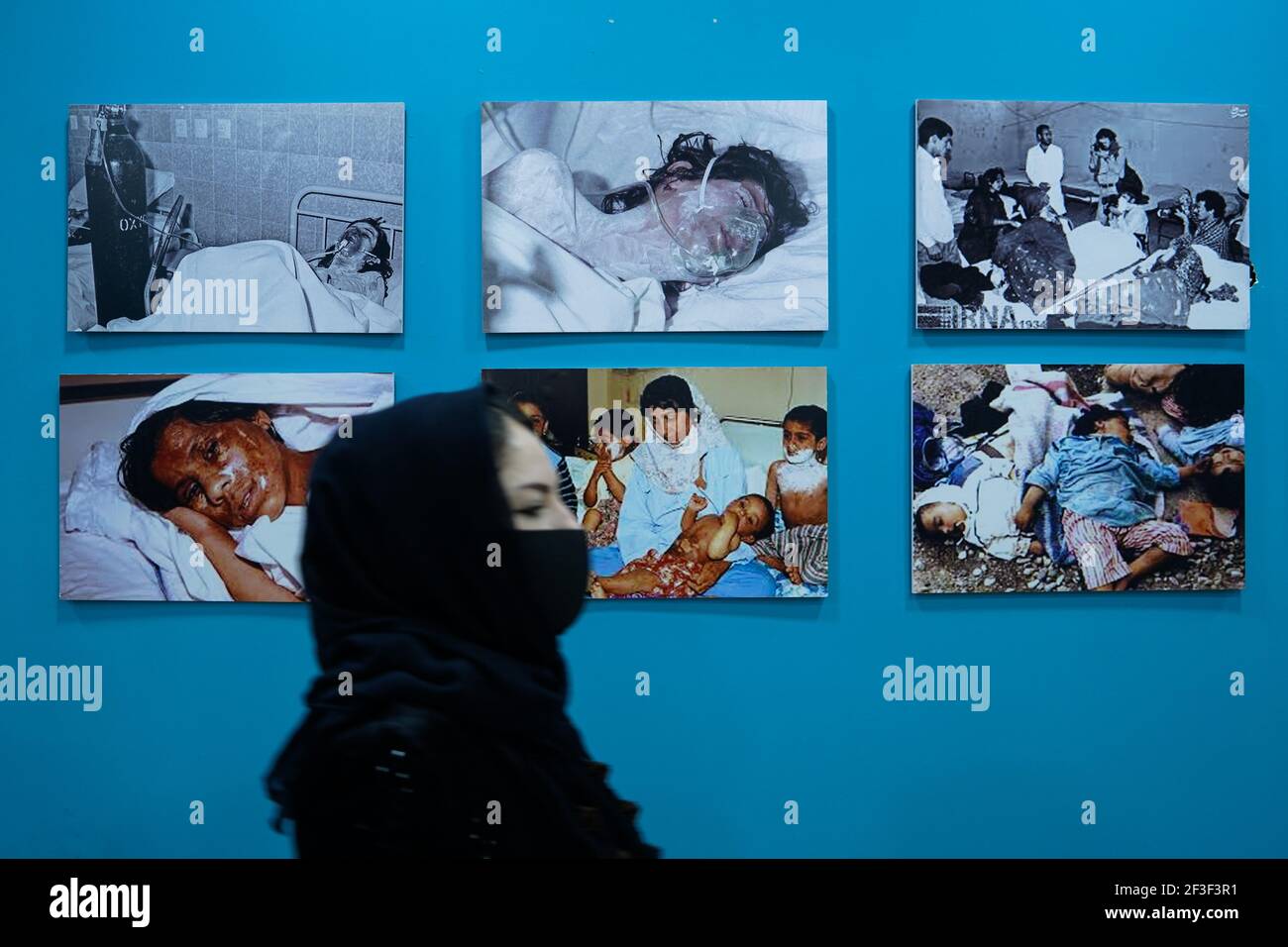 Halabja, Iraq. 16th Mar, 2021. A woman walks past photos of victims of the Halabja chemical attack.The 33rd anniversary of the chemical attack carried out by the Iraqi government on March 16, 1988 on the city of Halabja in the Kurdistan Region, which killed nearly 5000 people and injured 10000 most of them civilians. Thousands of the city's residents died in the year following the attack due to health complications and due to diseases and birth defects. (Photo by Ismael Adnan/SOPA Images/Sipa USA) Credit: Sipa USA/Alamy Live News Stock Photohttps://www.alamy.com/image-license-details/?v=1https://www.alamy.com/halabja-iraq-16th-mar-2021-a-woman-walks-past-photos-of-victims-of-the-halabja-chemical-attackthe-33rd-anniversary-of-the-chemical-attack-carried-out-by-the-iraqi-government-on-march-16-1988-on-the-city-of-halabja-in-the-kurdistan-region-which-killed-nearly-5000-people-and-injured-10000-most-of-them-civilians-thousands-of-the-citys-residents-died-in-the-year-following-the-attack-due-to-health-complications-and-due-to-diseases-and-birth-defects-photo-by-ismael-adnansopa-imagessipa-usa-credit-sipa-usaalamy-live-news-image415225077.html
Halabja, Iraq. 16th Mar, 2021. A woman walks past photos of victims of the Halabja chemical attack.The 33rd anniversary of the chemical attack carried out by the Iraqi government on March 16, 1988 on the city of Halabja in the Kurdistan Region, which killed nearly 5000 people and injured 10000 most of them civilians. Thousands of the city's residents died in the year following the attack due to health complications and due to diseases and birth defects. (Photo by Ismael Adnan/SOPA Images/Sipa USA) Credit: Sipa USA/Alamy Live News Stock Photohttps://www.alamy.com/image-license-details/?v=1https://www.alamy.com/halabja-iraq-16th-mar-2021-a-woman-walks-past-photos-of-victims-of-the-halabja-chemical-attackthe-33rd-anniversary-of-the-chemical-attack-carried-out-by-the-iraqi-government-on-march-16-1988-on-the-city-of-halabja-in-the-kurdistan-region-which-killed-nearly-5000-people-and-injured-10000-most-of-them-civilians-thousands-of-the-citys-residents-died-in-the-year-following-the-attack-due-to-health-complications-and-due-to-diseases-and-birth-defects-photo-by-ismael-adnansopa-imagessipa-usa-credit-sipa-usaalamy-live-news-image415225077.htmlRM2F3F3R1–Halabja, Iraq. 16th Mar, 2021. A woman walks past photos of victims of the Halabja chemical attack.The 33rd anniversary of the chemical attack carried out by the Iraqi government on March 16, 1988 on the city of Halabja in the Kurdistan Region, which killed nearly 5000 people and injured 10000 most of them civilians. Thousands of the city's residents died in the year following the attack due to health complications and due to diseases and birth defects. (Photo by Ismael Adnan/SOPA Images/Sipa USA) Credit: Sipa USA/Alamy Live News
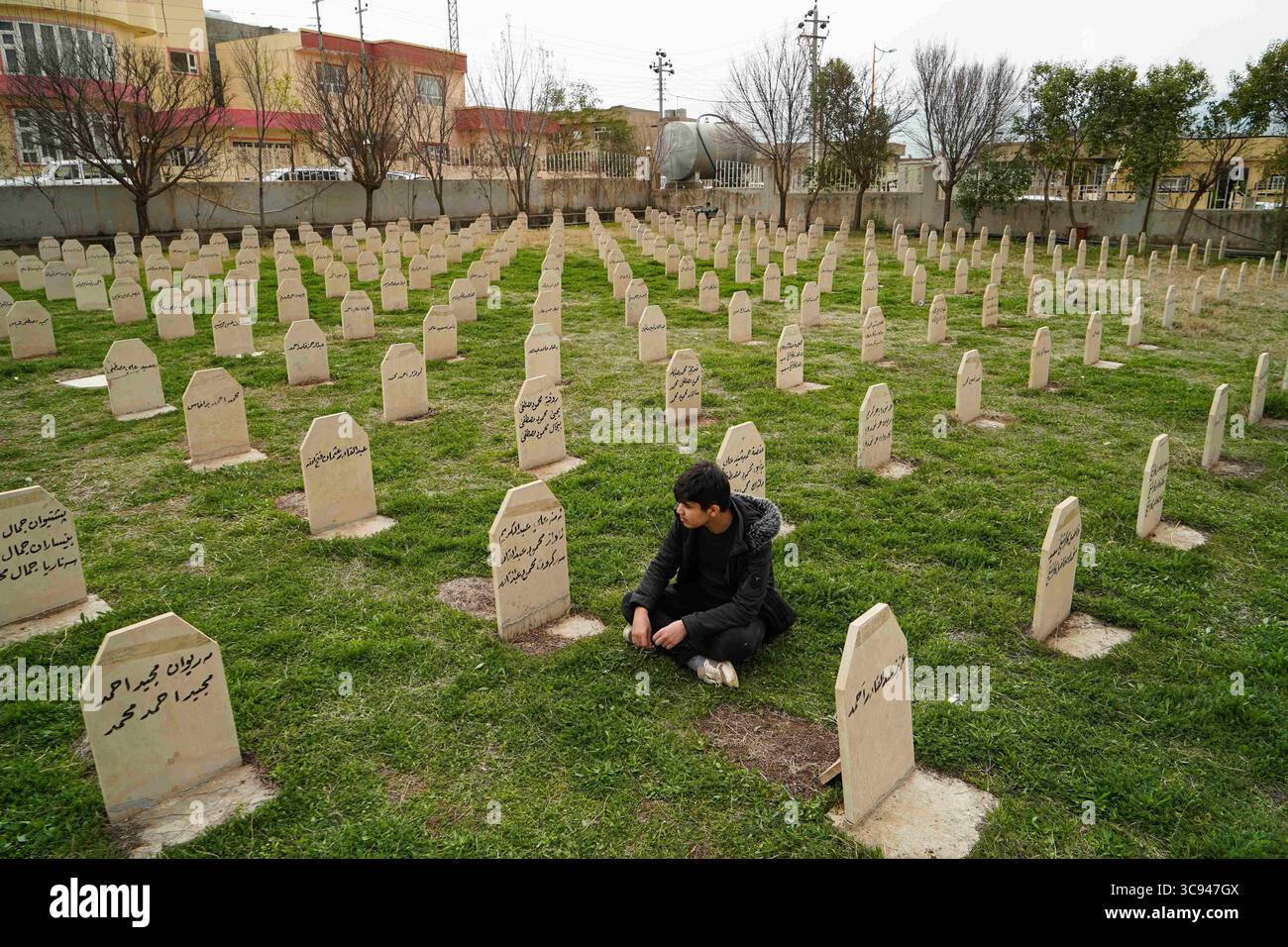 March 16, 2021, Halabja, Sulayman, Iraq: A man sits in the graveyard of the victims of the Halabja chemical attack..The 33rd anniversary of the chemical attack carried out by the Iraqi government on March 16, 1988 on the city of Halabja in the Kurdistan Region, which killed nearly 5000 people and injured 10000 most of them civilians. Thousands of the city's residents died in the year following the attack due to health complications and due to diseases and birth defects. (Credit Image: © Ismael Adnan/SOPA Images via ZUMA Wire) Stock Photohttps://www.alamy.com/image-license-details/?v=1https://www.alamy.com/march-16-2021-halabja-sulayman-iraq-a-man-sits-in-the-graveyard-of-the-victims-of-the-halabja-chemical-attackthe-33rd-anniversary-of-the-chemical-attack-carried-out-by-the-iraqi-government-on-march-16-1988-on-the-city-of-halabja-in-the-kurdistan-region-which-killed-nearly-5000-people-and-injured-10000-most-of-them-civilians-thousands-of-the-citys-residents-died-in-the-year-following-the-attack-due-to-health-complications-and-due-to-diseases-and-birth-defects-credit-image-ismael-adnansopa-images-via-zuma-wire-image694040394.html
March 16, 2021, Halabja, Sulayman, Iraq: A man sits in the graveyard of the victims of the Halabja chemical attack..The 33rd anniversary of the chemical attack carried out by the Iraqi government on March 16, 1988 on the city of Halabja in the Kurdistan Region, which killed nearly 5000 people and injured 10000 most of them civilians. Thousands of the city's residents died in the year following the attack due to health complications and due to diseases and birth defects. (Credit Image: © Ismael Adnan/SOPA Images via ZUMA Wire) Stock Photohttps://www.alamy.com/image-license-details/?v=1https://www.alamy.com/march-16-2021-halabja-sulayman-iraq-a-man-sits-in-the-graveyard-of-the-victims-of-the-halabja-chemical-attackthe-33rd-anniversary-of-the-chemical-attack-carried-out-by-the-iraqi-government-on-march-16-1988-on-the-city-of-halabja-in-the-kurdistan-region-which-killed-nearly-5000-people-and-injured-10000-most-of-them-civilians-thousands-of-the-citys-residents-died-in-the-year-following-the-attack-due-to-health-complications-and-due-to-diseases-and-birth-defects-credit-image-ismael-adnansopa-images-via-zuma-wire-image694040394.htmlRM3C947GX–March 16, 2021, Halabja, Sulayman, Iraq: A man sits in the graveyard of the victims of the Halabja chemical attack..The 33rd anniversary of the chemical attack carried out by the Iraqi government on March 16, 1988 on the city of Halabja in the Kurdistan Region, which killed nearly 5000 people and injured 10000 most of them civilians. Thousands of the city's residents died in the year following the attack due to health complications and due to diseases and birth defects. (Credit Image: © Ismael Adnan/SOPA Images via ZUMA Wire)
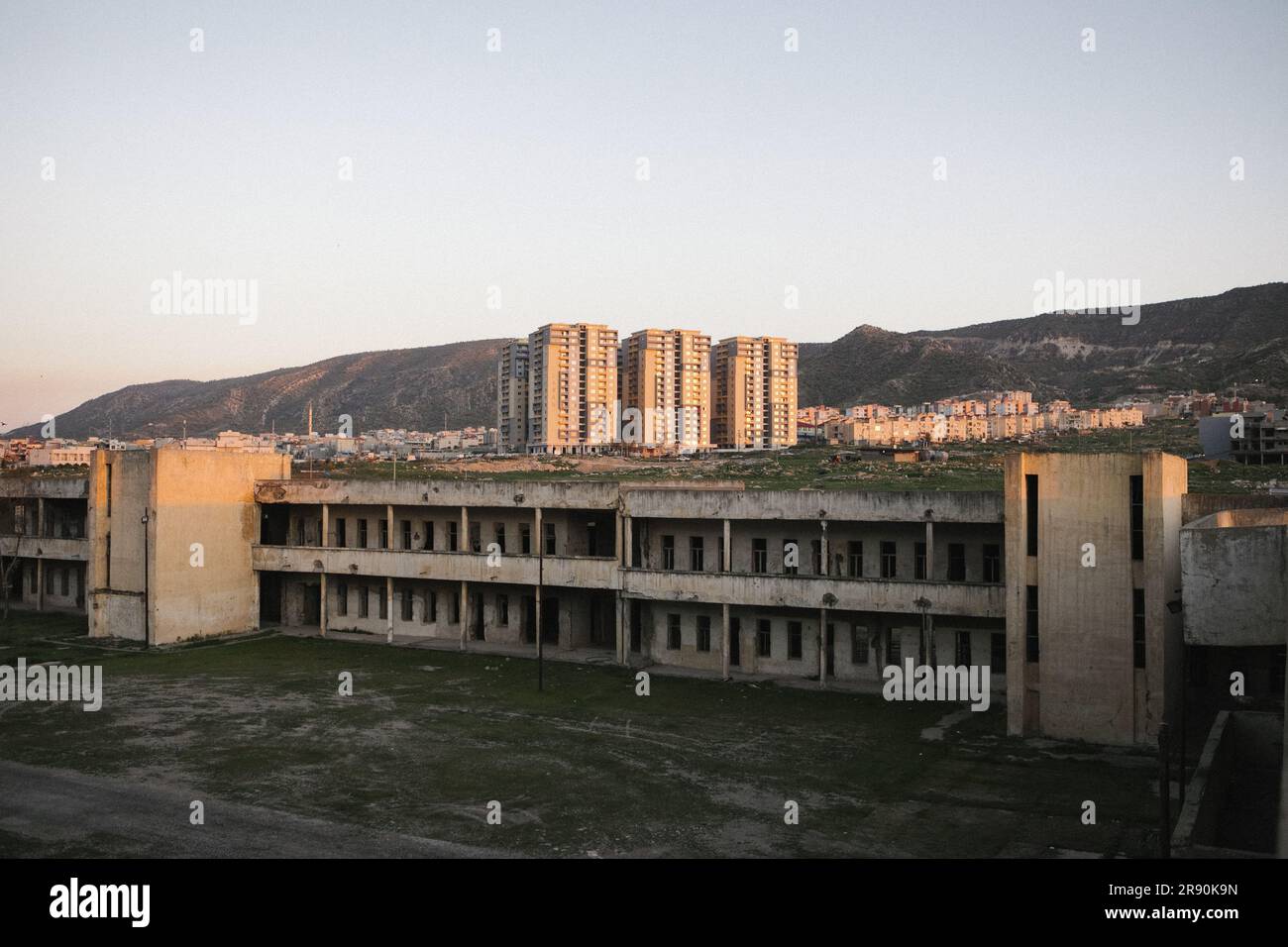 Gabriel Gauffre / Le Pictorium - Bashur - 29/3/2021 - Iraq / Iraqi Kurdistan / Erbil - Saddam Hussein's regime former prison, Duhok. From the ashes of the 2003 American invasion of Iraq and the toppling of Saddam Hussein's regime, Iraq's Kurds managed to wrestle a form of relative independence. Still technically part of Iraq, Iraqi Kurdistan, in the north of the country, enjoys a heightened level of independence. To the Kurds, it is Bas?r (Bahsur), the southern province of the 4 composing what could one day be their own country, Kurdistan. Bashur is a territory that has all the making Stock Photohttps://www.alamy.com/image-license-details/?v=1https://www.alamy.com/gabriel-gauffre-le-pictorium-bashur-2932021-iraq-iraqi-kurdistan-erbil-saddam-husseins-regime-former-prison-duhok-from-the-ashes-of-the-2003-american-invasion-of-iraq-and-the-toppling-of-saddam-husseins-regime-iraqs-kurds-managed-to-wrestle-a-form-of-relative-independence-still-technically-part-of-iraq-iraqi-kurdistan-in-the-north-of-the-country-enjoys-a-heightened-level-of-independence-to-the-kurds-it-is-basr-bahsur-the-southern-province-of-the-4-composing-what-could-one-day-be-their-own-country-kurdistan-bashur-is-a-territory-that-has-all-the-making-image556278849.html
Gabriel Gauffre / Le Pictorium - Bashur - 29/3/2021 - Iraq / Iraqi Kurdistan / Erbil - Saddam Hussein's regime former prison, Duhok. From the ashes of the 2003 American invasion of Iraq and the toppling of Saddam Hussein's regime, Iraq's Kurds managed to wrestle a form of relative independence. Still technically part of Iraq, Iraqi Kurdistan, in the north of the country, enjoys a heightened level of independence. To the Kurds, it is Bas?r (Bahsur), the southern province of the 4 composing what could one day be their own country, Kurdistan. Bashur is a territory that has all the making Stock Photohttps://www.alamy.com/image-license-details/?v=1https://www.alamy.com/gabriel-gauffre-le-pictorium-bashur-2932021-iraq-iraqi-kurdistan-erbil-saddam-husseins-regime-former-prison-duhok-from-the-ashes-of-the-2003-american-invasion-of-iraq-and-the-toppling-of-saddam-husseins-regime-iraqs-kurds-managed-to-wrestle-a-form-of-relative-independence-still-technically-part-of-iraq-iraqi-kurdistan-in-the-north-of-the-country-enjoys-a-heightened-level-of-independence-to-the-kurds-it-is-basr-bahsur-the-southern-province-of-the-4-composing-what-could-one-day-be-their-own-country-kurdistan-bashur-is-a-territory-that-has-all-the-making-image556278849.htmlRM2R90K9N–Gabriel Gauffre / Le Pictorium - Bashur - 29/3/2021 - Iraq / Iraqi Kurdistan / Erbil - Saddam Hussein's regime former prison, Duhok. From the ashes of the 2003 American invasion of Iraq and the toppling of Saddam Hussein's regime, Iraq's Kurds managed to wrestle a form of relative independence. Still technically part of Iraq, Iraqi Kurdistan, in the north of the country, enjoys a heightened level of independence. To the Kurds, it is Bas?r (Bahsur), the southern province of the 4 composing what could one day be their own country, Kurdistan. Bashur is a territory that has all the making
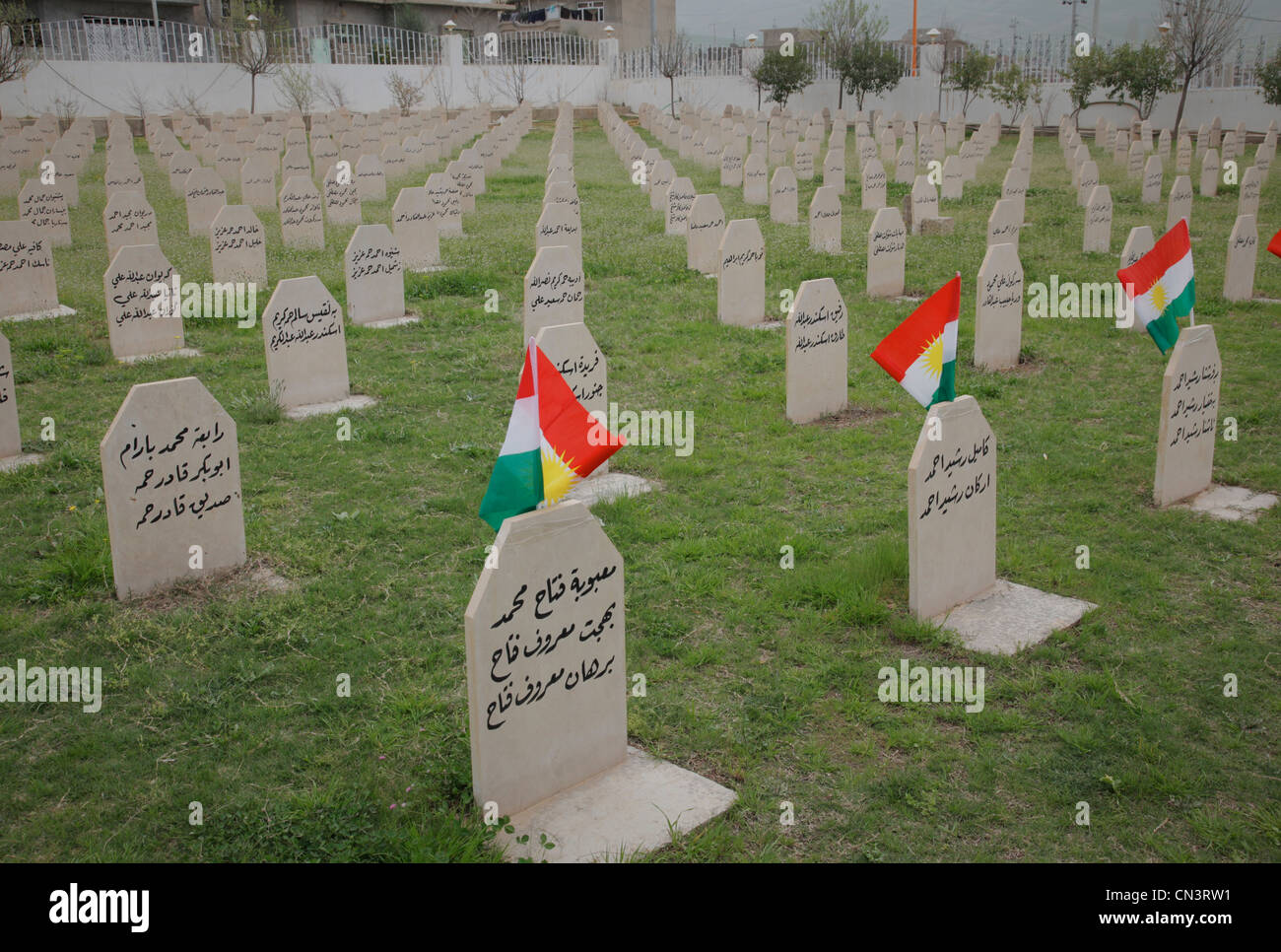 A memorial of Halabja in Iraqi Kurdistan. In marsh 16: th 1988 the city was attacked by Saddam Hussein's army. 5000 was killed by gas. Operation Anfal Stock Photohttps://www.alamy.com/image-license-details/?v=1https://www.alamy.com/stock-photo-a-memorial-of-halabja-in-iraqi-kurdistan-in-marsh-16-th-1988-the-city-47413101.html
A memorial of Halabja in Iraqi Kurdistan. In marsh 16: th 1988 the city was attacked by Saddam Hussein's army. 5000 was killed by gas. Operation Anfal Stock Photohttps://www.alamy.com/image-license-details/?v=1https://www.alamy.com/stock-photo-a-memorial-of-halabja-in-iraqi-kurdistan-in-marsh-16-th-1988-the-city-47413101.htmlRFCN3RW1–A memorial of Halabja in Iraqi Kurdistan. In marsh 16: th 1988 the city was attacked by Saddam Hussein's army. 5000 was killed by gas. Operation Anfal
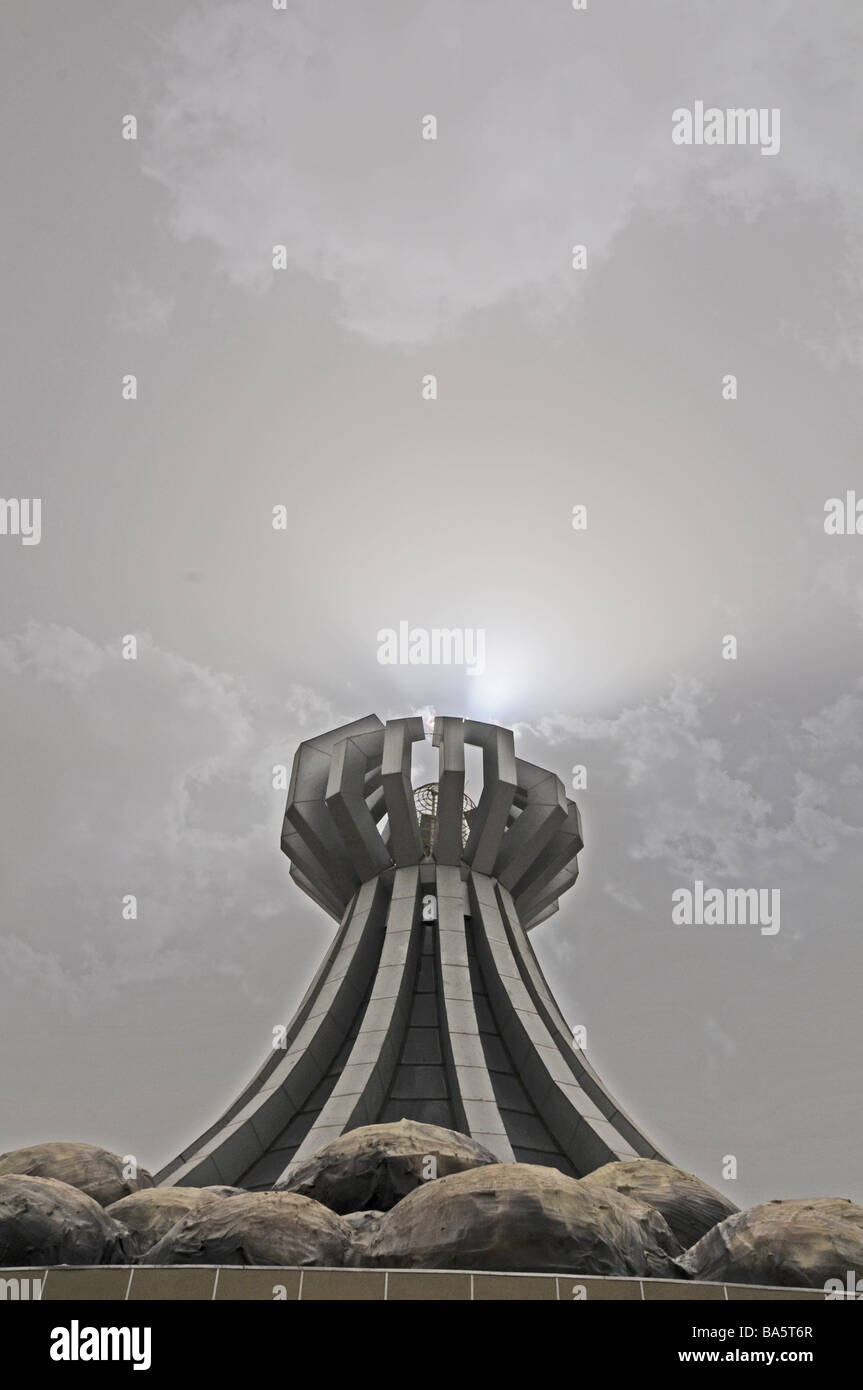 A monument commemorating the 1988 chemical gas attack on Halabja by Saddam Hussein's military. Photo taken in Halabja, Iraq. Stock Photohttps://www.alamy.com/image-license-details/?v=1https://www.alamy.com/stock-photo-a-monument-commemorating-the-1988-chemical-gas-attack-on-halabja-by-23485695.html
A monument commemorating the 1988 chemical gas attack on Halabja by Saddam Hussein's military. Photo taken in Halabja, Iraq. Stock Photohttps://www.alamy.com/image-license-details/?v=1https://www.alamy.com/stock-photo-a-monument-commemorating-the-1988-chemical-gas-attack-on-halabja-by-23485695.htmlRMBA5T6R–A monument commemorating the 1988 chemical gas attack on Halabja by Saddam Hussein's military. Photo taken in Halabja, Iraq.
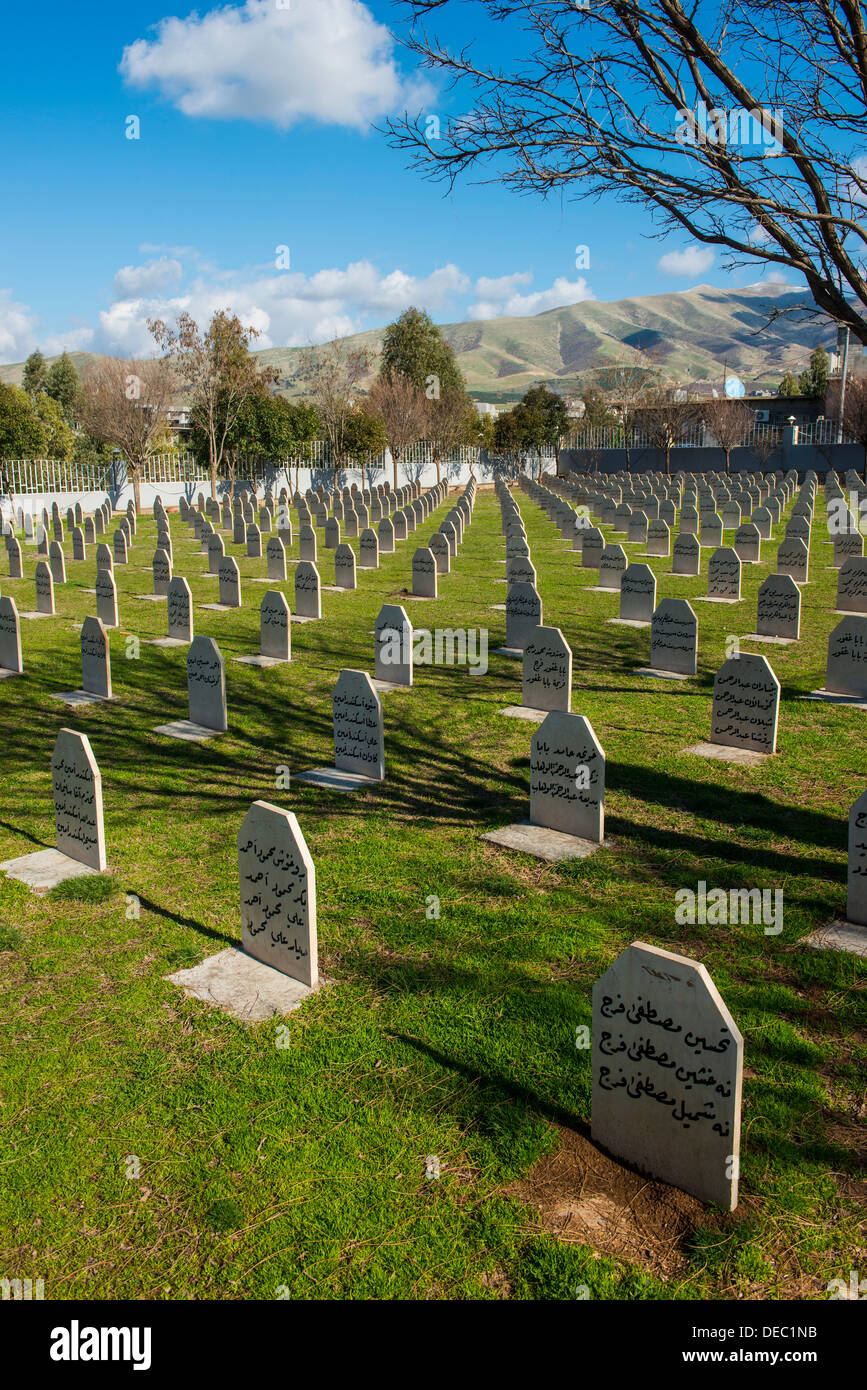 Graves on Halabja cemetery, Halabja, Iraqi Kurdistan, Iraq Stock Photohttps://www.alamy.com/image-license-details/?v=1https://www.alamy.com/graves-on-halabja-cemetery-halabja-iraqi-kurdistan-iraq-image60501095.html
Graves on Halabja cemetery, Halabja, Iraqi Kurdistan, Iraq Stock Photohttps://www.alamy.com/image-license-details/?v=1https://www.alamy.com/graves-on-halabja-cemetery-halabja-iraqi-kurdistan-iraq-image60501095.htmlRMDEC1NB–Graves on Halabja cemetery, Halabja, Iraqi Kurdistan, Iraq
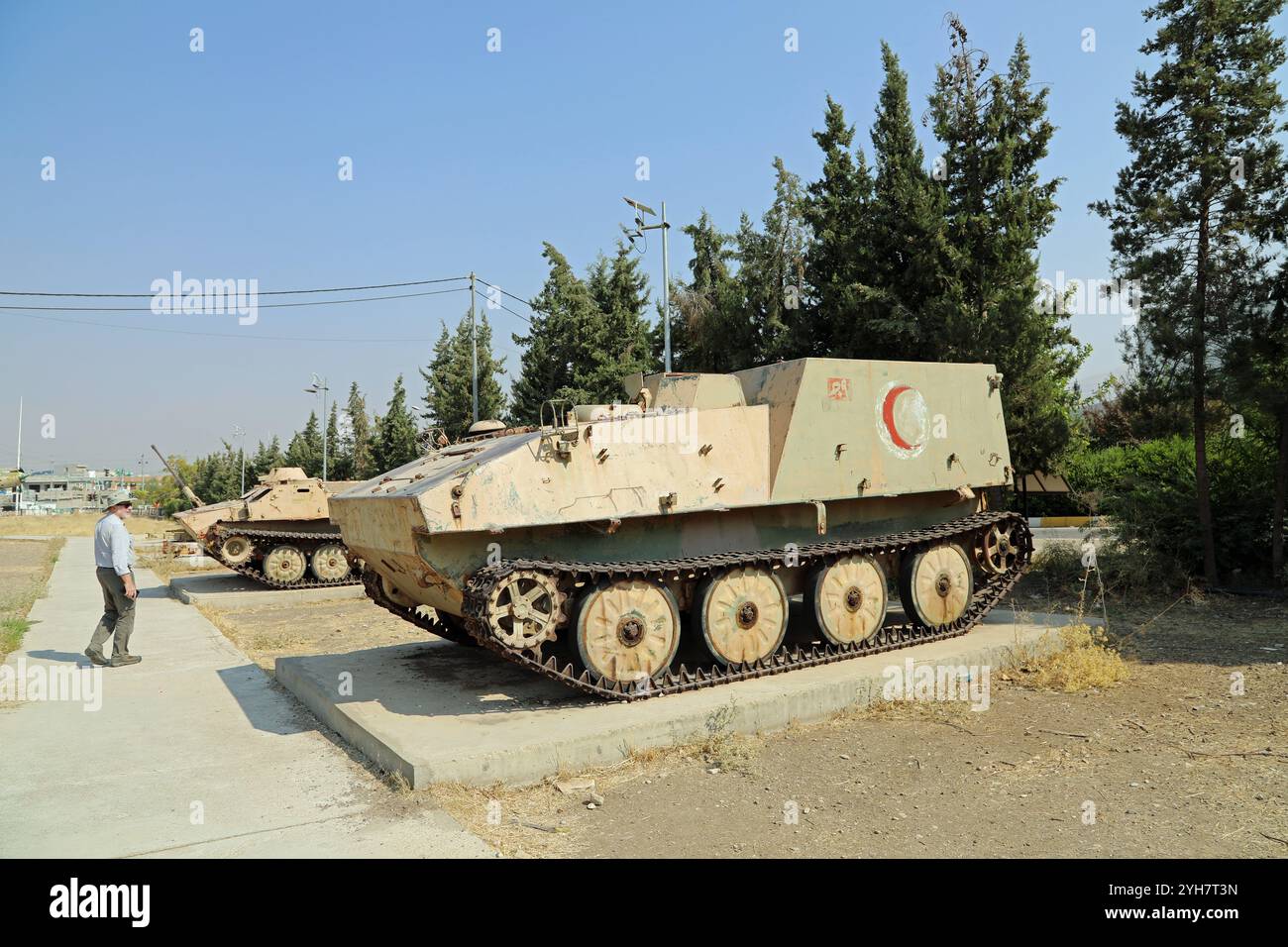 Tourist at the museum in Halabja Stock Photohttps://www.alamy.com/image-license-details/?v=1https://www.alamy.com/tourist-at-the-museum-in-halabja-image630194985.html
Tourist at the museum in Halabja Stock Photohttps://www.alamy.com/image-license-details/?v=1https://www.alamy.com/tourist-at-the-museum-in-halabja-image630194985.htmlRM2YH7T3N–Tourist at the museum in Halabja
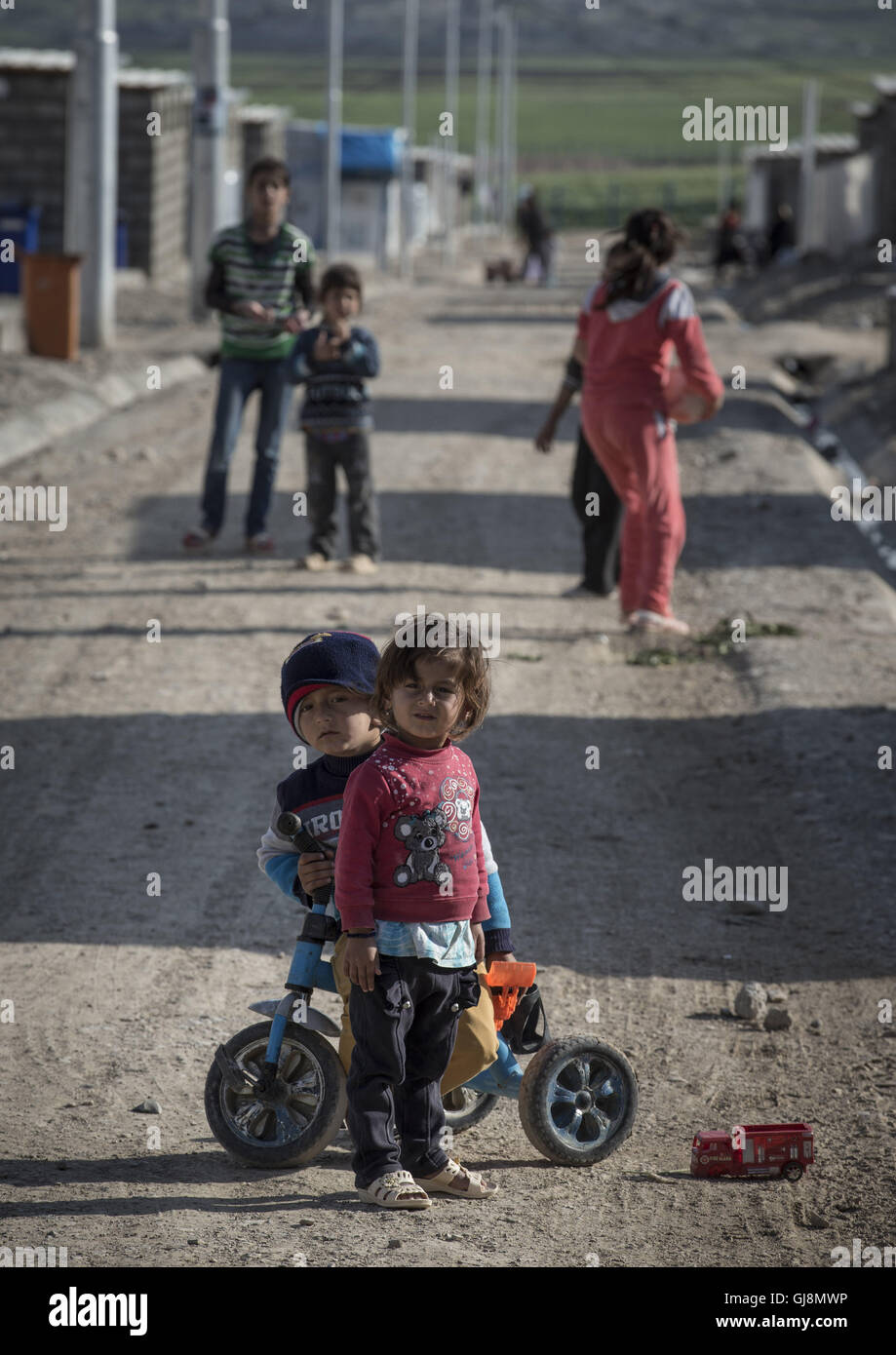 Kurdistan Regional Goverment are, Iraq. 31st Mar, 2016. Refugee camp near to Halabja, Kurdistan. © Bertalan Feher/ZUMA Wire/Alamy Live News Stock Photohttps://www.alamy.com/image-license-details/?v=1https://www.alamy.com/stock-photo-kurdistan-regional-goverment-are-iraq-31st-mar-2016-refugee-camp-near-114518034.html
Kurdistan Regional Goverment are, Iraq. 31st Mar, 2016. Refugee camp near to Halabja, Kurdistan. © Bertalan Feher/ZUMA Wire/Alamy Live News Stock Photohttps://www.alamy.com/image-license-details/?v=1https://www.alamy.com/stock-photo-kurdistan-regional-goverment-are-iraq-31st-mar-2016-refugee-camp-near-114518034.htmlRMGJ8MWP–Kurdistan Regional Goverment are, Iraq. 31st Mar, 2016. Refugee camp near to Halabja, Kurdistan. © Bertalan Feher/ZUMA Wire/Alamy Live News
 Halabja, Iraq. 16th Mar, 2021. A man visits the grave of his lost ones at Halabja Cemetery on the 33rd anniversary of Halabja chemical attack, which killed nearly 5000 people and injured about 10000, most of them were civilians. Credit: Ismael Adnan/dpa/Alamy Live News Stock Photohttps://www.alamy.com/image-license-details/?v=1https://www.alamy.com/halabja-iraq-16th-mar-2021-a-man-visits-the-grave-of-his-lost-ones-at-halabja-cemetery-on-the-33rd-anniversary-of-halabja-chemical-attack-which-killed-nearly-5000-people-and-injured-about-10000-most-of-them-were-civilians-credit-ismael-adnandpaalamy-live-news-image415175473.html
Halabja, Iraq. 16th Mar, 2021. A man visits the grave of his lost ones at Halabja Cemetery on the 33rd anniversary of Halabja chemical attack, which killed nearly 5000 people and injured about 10000, most of them were civilians. Credit: Ismael Adnan/dpa/Alamy Live News Stock Photohttps://www.alamy.com/image-license-details/?v=1https://www.alamy.com/halabja-iraq-16th-mar-2021-a-man-visits-the-grave-of-his-lost-ones-at-halabja-cemetery-on-the-33rd-anniversary-of-halabja-chemical-attack-which-killed-nearly-5000-people-and-injured-about-10000-most-of-them-were-civilians-credit-ismael-adnandpaalamy-live-news-image415175473.htmlRM2F3CTFD–Halabja, Iraq. 16th Mar, 2021. A man visits the grave of his lost ones at Halabja Cemetery on the 33rd anniversary of Halabja chemical attack, which killed nearly 5000 people and injured about 10000, most of them were civilians. Credit: Ismael Adnan/dpa/Alamy Live News
 Gabriel Gauffre / Le Pictorium - Bashur - 28/3/2021 - Iraq / Iraqi Kurdistan / Erbil - Load of food ready for distribution to refugees in Khanke camp, Duhok region. From the ashes of the 2003 American invasion of Iraq and the toppling of Saddam Hussein's regime, Iraq's Kurds managed to wrestle a form of relative independence. Still technically part of Iraq, Iraqi Kurdistan, in the north of the country, enjoys a heightened level of independence. To the Kurds, it is Bas?r (Bahsur), the southern province of the 4 composing what could one day be their own country, Kurdistan. Bashur is a t Stock Photohttps://www.alamy.com/image-license-details/?v=1https://www.alamy.com/gabriel-gauffre-le-pictorium-bashur-2832021-iraq-iraqi-kurdistan-erbil-load-of-food-ready-for-distribution-to-refugees-in-khanke-camp-duhok-region-from-the-ashes-of-the-2003-american-invasion-of-iraq-and-the-toppling-of-saddam-husseins-regime-iraqs-kurds-managed-to-wrestle-a-form-of-relative-independence-still-technically-part-of-iraq-iraqi-kurdistan-in-the-north-of-the-country-enjoys-a-heightened-level-of-independence-to-the-kurds-it-is-basr-bahsur-the-southern-province-of-the-4-composing-what-could-one-day-be-their-own-country-kurdistan-bashur-is-a-t-image556278843.html
Gabriel Gauffre / Le Pictorium - Bashur - 28/3/2021 - Iraq / Iraqi Kurdistan / Erbil - Load of food ready for distribution to refugees in Khanke camp, Duhok region. From the ashes of the 2003 American invasion of Iraq and the toppling of Saddam Hussein's regime, Iraq's Kurds managed to wrestle a form of relative independence. Still technically part of Iraq, Iraqi Kurdistan, in the north of the country, enjoys a heightened level of independence. To the Kurds, it is Bas?r (Bahsur), the southern province of the 4 composing what could one day be their own country, Kurdistan. Bashur is a t Stock Photohttps://www.alamy.com/image-license-details/?v=1https://www.alamy.com/gabriel-gauffre-le-pictorium-bashur-2832021-iraq-iraqi-kurdistan-erbil-load-of-food-ready-for-distribution-to-refugees-in-khanke-camp-duhok-region-from-the-ashes-of-the-2003-american-invasion-of-iraq-and-the-toppling-of-saddam-husseins-regime-iraqs-kurds-managed-to-wrestle-a-form-of-relative-independence-still-technically-part-of-iraq-iraqi-kurdistan-in-the-north-of-the-country-enjoys-a-heightened-level-of-independence-to-the-kurds-it-is-basr-bahsur-the-southern-province-of-the-4-composing-what-could-one-day-be-their-own-country-kurdistan-bashur-is-a-t-image556278843.htmlRM2R90K9F–Gabriel Gauffre / Le Pictorium - Bashur - 28/3/2021 - Iraq / Iraqi Kurdistan / Erbil - Load of food ready for distribution to refugees in Khanke camp, Duhok region. From the ashes of the 2003 American invasion of Iraq and the toppling of Saddam Hussein's regime, Iraq's Kurds managed to wrestle a form of relative independence. Still technically part of Iraq, Iraqi Kurdistan, in the north of the country, enjoys a heightened level of independence. To the Kurds, it is Bas?r (Bahsur), the southern province of the 4 composing what could one day be their own country, Kurdistan. Bashur is a t
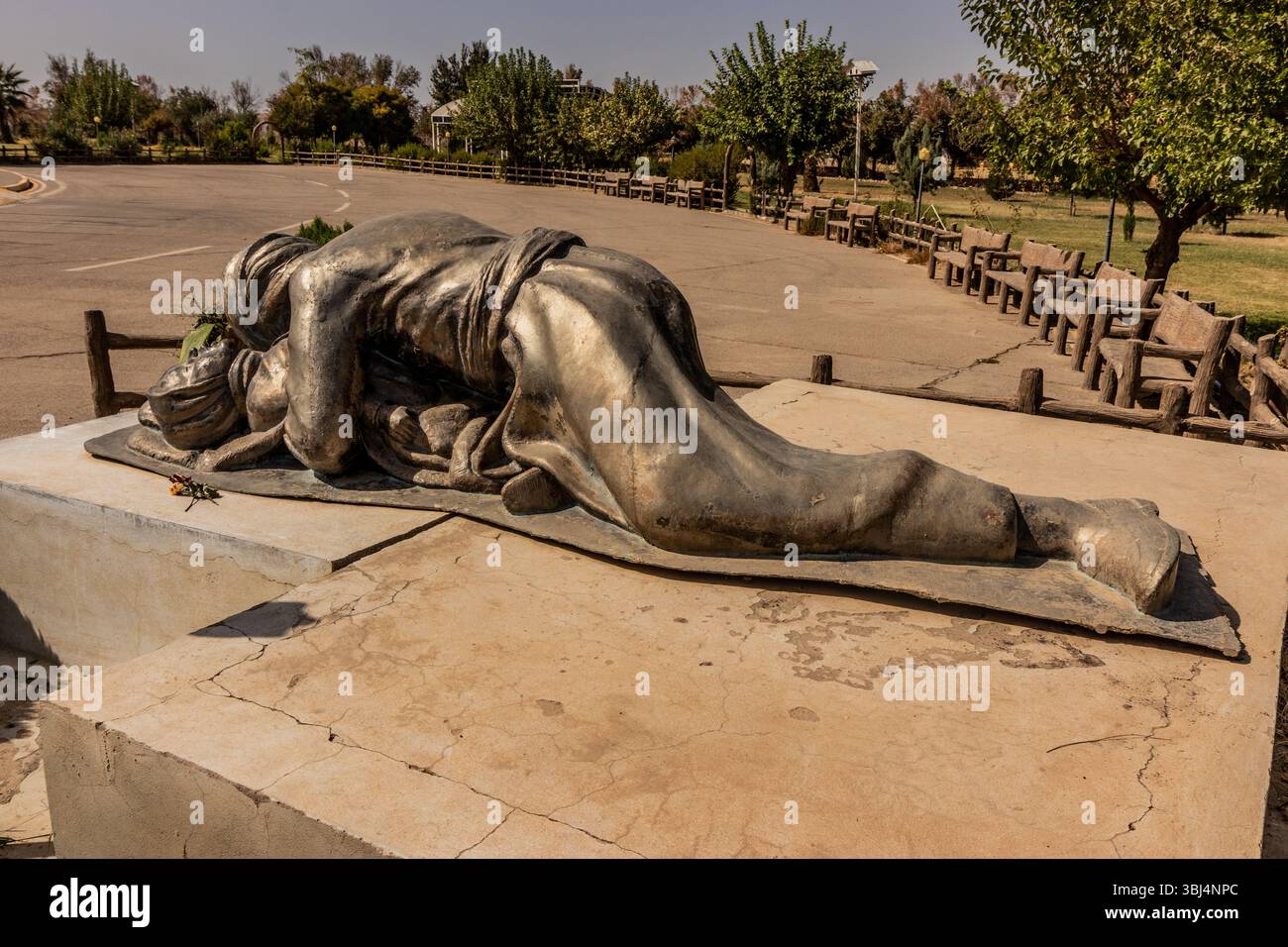 HALABJA, IRAQ - OCTOBER 6, 2022: Halabja Monument And Peace Museum grounds. Statue of a father protecting his child during the chemical attack in Hala Stock Photohttps://www.alamy.com/image-license-details/?v=1https://www.alamy.com/halabja-iraq-october-6-2022-halabja-monument-and-peace-museum-grounds-statue-of-a-father-protecting-his-child-during-the-chemical-attack-in-hala-image682373060.html
HALABJA, IRAQ - OCTOBER 6, 2022: Halabja Monument And Peace Museum grounds. Statue of a father protecting his child during the chemical attack in Hala Stock Photohttps://www.alamy.com/image-license-details/?v=1https://www.alamy.com/halabja-iraq-october-6-2022-halabja-monument-and-peace-museum-grounds-statue-of-a-father-protecting-his-child-during-the-chemical-attack-in-hala-image682373060.htmlRF3BJ4NPC–HALABJA, IRAQ - OCTOBER 6, 2022: Halabja Monument And Peace Museum grounds. Statue of a father protecting his child during the chemical attack in Hala
 Halabja, Suleimania, IRAQ -- The symbolic cemetery erected for the victims of Halabja massacre on 21 October, 2011. Halabja, a Kurdish town in Northern Iraq was bombed with chemical agents by the Saddam regime in efforts to decimate the Kurdish population in the North on March 16, 1988. Photo by Bikem Ekberzade Stock Photohttps://www.alamy.com/image-license-details/?v=1https://www.alamy.com/halabja-suleimania-iraq-the-symbolic-cemetery-erected-for-the-victims-image67625527.html
Halabja, Suleimania, IRAQ -- The symbolic cemetery erected for the victims of Halabja massacre on 21 October, 2011. Halabja, a Kurdish town in Northern Iraq was bombed with chemical agents by the Saddam regime in efforts to decimate the Kurdish population in the North on March 16, 1988. Photo by Bikem Ekberzade Stock Photohttps://www.alamy.com/image-license-details/?v=1https://www.alamy.com/halabja-suleimania-iraq-the-symbolic-cemetery-erected-for-the-victims-image67625527.htmlRMDX0H1B–Halabja, Suleimania, IRAQ -- The symbolic cemetery erected for the victims of Halabja massacre on 21 October, 2011. Halabja, a Kurdish town in Northern Iraq was bombed with chemical agents by the Saddam regime in efforts to decimate the Kurdish population in the North on March 16, 1988. Photo by Bikem Ekberzade
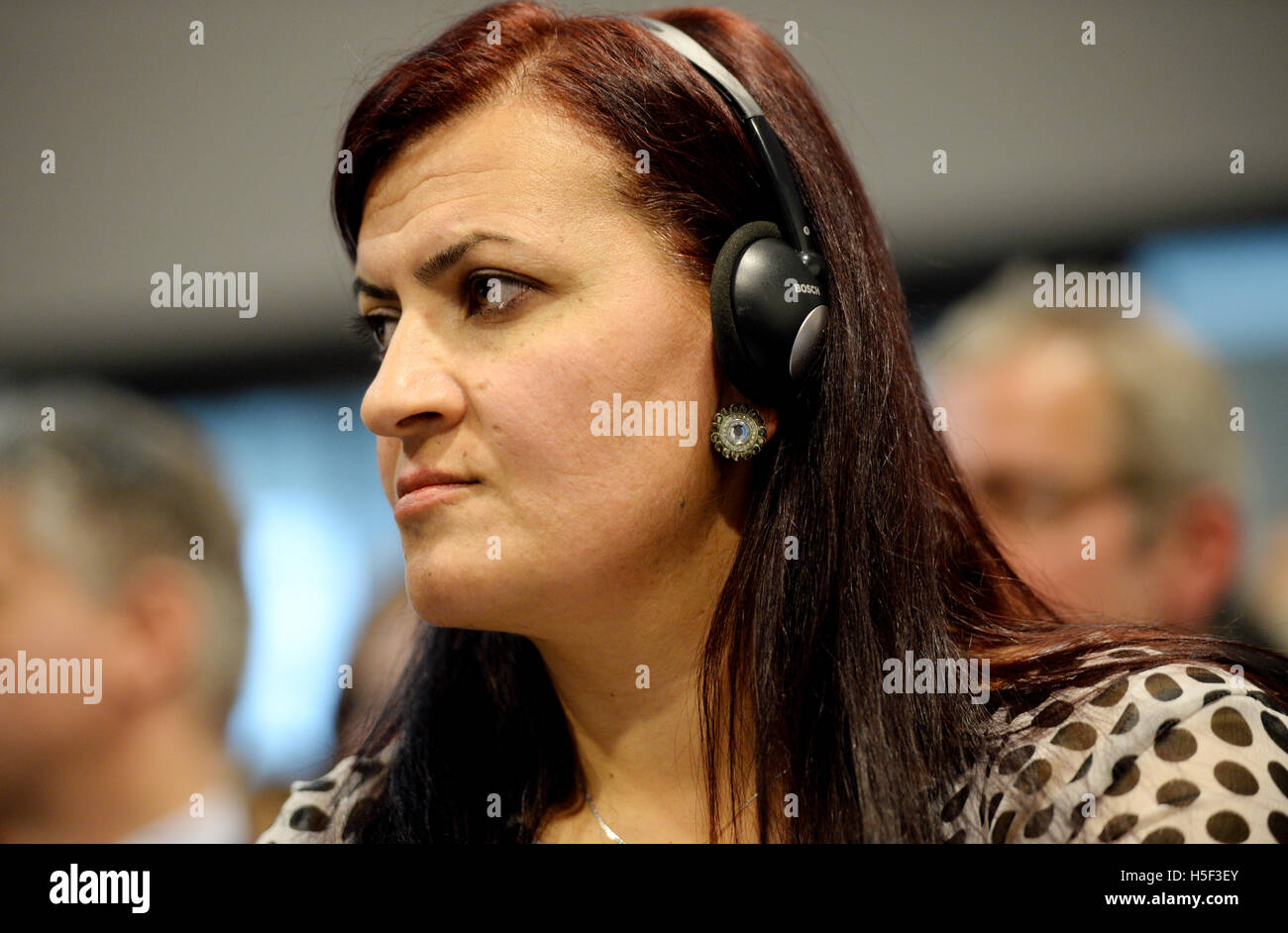 Rangeen Mahmood, journalists of the Dange NWE refugee radio program, watches the 2016 Raif Badawi Awards ceremony at the book fair in Frankfurt am Main, Germany, 19 October 2016. The refugee radio program by broadcaster Dange NWE (New Voice) from Halabja, Iraq, was presented with an award for outstanding achievements with regard to freedom of speech. Photo: Susann Prautsch/dpa Stock Photohttps://www.alamy.com/image-license-details/?v=1https://www.alamy.com/stock-photo-rangeen-mahmood-journalists-of-the-dange-nwe-refugee-radio-program-123877907.html
Rangeen Mahmood, journalists of the Dange NWE refugee radio program, watches the 2016 Raif Badawi Awards ceremony at the book fair in Frankfurt am Main, Germany, 19 October 2016. The refugee radio program by broadcaster Dange NWE (New Voice) from Halabja, Iraq, was presented with an award for outstanding achievements with regard to freedom of speech. Photo: Susann Prautsch/dpa Stock Photohttps://www.alamy.com/image-license-details/?v=1https://www.alamy.com/stock-photo-rangeen-mahmood-journalists-of-the-dange-nwe-refugee-radio-program-123877907.htmlRMH5F3EY–Rangeen Mahmood, journalists of the Dange NWE refugee radio program, watches the 2016 Raif Badawi Awards ceremony at the book fair in Frankfurt am Main, Germany, 19 October 2016. The refugee radio program by broadcaster Dange NWE (New Voice) from Halabja, Iraq, was presented with an award for outstanding achievements with regard to freedom of speech. Photo: Susann Prautsch/dpa
 Children with a poster. Hundreds of people demonstrated in Munich, Germany, on 16 March 2018 to remember the chemical attack of Halabja by Sadam Hussein and to protest against Turkey's war on Afrin. The protest stayed very peaceful. (Photo by Alexander Pohl/NurPhoto) Stock Photohttps://www.alamy.com/image-license-details/?v=1https://www.alamy.com/children-with-a-poster-hundreds-of-people-demonstrated-in-munich-germany-on-16-march-2018-to-remember-the-chemical-attack-of-halabja-by-sadam-hussein-and-to-protest-against-turkeys-war-on-afrin-the-protest-stayed-very-peaceful-photo-by-alexander-pohlnurphoto-image488613013.html
Children with a poster. Hundreds of people demonstrated in Munich, Germany, on 16 March 2018 to remember the chemical attack of Halabja by Sadam Hussein and to protest against Turkey's war on Afrin. The protest stayed very peaceful. (Photo by Alexander Pohl/NurPhoto) Stock Photohttps://www.alamy.com/image-license-details/?v=1https://www.alamy.com/children-with-a-poster-hundreds-of-people-demonstrated-in-munich-germany-on-16-march-2018-to-remember-the-chemical-attack-of-halabja-by-sadam-hussein-and-to-protest-against-turkeys-war-on-afrin-the-protest-stayed-very-peaceful-photo-by-alexander-pohlnurphoto-image488613013.htmlRM2KAX6TN–Children with a poster. Hundreds of people demonstrated in Munich, Germany, on 16 March 2018 to remember the chemical attack of Halabja by Sadam Hussein and to protest against Turkey's war on Afrin. The protest stayed very peaceful. (Photo by Alexander Pohl/NurPhoto)
 A view of the grave yard where the victims of the Halabja chemical attack were buried.The 33rd anniversary of the chemical attack carried out by the Iraqi government on March 16, 1988 on the city of Halabja in the Kurdistan Region, which killed nearly 5000 people and injured 10000 most of them civilians. Thousands of the city's residents died in the year following the attack due to health complications and due to diseases and birth defects. Stock Photohttps://www.alamy.com/image-license-details/?v=1https://www.alamy.com/a-view-of-the-grave-yard-where-the-victims-of-the-halabja-chemical-attack-were-buriedthe-33rd-anniversary-of-the-chemical-attack-carried-out-by-the-iraqi-government-on-march-16-1988-on-the-city-of-halabja-in-the-kurdistan-region-which-killed-nearly-5000-people-and-injured-10000-most-of-them-civilians-thousands-of-the-citys-residents-died-in-the-year-following-the-attack-due-to-health-complications-and-due-to-diseases-and-birth-defects-image415223359.html
A view of the grave yard where the victims of the Halabja chemical attack were buried.The 33rd anniversary of the chemical attack carried out by the Iraqi government on March 16, 1988 on the city of Halabja in the Kurdistan Region, which killed nearly 5000 people and injured 10000 most of them civilians. Thousands of the city's residents died in the year following the attack due to health complications and due to diseases and birth defects. Stock Photohttps://www.alamy.com/image-license-details/?v=1https://www.alamy.com/a-view-of-the-grave-yard-where-the-victims-of-the-halabja-chemical-attack-were-buriedthe-33rd-anniversary-of-the-chemical-attack-carried-out-by-the-iraqi-government-on-march-16-1988-on-the-city-of-halabja-in-the-kurdistan-region-which-killed-nearly-5000-people-and-injured-10000-most-of-them-civilians-thousands-of-the-citys-residents-died-in-the-year-following-the-attack-due-to-health-complications-and-due-to-diseases-and-birth-defects-image415223359.htmlRM2F3F1HK–A view of the grave yard where the victims of the Halabja chemical attack were buried.The 33rd anniversary of the chemical attack carried out by the Iraqi government on March 16, 1988 on the city of Halabja in the Kurdistan Region, which killed nearly 5000 people and injured 10000 most of them civilians. Thousands of the city's residents died in the year following the attack due to health complications and due to diseases and birth defects.
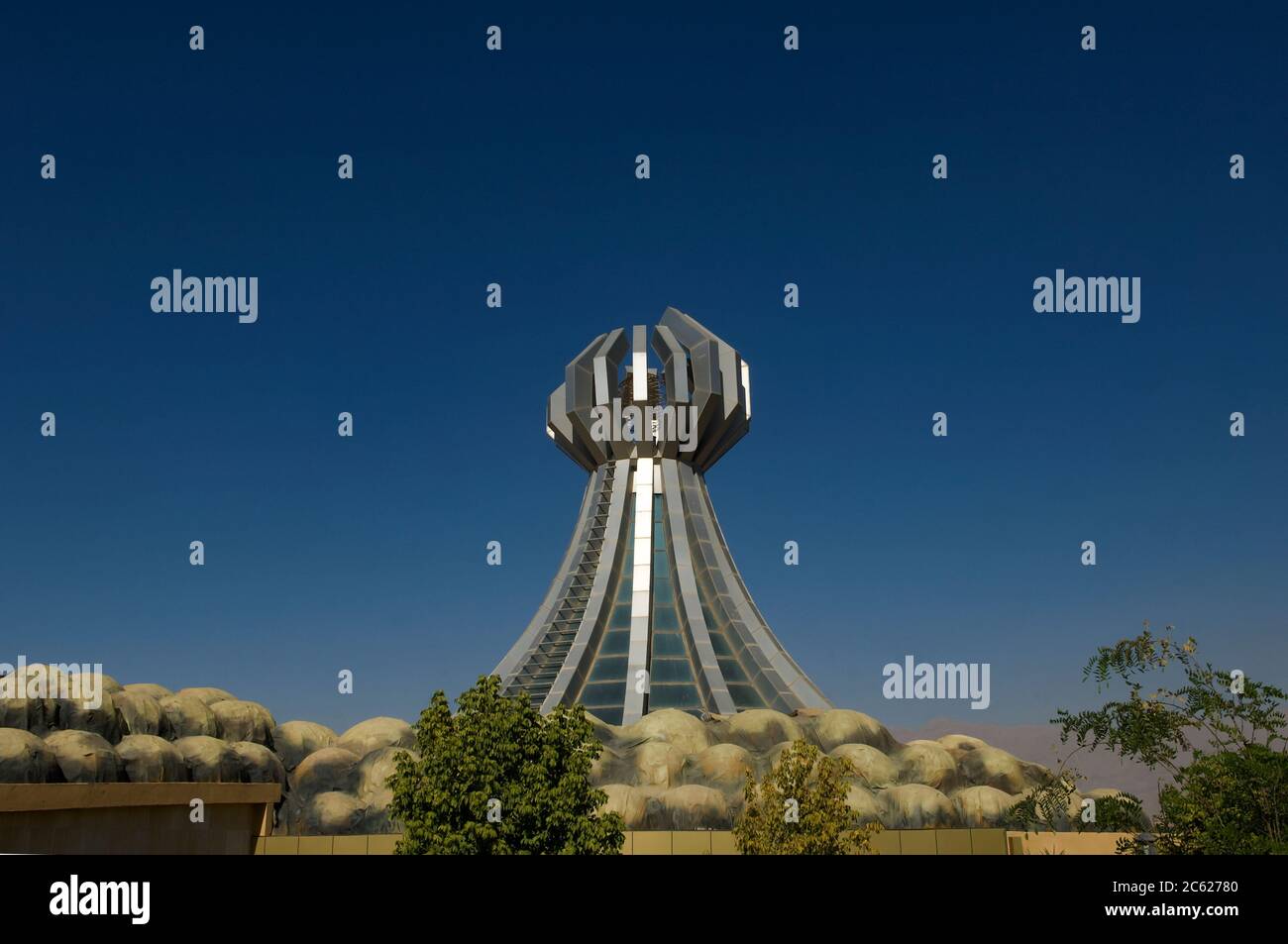 Halabja, North Iraq. October 5th 2009 Halabja Memorial to the 5000 people killed in the March 16th 1988 gas attack by the forces of Sadaam Hussein, i Stock Photohttps://www.alamy.com/image-license-details/?v=1https://www.alamy.com/halabja-north-iraq-october-5th-2009-halabja-memorial-to-the-5000-people-killed-in-the-march-16th-1988-gas-attack-by-the-forces-of-sadaam-hussein-i-image365155280.html
Halabja, North Iraq. October 5th 2009 Halabja Memorial to the 5000 people killed in the March 16th 1988 gas attack by the forces of Sadaam Hussein, i Stock Photohttps://www.alamy.com/image-license-details/?v=1https://www.alamy.com/halabja-north-iraq-october-5th-2009-halabja-memorial-to-the-5000-people-killed-in-the-march-16th-1988-gas-attack-by-the-forces-of-sadaam-hussein-i-image365155280.htmlRM2C62780–Halabja, North Iraq. October 5th 2009 Halabja Memorial to the 5000 people killed in the March 16th 1988 gas attack by the forces of Sadaam Hussein, i
 Halabja, Iraqi Kurdistan, then home to 5,000 Kurds attacked by Saddam Hussein with chemical weapons. Elderly Kurdish survivor Stock Photohttps://www.alamy.com/image-license-details/?v=1https://www.alamy.com/stock-photo-halabja-iraqi-kurdistan-then-home-to-5000-kurds-attacked-by-saddam-41685477.html
Halabja, Iraqi Kurdistan, then home to 5,000 Kurds attacked by Saddam Hussein with chemical weapons. Elderly Kurdish survivor Stock Photohttps://www.alamy.com/image-license-details/?v=1https://www.alamy.com/stock-photo-halabja-iraqi-kurdistan-then-home-to-5000-kurds-attacked-by-saddam-41685477.htmlRMCBPX71–Halabja, Iraqi Kurdistan, then home to 5,000 Kurds attacked by Saddam Hussein with chemical weapons. Elderly Kurdish survivor
 Halabja, Iraq. 16th Mar, 2021. People visiting the Halabja Monument inspect a military vehicle that was used in the chemical attack carried out by the Iraqi government on 16 March 1988 during the closing days of the Iran·Iraq War in the Kurdish city of Halabja, which killed nearly 5000 people and injured about 10000, most of them were civilians. Credit: Ismael Adnan/dpa/Alamy Live News Stock Photohttps://www.alamy.com/image-license-details/?v=1https://www.alamy.com/halabja-iraq-16th-mar-2021-people-visiting-the-halabja-monument-inspect-a-military-vehicle-that-was-used-in-the-chemical-attack-carried-out-by-the-iraqi-government-on-16-march-1988-during-the-closing-days-of-the-iraniraq-war-in-the-kurdish-city-of-halabja-which-killed-nearly-5000-people-and-injured-about-10000-most-of-them-were-civilians-credit-ismael-adnandpaalamy-live-news-image415162996.html
Halabja, Iraq. 16th Mar, 2021. People visiting the Halabja Monument inspect a military vehicle that was used in the chemical attack carried out by the Iraqi government on 16 March 1988 during the closing days of the Iran·Iraq War in the Kurdish city of Halabja, which killed nearly 5000 people and injured about 10000, most of them were civilians. Credit: Ismael Adnan/dpa/Alamy Live News Stock Photohttps://www.alamy.com/image-license-details/?v=1https://www.alamy.com/halabja-iraq-16th-mar-2021-people-visiting-the-halabja-monument-inspect-a-military-vehicle-that-was-used-in-the-chemical-attack-carried-out-by-the-iraqi-government-on-16-march-1988-during-the-closing-days-of-the-iraniraq-war-in-the-kurdish-city-of-halabja-which-killed-nearly-5000-people-and-injured-about-10000-most-of-them-were-civilians-credit-ismael-adnandpaalamy-live-news-image415162996.htmlRM2F3C8HT–Halabja, Iraq. 16th Mar, 2021. People visiting the Halabja Monument inspect a military vehicle that was used in the chemical attack carried out by the Iraqi government on 16 March 1988 during the closing days of the Iran·Iraq War in the Kurdish city of Halabja, which killed nearly 5000 people and injured about 10000, most of them were civilians. Credit: Ismael Adnan/dpa/Alamy Live News
 Vector isolated illustration of simplified administrative map of Iraq. Borders and names of the governorates (regions). Black line silhouettes. Stock Vectorhttps://www.alamy.com/image-license-details/?v=1https://www.alamy.com/vector-isolated-illustration-of-simplified-administrative-map-of-iraq-borders-and-names-of-the-governorates-regions-black-line-silhouettes-image566450373.html
Vector isolated illustration of simplified administrative map of Iraq. Borders and names of the governorates (regions). Black line silhouettes. Stock Vectorhttps://www.alamy.com/image-license-details/?v=1https://www.alamy.com/vector-isolated-illustration-of-simplified-administrative-map-of-iraq-borders-and-names-of-the-governorates-regions-black-line-silhouettes-image566450373.htmlRF2RWG16D–Vector isolated illustration of simplified administrative map of Iraq. Borders and names of the governorates (regions). Black line silhouettes.
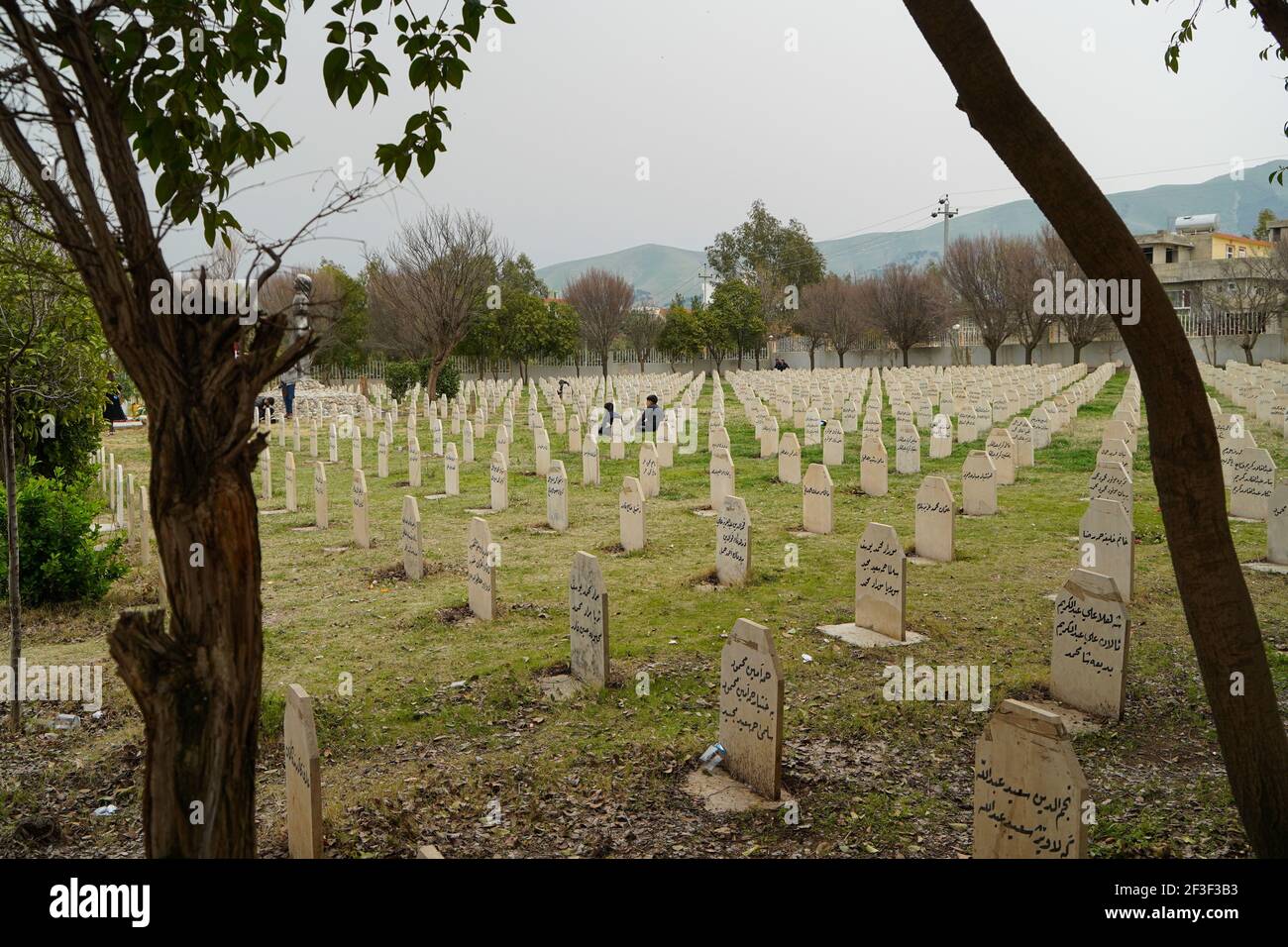 Halabja, Iraq. 16th Mar, 2021. A view of the grave yard where the victims of the Halabja chemical attack were buried.The 33rd anniversary of the chemical attack carried out by the Iraqi government on March 16, 1988 on the city of Halabja in the Kurdistan Region, which killed nearly 5000 people and injured 10000 most of them civilians. Thousands of the city's residents died in the year following the attack due to health complications and due to diseases and birth defects. (Photo by Ismael Adnan/SOPA Images/Sipa USA) Credit: Sipa USA/Alamy Live News Stock Photohttps://www.alamy.com/image-license-details/?v=1https://www.alamy.com/halabja-iraq-16th-mar-2021-a-view-of-the-grave-yard-where-the-victims-of-the-halabja-chemical-attack-were-buriedthe-33rd-anniversary-of-the-chemical-attack-carried-out-by-the-iraqi-government-on-march-16-1988-on-the-city-of-halabja-in-the-kurdistan-region-which-killed-nearly-5000-people-and-injured-10000-most-of-them-civilians-thousands-of-the-citys-residents-died-in-the-year-following-the-attack-due-to-health-complications-and-due-to-diseases-and-birth-defects-photo-by-ismael-adnansopa-imagessipa-usa-credit-sipa-usaalamy-live-news-image415224743.html
Halabja, Iraq. 16th Mar, 2021. A view of the grave yard where the victims of the Halabja chemical attack were buried.The 33rd anniversary of the chemical attack carried out by the Iraqi government on March 16, 1988 on the city of Halabja in the Kurdistan Region, which killed nearly 5000 people and injured 10000 most of them civilians. Thousands of the city's residents died in the year following the attack due to health complications and due to diseases and birth defects. (Photo by Ismael Adnan/SOPA Images/Sipa USA) Credit: Sipa USA/Alamy Live News Stock Photohttps://www.alamy.com/image-license-details/?v=1https://www.alamy.com/halabja-iraq-16th-mar-2021-a-view-of-the-grave-yard-where-the-victims-of-the-halabja-chemical-attack-were-buriedthe-33rd-anniversary-of-the-chemical-attack-carried-out-by-the-iraqi-government-on-march-16-1988-on-the-city-of-halabja-in-the-kurdistan-region-which-killed-nearly-5000-people-and-injured-10000-most-of-them-civilians-thousands-of-the-citys-residents-died-in-the-year-following-the-attack-due-to-health-complications-and-due-to-diseases-and-birth-defects-photo-by-ismael-adnansopa-imagessipa-usa-credit-sipa-usaalamy-live-news-image415224743.htmlRM2F3F3B3–Halabja, Iraq. 16th Mar, 2021. A view of the grave yard where the victims of the Halabja chemical attack were buried.The 33rd anniversary of the chemical attack carried out by the Iraqi government on March 16, 1988 on the city of Halabja in the Kurdistan Region, which killed nearly 5000 people and injured 10000 most of them civilians. Thousands of the city's residents died in the year following the attack due to health complications and due to diseases and birth defects. (Photo by Ismael Adnan/SOPA Images/Sipa USA) Credit: Sipa USA/Alamy Live News
![Three years after the Iraqi poison gas attack against the Kurdish town of Halabja, this woman is still suffering the effects of poison gas injuries despite several months of treatment in a British hospital. [automated translation] Stock Photo Three years after the Iraqi poison gas attack against the Kurdish town of Halabja, this woman is still suffering the effects of poison gas injuries despite several months of treatment in a British hospital. [automated translation] Stock Photo](https://c8.alamy.com/comp/2FNENBA/three-years-after-the-iraqi-poison-gas-attack-against-the-kurdish-town-of-halabja-this-woman-is-still-suffering-the-effects-of-poison-gas-injuries-despite-several-months-of-treatment-in-a-british-hospital-automated-translation-2FNENBA.jpg) Three years after the Iraqi poison gas attack against the Kurdish town of Halabja, this woman is still suffering the effects of poison gas injuries despite several months of treatment in a British hospital. [automated translation] Stock Photohttps://www.alamy.com/image-license-details/?v=1https://www.alamy.com/three-years-after-the-iraqi-poison-gas-attack-against-the-kurdish-town-of-halabja-this-woman-is-still-suffering-the-effects-of-poison-gas-injuries-despite-several-months-of-treatment-in-a-british-hospital-automated-translation-image426280718.html
Three years after the Iraqi poison gas attack against the Kurdish town of Halabja, this woman is still suffering the effects of poison gas injuries despite several months of treatment in a British hospital. [automated translation] Stock Photohttps://www.alamy.com/image-license-details/?v=1https://www.alamy.com/three-years-after-the-iraqi-poison-gas-attack-against-the-kurdish-town-of-halabja-this-woman-is-still-suffering-the-effects-of-poison-gas-injuries-despite-several-months-of-treatment-in-a-british-hospital-automated-translation-image426280718.htmlRM2FNENBA–Three years after the Iraqi poison gas attack against the Kurdish town of Halabja, this woman is still suffering the effects of poison gas injuries despite several months of treatment in a British hospital. [automated translation]
 Arbil, Iraq. 07th Aug, 2015. PDKI movement is in the Iran's border that was 1 kilometers away from the Iran troops and were the Peshmerga stays. As the Iran's official declaration on the TV, they talk about how it affects the Iran army in Head office in Qandil Mount with 5000 troops and 100 tanks logistic from Piranshahr border who were spying whenever someone will pass the border will get killed. Credit: Jawdat Ahmad/Pacific Press/Alamy Live News Stock Photohttps://www.alamy.com/image-license-details/?v=1https://www.alamy.com/stock-photo-arbil-iraq-07th-aug-2015-pdki-movement-is-in-the-irans-border-that-86169153.html
Arbil, Iraq. 07th Aug, 2015. PDKI movement is in the Iran's border that was 1 kilometers away from the Iran troops and were the Peshmerga stays. As the Iran's official declaration on the TV, they talk about how it affects the Iran army in Head office in Qandil Mount with 5000 troops and 100 tanks logistic from Piranshahr border who were spying whenever someone will pass the border will get killed. Credit: Jawdat Ahmad/Pacific Press/Alamy Live News Stock Photohttps://www.alamy.com/image-license-details/?v=1https://www.alamy.com/stock-photo-arbil-iraq-07th-aug-2015-pdki-movement-is-in-the-irans-border-that-86169153.htmlRMF059HN–Arbil, Iraq. 07th Aug, 2015. PDKI movement is in the Iran's border that was 1 kilometers away from the Iran troops and were the Peshmerga stays. As the Iran's official declaration on the TV, they talk about how it affects the Iran army in Head office in Qandil Mount with 5000 troops and 100 tanks logistic from Piranshahr border who were spying whenever someone will pass the border will get killed. Credit: Jawdat Ahmad/Pacific Press/Alamy Live News
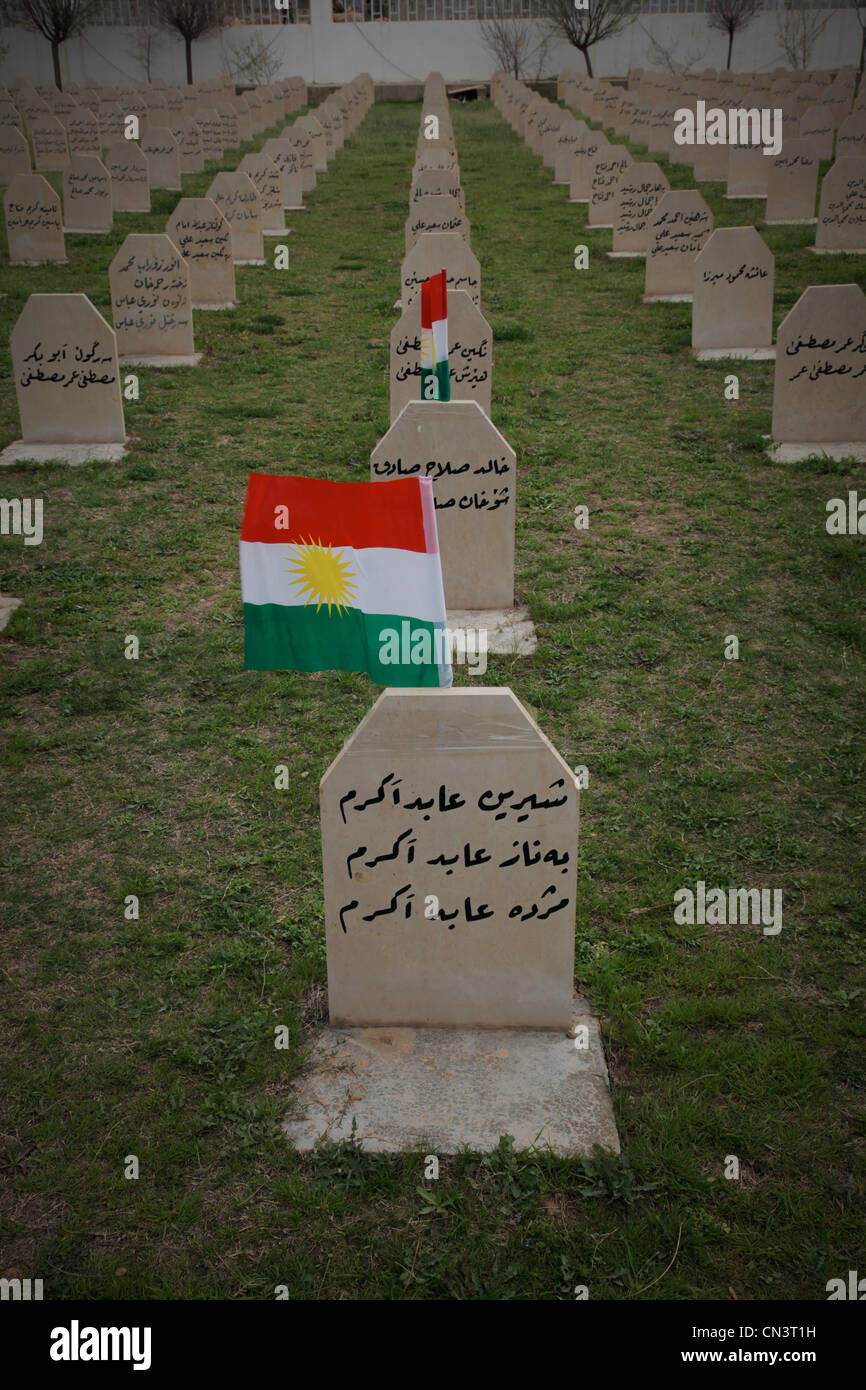 A memorial of Halabja in Iraqi Kurdistan. In marsh 16: th 1988 the city was attacked by Saddam Hussein's army. 5000 was killed by gas. Operation Anfal Stock Photohttps://www.alamy.com/image-license-details/?v=1https://www.alamy.com/stock-photo-a-memorial-of-halabja-in-iraqi-kurdistan-in-marsh-16-th-1988-the-city-47413229.html
A memorial of Halabja in Iraqi Kurdistan. In marsh 16: th 1988 the city was attacked by Saddam Hussein's army. 5000 was killed by gas. Operation Anfal Stock Photohttps://www.alamy.com/image-license-details/?v=1https://www.alamy.com/stock-photo-a-memorial-of-halabja-in-iraqi-kurdistan-in-marsh-16-th-1988-the-city-47413229.htmlRFCN3T1H–A memorial of Halabja in Iraqi Kurdistan. In marsh 16: th 1988 the city was attacked by Saddam Hussein's army. 5000 was killed by gas. Operation Anfal
 NO FILM, NO VIDEO, NO TV, NO DOCUMENTARY - © Tom Pennington/KRT/ABACA. 43800-6. Halabja-Irak, 22/03/03. Kurdish peshmergas guard the scene of a suicide car bombing outside of Halabja. The suicide bombing killed one peshmerga and an Australian Broadcasting Corporation cameraman and injured 12 other Stock Photohttps://www.alamy.com/image-license-details/?v=1https://www.alamy.com/no-film-no-video-no-tv-no-documentary-tom-penningtonkrtabaca-43800-6-halabja-irak-220303-kurdish-peshmergas-guard-the-scene-of-a-suicide-car-bombing-outside-of-halabja-the-suicide-bombing-killed-one-peshmerga-and-an-australian-broadcasting-corporation-cameraman-and-injured-12-other-image386857371.html
NO FILM, NO VIDEO, NO TV, NO DOCUMENTARY - © Tom Pennington/KRT/ABACA. 43800-6. Halabja-Irak, 22/03/03. Kurdish peshmergas guard the scene of a suicide car bombing outside of Halabja. The suicide bombing killed one peshmerga and an Australian Broadcasting Corporation cameraman and injured 12 other Stock Photohttps://www.alamy.com/image-license-details/?v=1https://www.alamy.com/no-film-no-video-no-tv-no-documentary-tom-penningtonkrtabaca-43800-6-halabja-irak-220303-kurdish-peshmergas-guard-the-scene-of-a-suicide-car-bombing-outside-of-halabja-the-suicide-bombing-killed-one-peshmerga-and-an-australian-broadcasting-corporation-cameraman-and-injured-12-other-image386857371.htmlRM2DDATEK–NO FILM, NO VIDEO, NO TV, NO DOCUMENTARY - © Tom Pennington/KRT/ABACA. 43800-6. Halabja-Irak, 22/03/03. Kurdish peshmergas guard the scene of a suicide car bombing outside of Halabja. The suicide bombing killed one peshmerga and an Australian Broadcasting Corporation cameraman and injured 12 other
 Graves on Halabja cemetery, Halabja, Iraqi Kurdistan, Iraq Stock Photohttps://www.alamy.com/image-license-details/?v=1https://www.alamy.com/graves-on-halabja-cemetery-halabja-iraqi-kurdistan-iraq-image60501113.html
Graves on Halabja cemetery, Halabja, Iraqi Kurdistan, Iraq Stock Photohttps://www.alamy.com/image-license-details/?v=1https://www.alamy.com/graves-on-halabja-cemetery-halabja-iraqi-kurdistan-iraq-image60501113.htmlRMDEC1P1–Graves on Halabja cemetery, Halabja, Iraqi Kurdistan, Iraq
 Halabja Memorial Monument in Iraqi Kurdistan Stock Photohttps://www.alamy.com/image-license-details/?v=1https://www.alamy.com/halabja-memorial-monument-in-iraqi-kurdistan-image628727761.html
Halabja Memorial Monument in Iraqi Kurdistan Stock Photohttps://www.alamy.com/image-license-details/?v=1https://www.alamy.com/halabja-memorial-monument-in-iraqi-kurdistan-image628727761.htmlRM2YEW0JW–Halabja Memorial Monument in Iraqi Kurdistan
 A monument over those who was killed in Halabja in March 1988 Stock Photohttps://www.alamy.com/image-license-details/?v=1https://www.alamy.com/stock-photo-a-monument-over-those-who-was-killed-in-halabja-in-march-1988-47411150.html
A monument over those who was killed in Halabja in March 1988 Stock Photohttps://www.alamy.com/image-license-details/?v=1https://www.alamy.com/stock-photo-a-monument-over-those-who-was-killed-in-halabja-in-march-1988-47411150.htmlRFCN3NBA–A monument over those who was killed in Halabja in March 1988
 Kurdistan Regional Goverment are, Iraq. 31st Mar, 2016. Refugee camp near to Halabja, Kurdistan. © Bertalan Feher/ZUMA Wire/Alamy Live News Stock Photohttps://www.alamy.com/image-license-details/?v=1https://www.alamy.com/stock-photo-kurdistan-regional-goverment-are-iraq-31st-mar-2016-refugee-camp-near-114518012.html
Kurdistan Regional Goverment are, Iraq. 31st Mar, 2016. Refugee camp near to Halabja, Kurdistan. © Bertalan Feher/ZUMA Wire/Alamy Live News Stock Photohttps://www.alamy.com/image-license-details/?v=1https://www.alamy.com/stock-photo-kurdistan-regional-goverment-are-iraq-31st-mar-2016-refugee-camp-near-114518012.htmlRMGJ8MW0–Kurdistan Regional Goverment are, Iraq. 31st Mar, 2016. Refugee camp near to Halabja, Kurdistan. © Bertalan Feher/ZUMA Wire/Alamy Live News
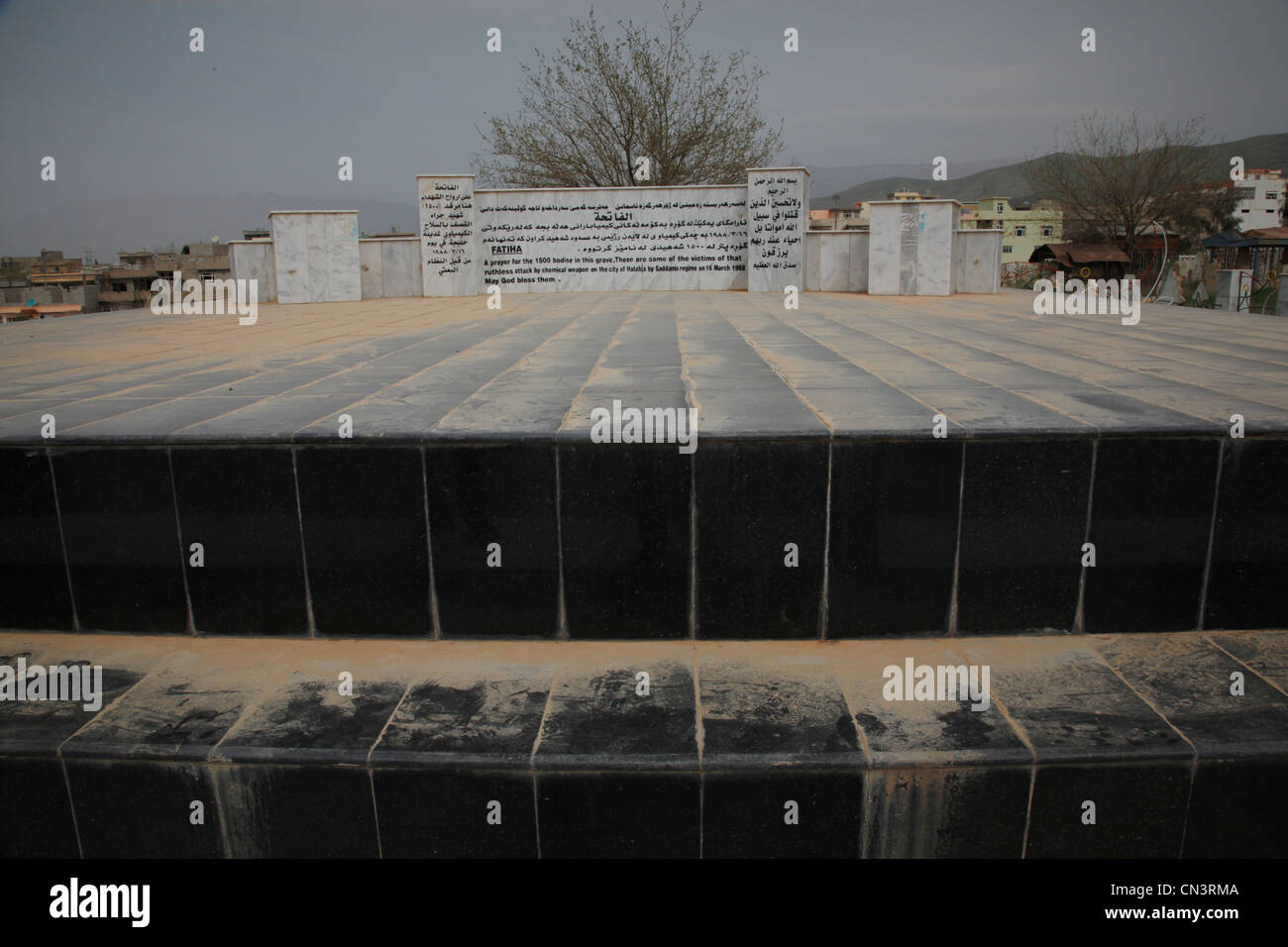 A memorial of Halabja in Iraqi Kurdistan. In marsh 16: th 1988 the city was attacked by Saddam Hussein's army. 5000 dyed. Stock Photohttps://www.alamy.com/image-license-details/?v=1https://www.alamy.com/stock-photo-a-memorial-of-halabja-in-iraqi-kurdistan-in-marsh-16-th-1988-the-city-47412970.html
A memorial of Halabja in Iraqi Kurdistan. In marsh 16: th 1988 the city was attacked by Saddam Hussein's army. 5000 dyed. Stock Photohttps://www.alamy.com/image-license-details/?v=1https://www.alamy.com/stock-photo-a-memorial-of-halabja-in-iraqi-kurdistan-in-marsh-16-th-1988-the-city-47412970.htmlRFCN3RMA–A memorial of Halabja in Iraqi Kurdistan. In marsh 16: th 1988 the city was attacked by Saddam Hussein's army. 5000 dyed.
 Halabja Monument And Peace Museum, memorial of the chemical attack in Halabja, Iraq Stock Photohttps://www.alamy.com/image-license-details/?v=1https://www.alamy.com/halabja-monument-and-peace-museum-memorial-of-the-chemical-attack-in-halabja-iraq-image682386012.html
Halabja Monument And Peace Museum, memorial of the chemical attack in Halabja, Iraq Stock Photohttps://www.alamy.com/image-license-details/?v=1https://www.alamy.com/halabja-monument-and-peace-museum-memorial-of-the-chemical-attack-in-halabja-iraq-image682386012.htmlRF3BJ5A90–Halabja Monument And Peace Museum, memorial of the chemical attack in Halabja, Iraq
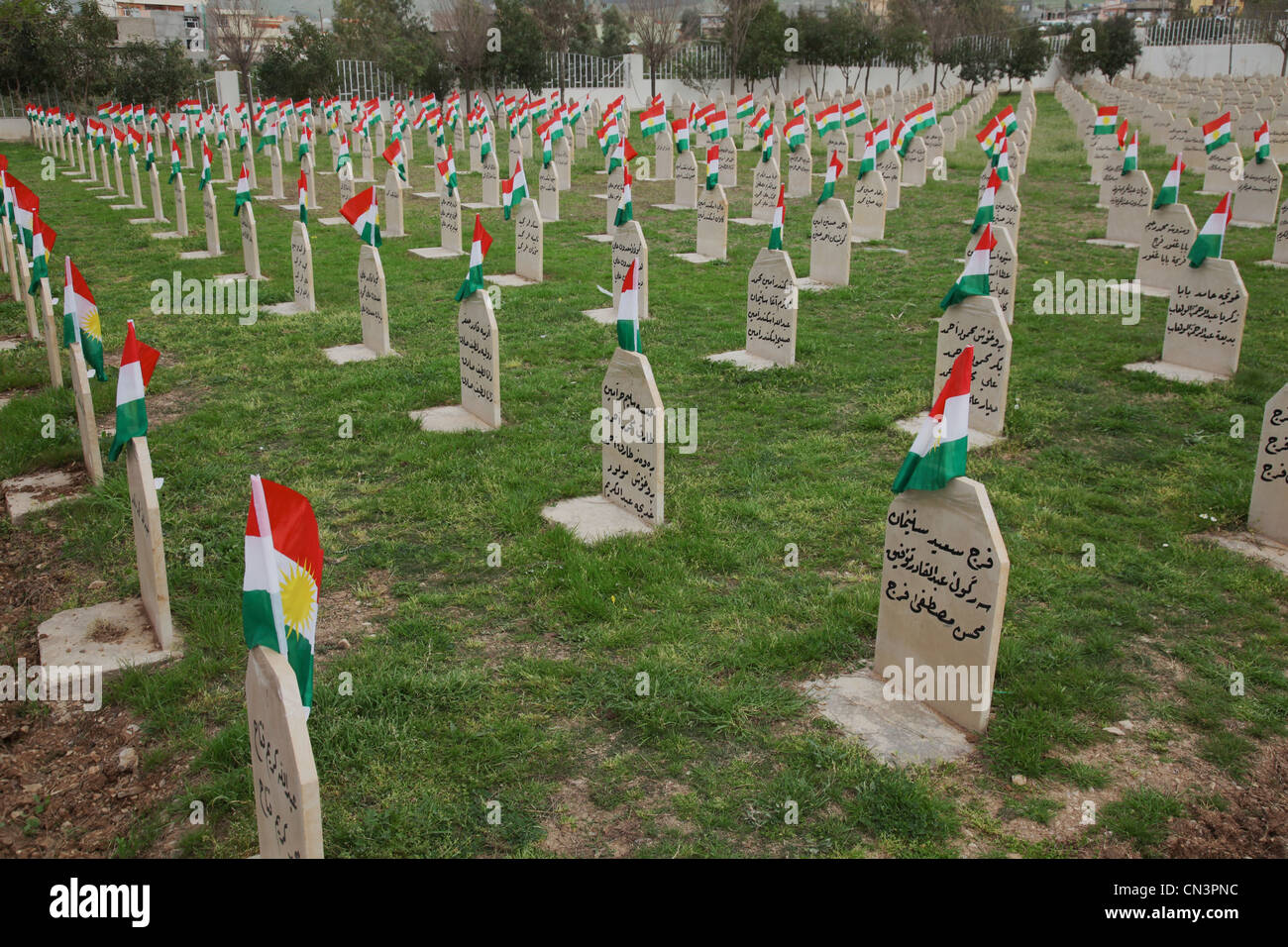 A memorial of Halabja in Iraqi Kurdistan. In marsh 16: th 1988 the city was attacked by Saddam Hussein's army. 5000 died. Stock Photohttps://www.alamy.com/image-license-details/?v=1https://www.alamy.com/stock-photo-a-memorial-of-halabja-in-iraqi-kurdistan-in-marsh-16-th-1988-the-city-47412216.html
A memorial of Halabja in Iraqi Kurdistan. In marsh 16: th 1988 the city was attacked by Saddam Hussein's army. 5000 died. Stock Photohttps://www.alamy.com/image-license-details/?v=1https://www.alamy.com/stock-photo-a-memorial-of-halabja-in-iraqi-kurdistan-in-marsh-16-th-1988-the-city-47412216.htmlRFCN3PNC–A memorial of Halabja in Iraqi Kurdistan. In marsh 16: th 1988 the city was attacked by Saddam Hussein's army. 5000 died.
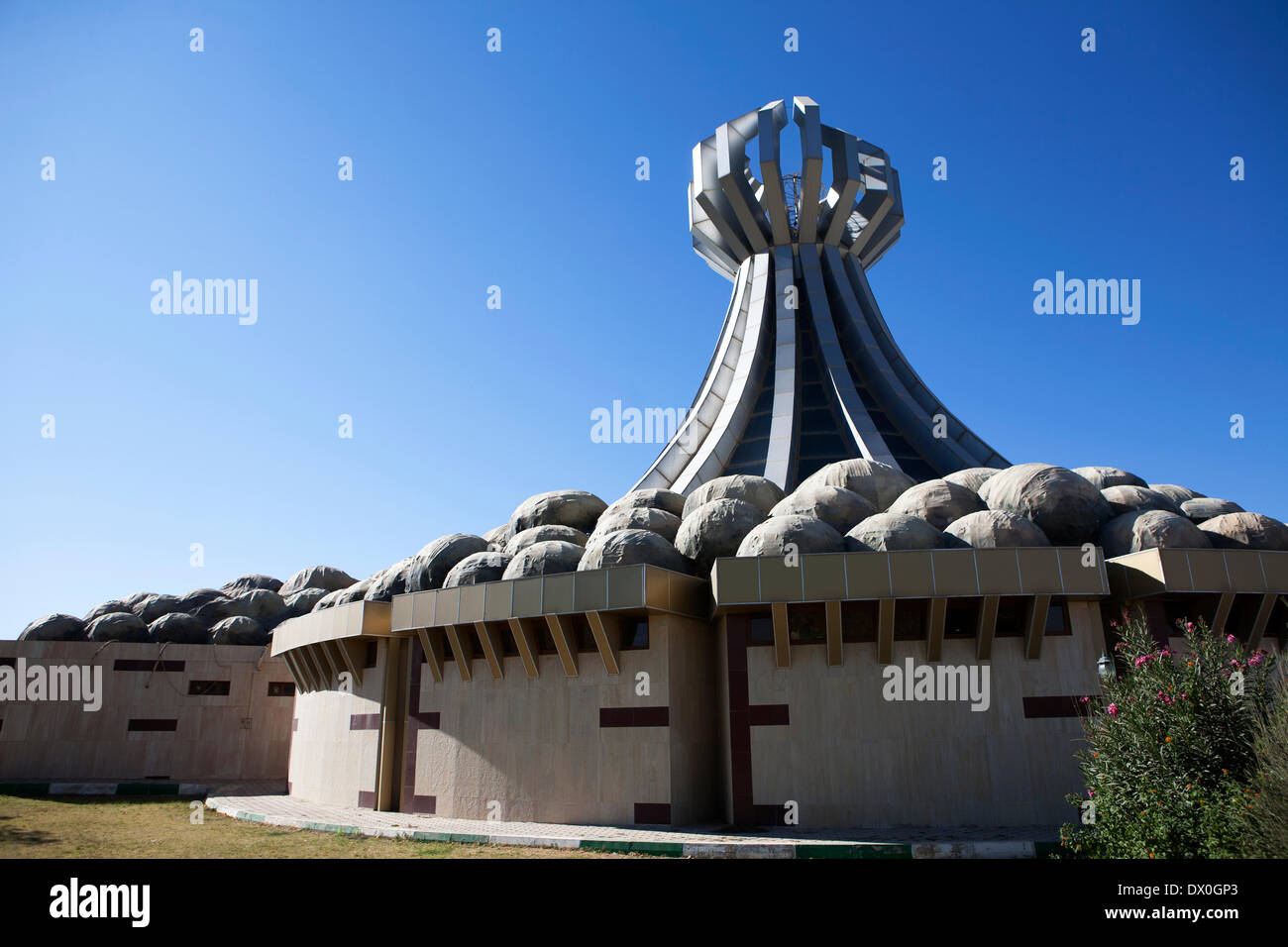 Halabja, Suleimania, IRAQ -- The symbolic cemetery erected for the victims of Halabja massacre on 21 October, 2011. Halabja, a Kurdish town in Northern Iraq was bombed with chemical agents by the Saddam regime in efforts to decimate the Kurdish population in the North on March 16, 1988. Photo by Bikem Ekberzade Stock Photohttps://www.alamy.com/image-license-details/?v=1https://www.alamy.com/halabja-suleimania-iraq-the-symbolic-cemetery-erected-for-the-victims-image67625323.html
Halabja, Suleimania, IRAQ -- The symbolic cemetery erected for the victims of Halabja massacre on 21 October, 2011. Halabja, a Kurdish town in Northern Iraq was bombed with chemical agents by the Saddam regime in efforts to decimate the Kurdish population in the North on March 16, 1988. Photo by Bikem Ekberzade Stock Photohttps://www.alamy.com/image-license-details/?v=1https://www.alamy.com/halabja-suleimania-iraq-the-symbolic-cemetery-erected-for-the-victims-image67625323.htmlRMDX0GP3–Halabja, Suleimania, IRAQ -- The symbolic cemetery erected for the victims of Halabja massacre on 21 October, 2011. Halabja, a Kurdish town in Northern Iraq was bombed with chemical agents by the Saddam regime in efforts to decimate the Kurdish population in the North on March 16, 1988. Photo by Bikem Ekberzade
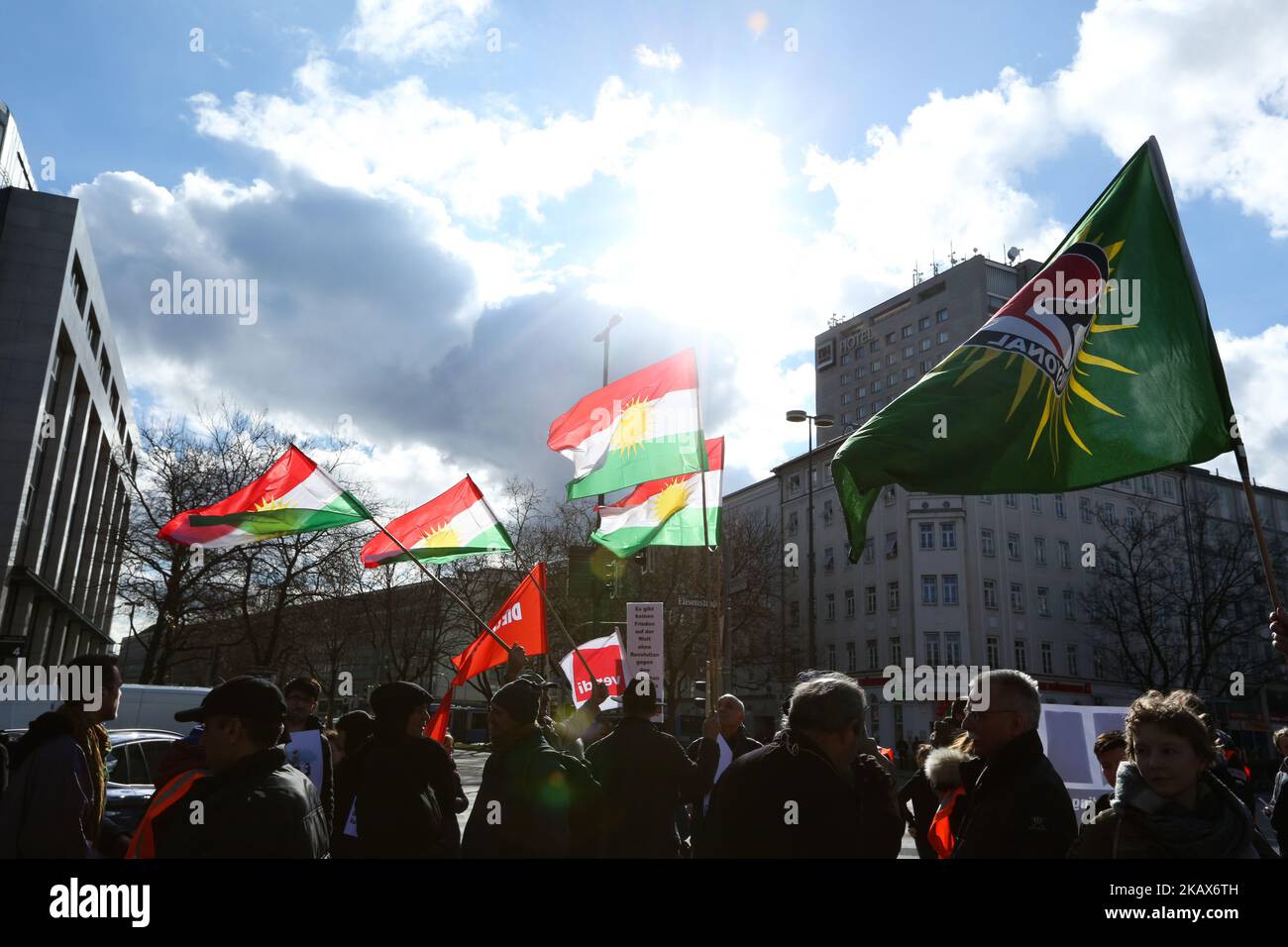 Some kurdish flags in the sky. Hundreds of people demonstrated in Munich, Germany, on 16 March 2018 to remember the chemical attack of Halabja by Sadam Hussein and to protest against Turkey's war on Afrin. The protest stayed very peaceful. (Photo by Alexander Pohl/NurPhoto) Stock Photohttps://www.alamy.com/image-license-details/?v=1https://www.alamy.com/some-kurdish-flags-in-the-sky-hundreds-of-people-demonstrated-in-munich-germany-on-16-march-2018-to-remember-the-chemical-attack-of-halabja-by-sadam-hussein-and-to-protest-against-turkeys-war-on-afrin-the-protest-stayed-very-peaceful-photo-by-alexander-pohlnurphoto-image488613009.html
Some kurdish flags in the sky. Hundreds of people demonstrated in Munich, Germany, on 16 March 2018 to remember the chemical attack of Halabja by Sadam Hussein and to protest against Turkey's war on Afrin. The protest stayed very peaceful. (Photo by Alexander Pohl/NurPhoto) Stock Photohttps://www.alamy.com/image-license-details/?v=1https://www.alamy.com/some-kurdish-flags-in-the-sky-hundreds-of-people-demonstrated-in-munich-germany-on-16-march-2018-to-remember-the-chemical-attack-of-halabja-by-sadam-hussein-and-to-protest-against-turkeys-war-on-afrin-the-protest-stayed-very-peaceful-photo-by-alexander-pohlnurphoto-image488613009.htmlRM2KAX6TH–Some kurdish flags in the sky. Hundreds of people demonstrated in Munich, Germany, on 16 March 2018 to remember the chemical attack of Halabja by Sadam Hussein and to protest against Turkey's war on Afrin. The protest stayed very peaceful. (Photo by Alexander Pohl/NurPhoto)
 A man sits in the graveyard of the victims of the Halabja chemical attack.The 33rd anniversary of the chemical attack carried out by the Iraqi government on March 16, 1988 on the city of Halabja in the Kurdistan Region, which killed nearly 5000 people and injured 10000 most of them civilians. Thousands of the city's residents died in the year following the attack due to health complications and due to diseases and birth defects. Stock Photohttps://www.alamy.com/image-license-details/?v=1https://www.alamy.com/a-man-sits-in-the-graveyard-of-the-victims-of-the-halabja-chemical-attackthe-33rd-anniversary-of-the-chemical-attack-carried-out-by-the-iraqi-government-on-march-16-1988-on-the-city-of-halabja-in-the-kurdistan-region-which-killed-nearly-5000-people-and-injured-10000-most-of-them-civilians-thousands-of-the-citys-residents-died-in-the-year-following-the-attack-due-to-health-complications-and-due-to-diseases-and-birth-defects-image415223344.html
A man sits in the graveyard of the victims of the Halabja chemical attack.The 33rd anniversary of the chemical attack carried out by the Iraqi government on March 16, 1988 on the city of Halabja in the Kurdistan Region, which killed nearly 5000 people and injured 10000 most of them civilians. Thousands of the city's residents died in the year following the attack due to health complications and due to diseases and birth defects. Stock Photohttps://www.alamy.com/image-license-details/?v=1https://www.alamy.com/a-man-sits-in-the-graveyard-of-the-victims-of-the-halabja-chemical-attackthe-33rd-anniversary-of-the-chemical-attack-carried-out-by-the-iraqi-government-on-march-16-1988-on-the-city-of-halabja-in-the-kurdistan-region-which-killed-nearly-5000-people-and-injured-10000-most-of-them-civilians-thousands-of-the-citys-residents-died-in-the-year-following-the-attack-due-to-health-complications-and-due-to-diseases-and-birth-defects-image415223344.htmlRM2F3F1H4–A man sits in the graveyard of the victims of the Halabja chemical attack.The 33rd anniversary of the chemical attack carried out by the Iraqi government on March 16, 1988 on the city of Halabja in the Kurdistan Region, which killed nearly 5000 people and injured 10000 most of them civilians. Thousands of the city's residents died in the year following the attack due to health complications and due to diseases and birth defects.
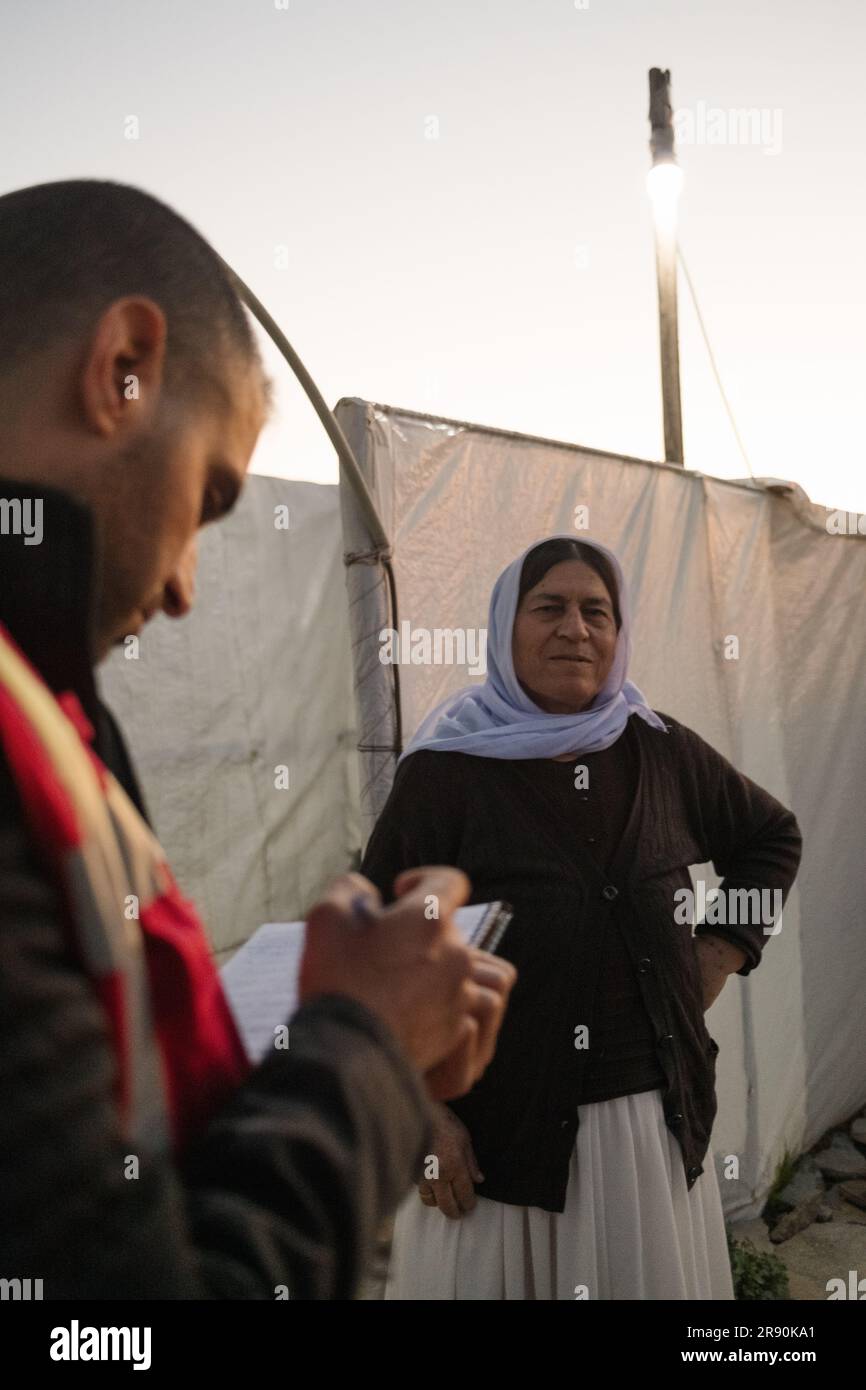 Gabriel Gauffre / Le Pictorium - Bashur - 28/3/2021 - Iraq / Iraqi Kurdistan / Erbil - Assessing the needs of a Yezidi woman in Khanke camp. From the ashes of the 2003 American invasion of Iraq and the toppling of Saddam Hussein's regime, Iraq's Kurds managed to wrestle a form of relative independence. Still technically part of Iraq, Iraqi Kurdistan, in the north of the country, enjoys a heightened level of independence. To the Kurds, it is Bas?r (Bahsur), the southern province of the 4 composing what could one day be their own country, Kurdistan. Bashur is a territory that has all th Stock Photohttps://www.alamy.com/image-license-details/?v=1https://www.alamy.com/gabriel-gauffre-le-pictorium-bashur-2832021-iraq-iraqi-kurdistan-erbil-assessing-the-needs-of-a-yezidi-woman-in-khanke-camp-from-the-ashes-of-the-2003-american-invasion-of-iraq-and-the-toppling-of-saddam-husseins-regime-iraqs-kurds-managed-to-wrestle-a-form-of-relative-independence-still-technically-part-of-iraq-iraqi-kurdistan-in-the-north-of-the-country-enjoys-a-heightened-level-of-independence-to-the-kurds-it-is-basr-bahsur-the-southern-province-of-the-4-composing-what-could-one-day-be-their-own-country-kurdistan-bashur-is-a-territory-that-has-all-th-image556278857.html
Gabriel Gauffre / Le Pictorium - Bashur - 28/3/2021 - Iraq / Iraqi Kurdistan / Erbil - Assessing the needs of a Yezidi woman in Khanke camp. From the ashes of the 2003 American invasion of Iraq and the toppling of Saddam Hussein's regime, Iraq's Kurds managed to wrestle a form of relative independence. Still technically part of Iraq, Iraqi Kurdistan, in the north of the country, enjoys a heightened level of independence. To the Kurds, it is Bas?r (Bahsur), the southern province of the 4 composing what could one day be their own country, Kurdistan. Bashur is a territory that has all th Stock Photohttps://www.alamy.com/image-license-details/?v=1https://www.alamy.com/gabriel-gauffre-le-pictorium-bashur-2832021-iraq-iraqi-kurdistan-erbil-assessing-the-needs-of-a-yezidi-woman-in-khanke-camp-from-the-ashes-of-the-2003-american-invasion-of-iraq-and-the-toppling-of-saddam-husseins-regime-iraqs-kurds-managed-to-wrestle-a-form-of-relative-independence-still-technically-part-of-iraq-iraqi-kurdistan-in-the-north-of-the-country-enjoys-a-heightened-level-of-independence-to-the-kurds-it-is-basr-bahsur-the-southern-province-of-the-4-composing-what-could-one-day-be-their-own-country-kurdistan-bashur-is-a-territory-that-has-all-th-image556278857.htmlRM2R90KA1–Gabriel Gauffre / Le Pictorium - Bashur - 28/3/2021 - Iraq / Iraqi Kurdistan / Erbil - Assessing the needs of a Yezidi woman in Khanke camp. From the ashes of the 2003 American invasion of Iraq and the toppling of Saddam Hussein's regime, Iraq's Kurds managed to wrestle a form of relative independence. Still technically part of Iraq, Iraqi Kurdistan, in the north of the country, enjoys a heightened level of independence. To the Kurds, it is Bas?r (Bahsur), the southern province of the 4 composing what could one day be their own country, Kurdistan. Bashur is a territory that has all th
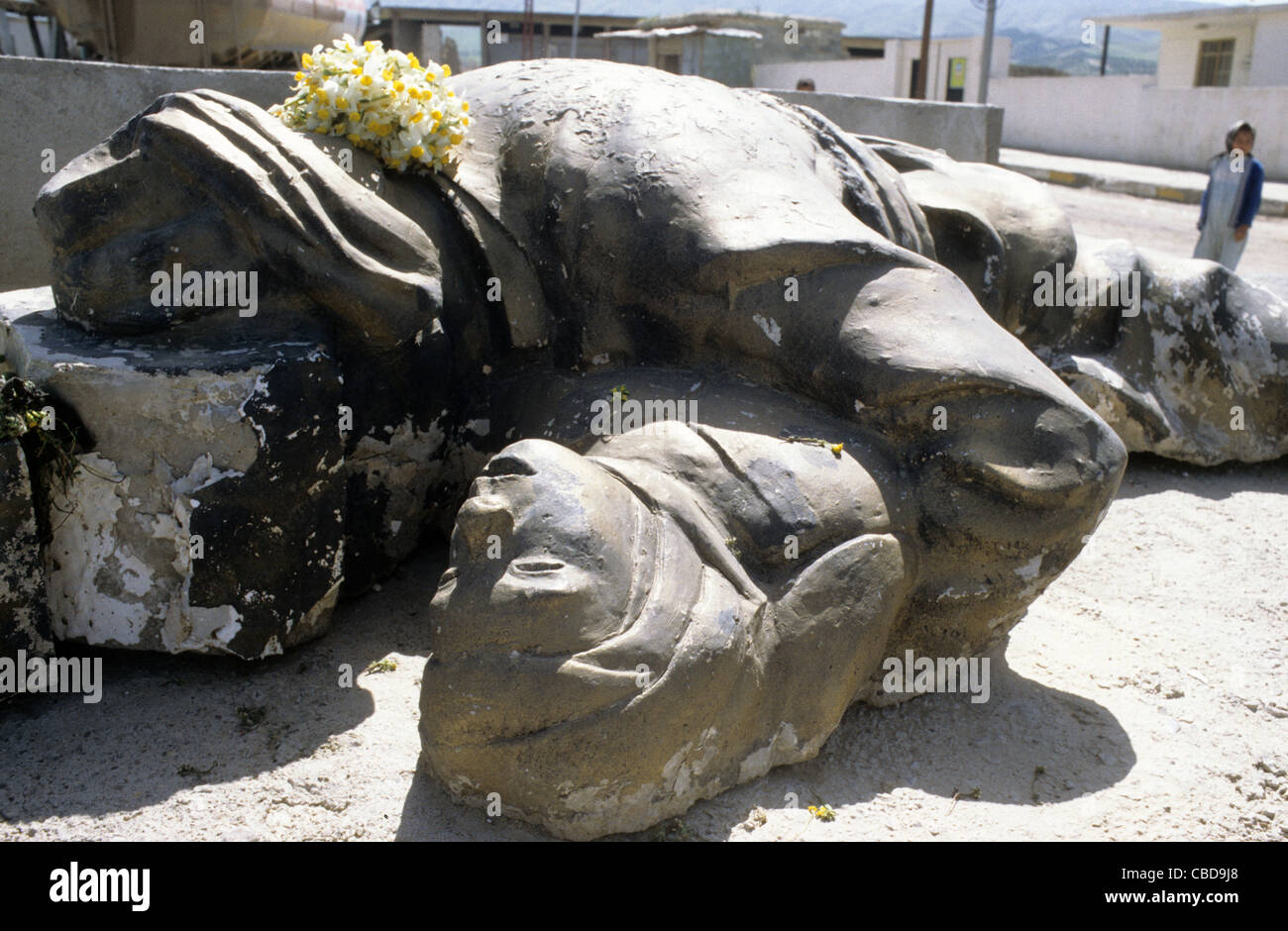 Halabja, Kurdish town bombed with chemical weapons by Saddam Hussein's forces, March 16 1988 killing more than 5,000 Iraq Kurds Stock Photohttps://www.alamy.com/image-license-details/?v=1https://www.alamy.com/stock-photo-halabja-kurdish-town-bombed-with-chemical-weapons-by-saddam-husseins-41474896.html
Halabja, Kurdish town bombed with chemical weapons by Saddam Hussein's forces, March 16 1988 killing more than 5,000 Iraq Kurds Stock Photohttps://www.alamy.com/image-license-details/?v=1https://www.alamy.com/stock-photo-halabja-kurdish-town-bombed-with-chemical-weapons-by-saddam-husseins-41474896.htmlRMCBD9J8–Halabja, Kurdish town bombed with chemical weapons by Saddam Hussein's forces, March 16 1988 killing more than 5,000 Iraq Kurds
 Halabja, Iraq. 16th Mar, 2021. People visiting the Halabja Monument inspect a military vehicle that was used in the chemical attack carried out by the Iraqi government on 16 March 1988 during the closing days of the Iran·Iraq War in the Kurdish city of Halabja, which killed nearly 5000 people and injured about 10000, most of them were civilians. Credit: Ismael Adnan/dpa/Alamy Live News Stock Photohttps://www.alamy.com/image-license-details/?v=1https://www.alamy.com/halabja-iraq-16th-mar-2021-people-visiting-the-halabja-monument-inspect-a-military-vehicle-that-was-used-in-the-chemical-attack-carried-out-by-the-iraqi-government-on-16-march-1988-during-the-closing-days-of-the-iraniraq-war-in-the-kurdish-city-of-halabja-which-killed-nearly-5000-people-and-injured-about-10000-most-of-them-were-civilians-credit-ismael-adnandpaalamy-live-news-image415162999.html
Halabja, Iraq. 16th Mar, 2021. People visiting the Halabja Monument inspect a military vehicle that was used in the chemical attack carried out by the Iraqi government on 16 March 1988 during the closing days of the Iran·Iraq War in the Kurdish city of Halabja, which killed nearly 5000 people and injured about 10000, most of them were civilians. Credit: Ismael Adnan/dpa/Alamy Live News Stock Photohttps://www.alamy.com/image-license-details/?v=1https://www.alamy.com/halabja-iraq-16th-mar-2021-people-visiting-the-halabja-monument-inspect-a-military-vehicle-that-was-used-in-the-chemical-attack-carried-out-by-the-iraqi-government-on-16-march-1988-during-the-closing-days-of-the-iraniraq-war-in-the-kurdish-city-of-halabja-which-killed-nearly-5000-people-and-injured-about-10000-most-of-them-were-civilians-credit-ismael-adnandpaalamy-live-news-image415162999.htmlRM2F3C8HY–Halabja, Iraq. 16th Mar, 2021. People visiting the Halabja Monument inspect a military vehicle that was used in the chemical attack carried out by the Iraqi government on 16 March 1988 during the closing days of the Iran·Iraq War in the Kurdish city of Halabja, which killed nearly 5000 people and injured about 10000, most of them were civilians. Credit: Ismael Adnan/dpa/Alamy Live News
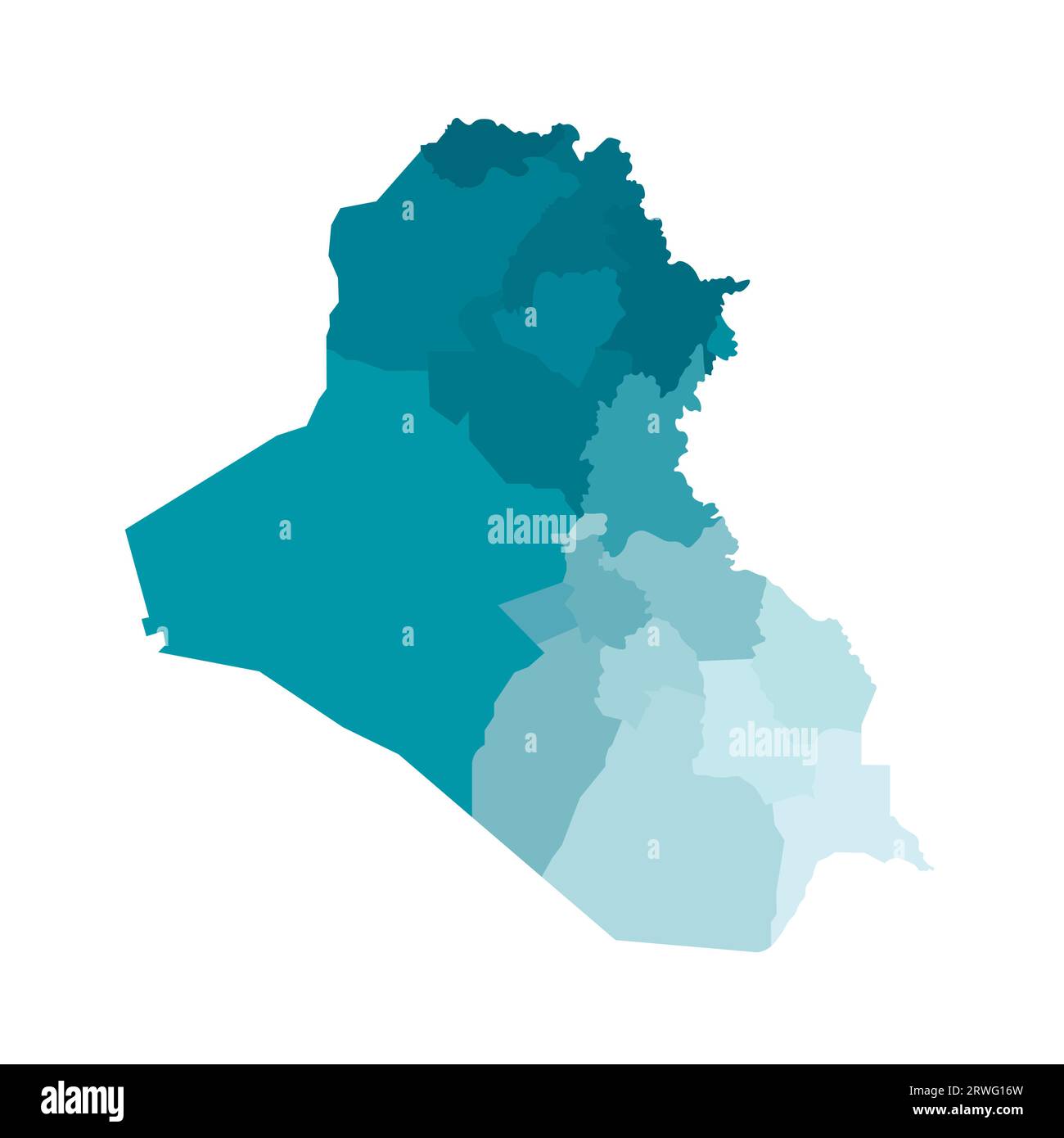 Vector isolated illustration of simplified administrative map of Iraq. Borders of the governorates (regions). Colorful blue khaki silhouettes. Stock Vectorhttps://www.alamy.com/image-license-details/?v=1https://www.alamy.com/vector-isolated-illustration-of-simplified-administrative-map-of-iraq-borders-of-the-governorates-regions-colorful-blue-khaki-silhouettes-image566450385.html
Vector isolated illustration of simplified administrative map of Iraq. Borders of the governorates (regions). Colorful blue khaki silhouettes. Stock Vectorhttps://www.alamy.com/image-license-details/?v=1https://www.alamy.com/vector-isolated-illustration-of-simplified-administrative-map-of-iraq-borders-of-the-governorates-regions-colorful-blue-khaki-silhouettes-image566450385.htmlRF2RWG16W–Vector isolated illustration of simplified administrative map of Iraq. Borders of the governorates (regions). Colorful blue khaki silhouettes.
 Halabja, Iraq. 16th Mar, 2021. A man sits in the graveyard of the victims of the Halabja chemical attack.The 33rd anniversary of the chemical attack carried out by the Iraqi government on March 16, 1988 on the city of Halabja in the Kurdistan Region, which killed nearly 5000 people and injured 10000 most of them civilians. Thousands of the city's residents died in the year following the attack due to health complications and due to diseases and birth defects. (Photo by Ismael Adnan/SOPA Images/Sipa USA) Credit: Sipa USA/Alamy Live News Stock Photohttps://www.alamy.com/image-license-details/?v=1https://www.alamy.com/halabja-iraq-16th-mar-2021-a-man-sits-in-the-graveyard-of-the-victims-of-the-halabja-chemical-attackthe-33rd-anniversary-of-the-chemical-attack-carried-out-by-the-iraqi-government-on-march-16-1988-on-the-city-of-halabja-in-the-kurdistan-region-which-killed-nearly-5000-people-and-injured-10000-most-of-them-civilians-thousands-of-the-citys-residents-died-in-the-year-following-the-attack-due-to-health-complications-and-due-to-diseases-and-birth-defects-photo-by-ismael-adnansopa-imagessipa-usa-credit-sipa-usaalamy-live-news-image415225451.html
Halabja, Iraq. 16th Mar, 2021. A man sits in the graveyard of the victims of the Halabja chemical attack.The 33rd anniversary of the chemical attack carried out by the Iraqi government on March 16, 1988 on the city of Halabja in the Kurdistan Region, which killed nearly 5000 people and injured 10000 most of them civilians. Thousands of the city's residents died in the year following the attack due to health complications and due to diseases and birth defects. (Photo by Ismael Adnan/SOPA Images/Sipa USA) Credit: Sipa USA/Alamy Live News Stock Photohttps://www.alamy.com/image-license-details/?v=1https://www.alamy.com/halabja-iraq-16th-mar-2021-a-man-sits-in-the-graveyard-of-the-victims-of-the-halabja-chemical-attackthe-33rd-anniversary-of-the-chemical-attack-carried-out-by-the-iraqi-government-on-march-16-1988-on-the-city-of-halabja-in-the-kurdistan-region-which-killed-nearly-5000-people-and-injured-10000-most-of-them-civilians-thousands-of-the-citys-residents-died-in-the-year-following-the-attack-due-to-health-complications-and-due-to-diseases-and-birth-defects-photo-by-ismael-adnansopa-imagessipa-usa-credit-sipa-usaalamy-live-news-image415225451.htmlRM2F3F48B–Halabja, Iraq. 16th Mar, 2021. A man sits in the graveyard of the victims of the Halabja chemical attack.The 33rd anniversary of the chemical attack carried out by the Iraqi government on March 16, 1988 on the city of Halabja in the Kurdistan Region, which killed nearly 5000 people and injured 10000 most of them civilians. Thousands of the city's residents died in the year following the attack due to health complications and due to diseases and birth defects. (Photo by Ismael Adnan/SOPA Images/Sipa USA) Credit: Sipa USA/Alamy Live News
 Ensaf Haidar, wife of political prisoner and Saudi internet activist Raif Badawi, watches the 2016 Raif Badawi Awards ceremony at the book fair in Frankfurt am Main, Germany, 19 October 2016. The refugee radio program by broadcaster Dange NWE (New Voice) from Halabja, Iraq, was presented with an award for outstanding achievements with regard to freedom of speech. Photo: Susann Prautsch/dpa Stock Photohttps://www.alamy.com/image-license-details/?v=1https://www.alamy.com/stock-photo-ensaf-haidar-wife-of-political-prisoner-and-saudi-internet-activist-123877908.html
Ensaf Haidar, wife of political prisoner and Saudi internet activist Raif Badawi, watches the 2016 Raif Badawi Awards ceremony at the book fair in Frankfurt am Main, Germany, 19 October 2016. The refugee radio program by broadcaster Dange NWE (New Voice) from Halabja, Iraq, was presented with an award for outstanding achievements with regard to freedom of speech. Photo: Susann Prautsch/dpa Stock Photohttps://www.alamy.com/image-license-details/?v=1https://www.alamy.com/stock-photo-ensaf-haidar-wife-of-political-prisoner-and-saudi-internet-activist-123877908.htmlRMH5F3F0–Ensaf Haidar, wife of political prisoner and Saudi internet activist Raif Badawi, watches the 2016 Raif Badawi Awards ceremony at the book fair in Frankfurt am Main, Germany, 19 October 2016. The refugee radio program by broadcaster Dange NWE (New Voice) from Halabja, Iraq, was presented with an award for outstanding achievements with regard to freedom of speech. Photo: Susann Prautsch/dpa
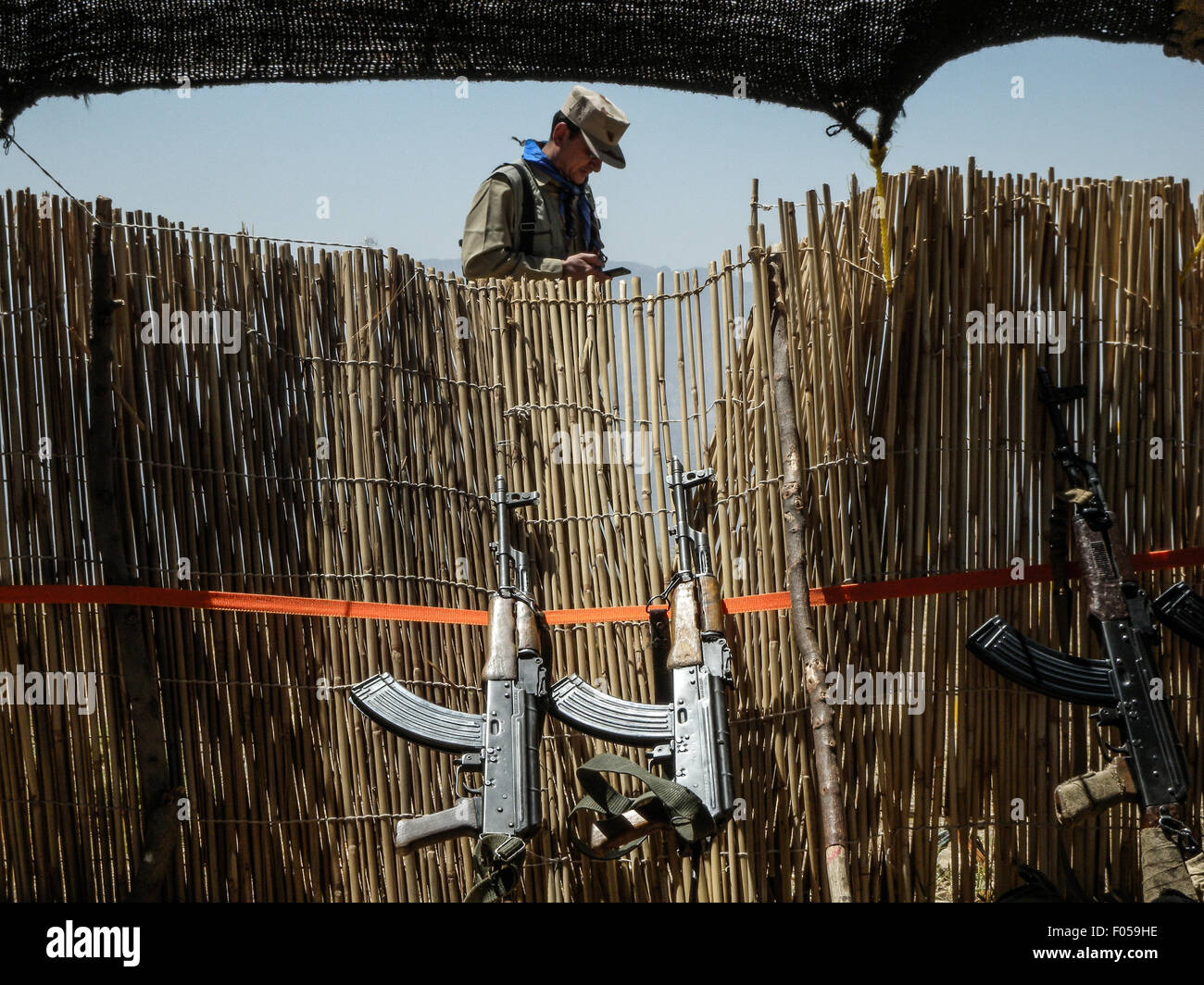 Arbil, Iraq. 07th Aug, 2015. PDKI movement is in the Iran's border that was 1 kilometers away from the Iran troops and were the Peshmerga stays. As the Iran's official declaration on the TV, they talk about how it affects the Iran army in Head office in Qandil Mount with 5000 troops and 100 tanks logistic from Piranshahr border who were spying whenever someone will pass the border will get killed. Credit: Jawdat Ahmad/Pacific Press/Alamy Live News Stock Photohttps://www.alamy.com/image-license-details/?v=1https://www.alamy.com/stock-photo-arbil-iraq-07th-aug-2015-pdki-movement-is-in-the-irans-border-that-86169146.html
Arbil, Iraq. 07th Aug, 2015. PDKI movement is in the Iran's border that was 1 kilometers away from the Iran troops and were the Peshmerga stays. As the Iran's official declaration on the TV, they talk about how it affects the Iran army in Head office in Qandil Mount with 5000 troops and 100 tanks logistic from Piranshahr border who were spying whenever someone will pass the border will get killed. Credit: Jawdat Ahmad/Pacific Press/Alamy Live News Stock Photohttps://www.alamy.com/image-license-details/?v=1https://www.alamy.com/stock-photo-arbil-iraq-07th-aug-2015-pdki-movement-is-in-the-irans-border-that-86169146.htmlRMF059HE–Arbil, Iraq. 07th Aug, 2015. PDKI movement is in the Iran's border that was 1 kilometers away from the Iran troops and were the Peshmerga stays. As the Iran's official declaration on the TV, they talk about how it affects the Iran army in Head office in Qandil Mount with 5000 troops and 100 tanks logistic from Piranshahr border who were spying whenever someone will pass the border will get killed. Credit: Jawdat Ahmad/Pacific Press/Alamy Live News
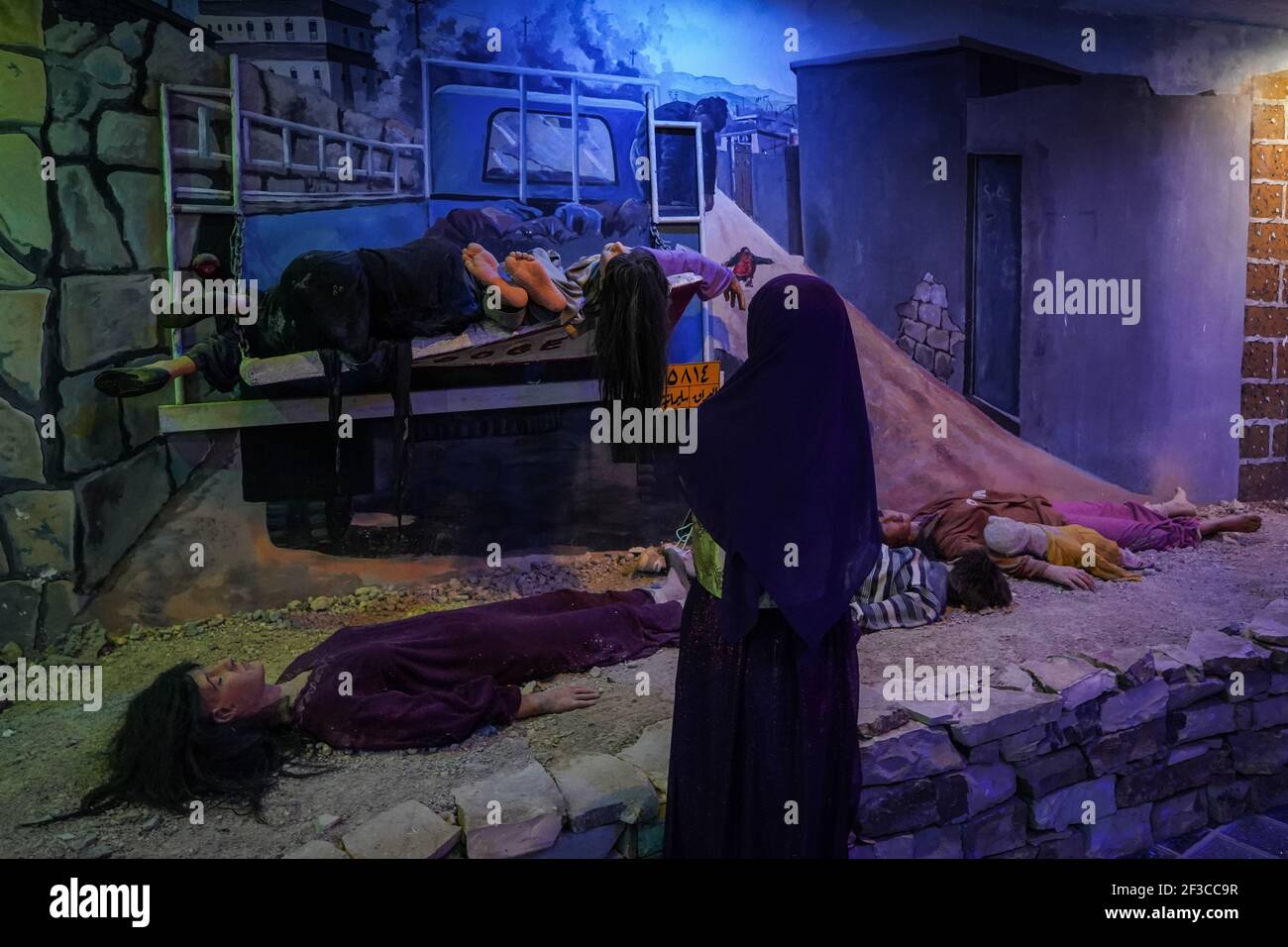 Halabja, Iraq. 16th Mar, 2021. A visitor of the Halabja Monument looks at a re-enactment scene of people who died in the chemical attack carried out by the Iraqi government on 16 March 1988 during the closing days of the Iran·Iraq War in the Kurdish city of Halabja, which killed nearly 5000 people and injured about 10000, most of them were civilians. Credit: Ismael Adnan/dpa/Alamy Live News Stock Photohttps://www.alamy.com/image-license-details/?v=1https://www.alamy.com/halabja-iraq-16th-mar-2021-a-visitor-of-the-halabja-monument-looks-at-a-re-enactment-scene-of-people-who-died-in-the-chemical-attack-carried-out-by-the-iraqi-government-on-16-march-1988-during-the-closing-days-of-the-iraniraq-war-in-the-kurdish-city-of-halabja-which-killed-nearly-5000-people-and-injured-about-10000-most-of-them-were-civilians-credit-ismael-adnandpaalamy-live-news-image415165907.html
Halabja, Iraq. 16th Mar, 2021. A visitor of the Halabja Monument looks at a re-enactment scene of people who died in the chemical attack carried out by the Iraqi government on 16 March 1988 during the closing days of the Iran·Iraq War in the Kurdish city of Halabja, which killed nearly 5000 people and injured about 10000, most of them were civilians. Credit: Ismael Adnan/dpa/Alamy Live News Stock Photohttps://www.alamy.com/image-license-details/?v=1https://www.alamy.com/halabja-iraq-16th-mar-2021-a-visitor-of-the-halabja-monument-looks-at-a-re-enactment-scene-of-people-who-died-in-the-chemical-attack-carried-out-by-the-iraqi-government-on-16-march-1988-during-the-closing-days-of-the-iraniraq-war-in-the-kurdish-city-of-halabja-which-killed-nearly-5000-people-and-injured-about-10000-most-of-them-were-civilians-credit-ismael-adnandpaalamy-live-news-image415165907.htmlRM2F3CC9R–Halabja, Iraq. 16th Mar, 2021. A visitor of the Halabja Monument looks at a re-enactment scene of people who died in the chemical attack carried out by the Iraqi government on 16 March 1988 during the closing days of the Iran·Iraq War in the Kurdish city of Halabja, which killed nearly 5000 people and injured about 10000, most of them were civilians. Credit: Ismael Adnan/dpa/Alamy Live News
![Duesseldorf, DEU, 09.06.1991 - Kurdish demonstration. Kurds commemorate the poison gas deaths in Halabja. The poison gas attack on Halabja was an attack by the Iraqi Air Force on the Kurdish-inhabited Iraqi city of Halabja in what is now the autonomous region of Kurdistan. The attack, which took place on March 16, 1988 near the end of the First Gulf War, killed between 3200 and 5000 people. [automated translation] Stock Photo Duesseldorf, DEU, 09.06.1991 - Kurdish demonstration. Kurds commemorate the poison gas deaths in Halabja. The poison gas attack on Halabja was an attack by the Iraqi Air Force on the Kurdish-inhabited Iraqi city of Halabja in what is now the autonomous region of Kurdistan. The attack, which took place on March 16, 1988 near the end of the First Gulf War, killed between 3200 and 5000 people. [automated translation] Stock Photo](https://c8.alamy.com/comp/2J5CNNK/duesseldorf-deu-09061991-kurdish-demonstration-kurds-commemorate-the-poison-gas-deaths-in-halabja-the-poison-gas-attack-on-halabja-was-an-attack-by-the-iraqi-air-force-on-the-kurdish-inhabited-iraqi-city-of-halabja-in-what-is-now-the-autonomous-region-of-kurdistan-the-attack-which-took-place-on-march-16-1988-near-the-end-of-the-first-gulf-war-killed-between-3200-and-5000-people-automated-translation-2J5CNNK.jpg) Duesseldorf, DEU, 09.06.1991 - Kurdish demonstration. Kurds commemorate the poison gas deaths in Halabja. The poison gas attack on Halabja was an attack by the Iraqi Air Force on the Kurdish-inhabited Iraqi city of Halabja in what is now the autonomous region of Kurdistan. The attack, which took place on March 16, 1988 near the end of the First Gulf War, killed between 3200 and 5000 people. [automated translation] Stock Photohttps://www.alamy.com/image-license-details/?v=1https://www.alamy.com/duesseldorf-deu-09061991-kurdish-demonstration-kurds-commemorate-the-poison-gas-deaths-in-halabja-the-poison-gas-attack-on-halabja-was-an-attack-by-the-iraqi-air-force-on-the-kurdish-inhabited-iraqi-city-of-halabja-in-what-is-now-the-autonomous-region-of-kurdistan-the-attack-which-took-place-on-march-16-1988-near-the-end-of-the-first-gulf-war-killed-between-3200-and-5000-people-automated-translation-image468033711.html
Duesseldorf, DEU, 09.06.1991 - Kurdish demonstration. Kurds commemorate the poison gas deaths in Halabja. The poison gas attack on Halabja was an attack by the Iraqi Air Force on the Kurdish-inhabited Iraqi city of Halabja in what is now the autonomous region of Kurdistan. The attack, which took place on March 16, 1988 near the end of the First Gulf War, killed between 3200 and 5000 people. [automated translation] Stock Photohttps://www.alamy.com/image-license-details/?v=1https://www.alamy.com/duesseldorf-deu-09061991-kurdish-demonstration-kurds-commemorate-the-poison-gas-deaths-in-halabja-the-poison-gas-attack-on-halabja-was-an-attack-by-the-iraqi-air-force-on-the-kurdish-inhabited-iraqi-city-of-halabja-in-what-is-now-the-autonomous-region-of-kurdistan-the-attack-which-took-place-on-march-16-1988-near-the-end-of-the-first-gulf-war-killed-between-3200-and-5000-people-automated-translation-image468033711.htmlRM2J5CNNK–Duesseldorf, DEU, 09.06.1991 - Kurdish demonstration. Kurds commemorate the poison gas deaths in Halabja. The poison gas attack on Halabja was an attack by the Iraqi Air Force on the Kurdish-inhabited Iraqi city of Halabja in what is now the autonomous region of Kurdistan. The attack, which took place on March 16, 1988 near the end of the First Gulf War, killed between 3200 and 5000 people. [automated translation]
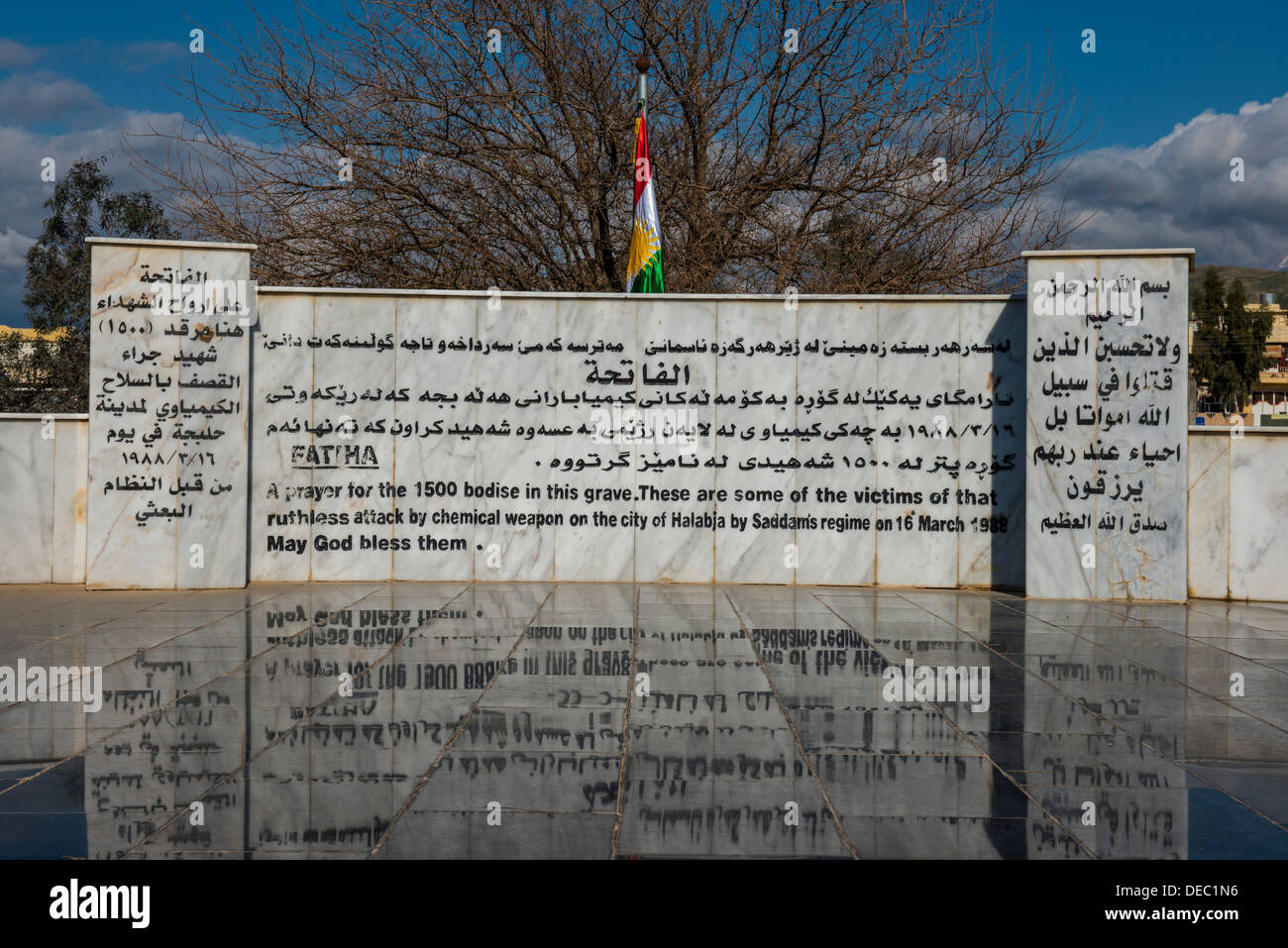 Mass grave on Halabja cemetery, Halabja, Iraqi Kurdistan, Iraq Stock Photohttps://www.alamy.com/image-license-details/?v=1https://www.alamy.com/mass-grave-on-halabja-cemetery-halabja-iraqi-kurdistan-iraq-image60501090.html
Mass grave on Halabja cemetery, Halabja, Iraqi Kurdistan, Iraq Stock Photohttps://www.alamy.com/image-license-details/?v=1https://www.alamy.com/mass-grave-on-halabja-cemetery-halabja-iraqi-kurdistan-iraq-image60501090.htmlRMDEC1N6–Mass grave on Halabja cemetery, Halabja, Iraqi Kurdistan, Iraq
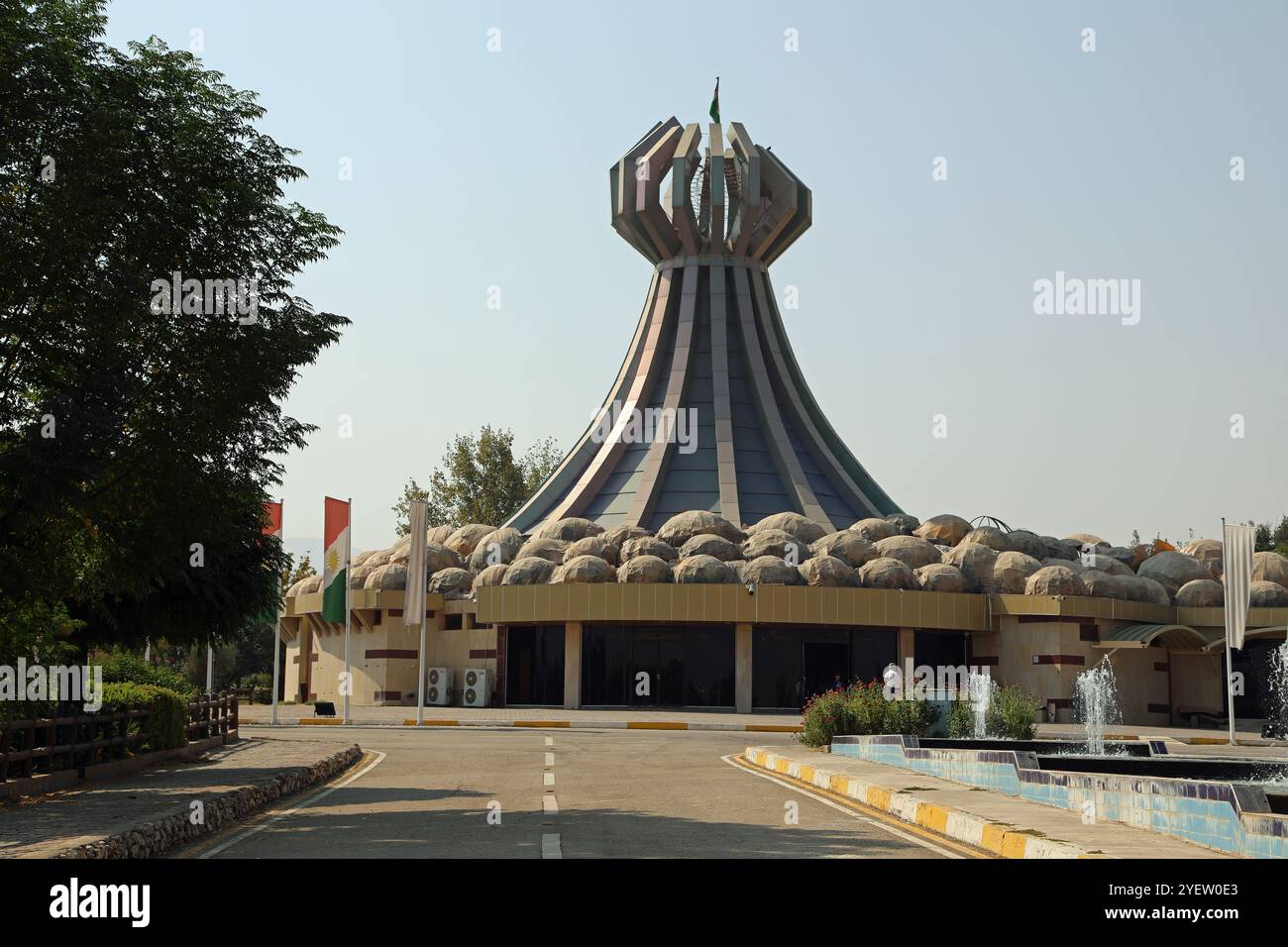 Halabja Memorial Monument in Iraqi Kurdistan Stock Photohttps://www.alamy.com/image-license-details/?v=1https://www.alamy.com/halabja-memorial-monument-in-iraqi-kurdistan-image628727627.html
Halabja Memorial Monument in Iraqi Kurdistan Stock Photohttps://www.alamy.com/image-license-details/?v=1https://www.alamy.com/halabja-memorial-monument-in-iraqi-kurdistan-image628727627.htmlRM2YEW0E3–Halabja Memorial Monument in Iraqi Kurdistan
 Bildnummer: 51180815 Datum: 04.04.2006 Copyright: imago/Xinhua Skulptur auf einem Friedhof in Halabja - Nordirak - PUBLICATIONxNOTxINxCHN, Objekte , Landschaft; 2006, Halabja, Friedhöfe, Statue, Statuen, Skulptur, Skulpturen, Figur, Figuren,; , hoch, Kbdig, Einzelbild, Freisteller, Irak, , Stock Photohttps://www.alamy.com/image-license-details/?v=1https://www.alamy.com/bildnummer-51180815-datum-04042006-copyright-imagoxinhua-skulptur-auf-einem-friedhof-in-halabja-nordirak-publicationxnotxinxchn-objekte-landschaft-2006-halabja-friedhfe-statue-statuen-skulptur-skulpturen-figur-figuren-hoch-kbdig-einzelbild-freisteller-irak-image562291436.html
Bildnummer: 51180815 Datum: 04.04.2006 Copyright: imago/Xinhua Skulptur auf einem Friedhof in Halabja - Nordirak - PUBLICATIONxNOTxINxCHN, Objekte , Landschaft; 2006, Halabja, Friedhöfe, Statue, Statuen, Skulptur, Skulpturen, Figur, Figuren,; , hoch, Kbdig, Einzelbild, Freisteller, Irak, , Stock Photohttps://www.alamy.com/image-license-details/?v=1https://www.alamy.com/bildnummer-51180815-datum-04042006-copyright-imagoxinhua-skulptur-auf-einem-friedhof-in-halabja-nordirak-publicationxnotxinxchn-objekte-landschaft-2006-halabja-friedhfe-statue-statuen-skulptur-skulpturen-figur-figuren-hoch-kbdig-einzelbild-freisteller-irak-image562291436.htmlRM2RJPGD0–Bildnummer: 51180815 Datum: 04.04.2006 Copyright: imago/Xinhua Skulptur auf einem Friedhof in Halabja - Nordirak - PUBLICATIONxNOTxINxCHN, Objekte , Landschaft; 2006, Halabja, Friedhöfe, Statue, Statuen, Skulptur, Skulpturen, Figur, Figuren,; , hoch, Kbdig, Einzelbild, Freisteller, Irak, ,